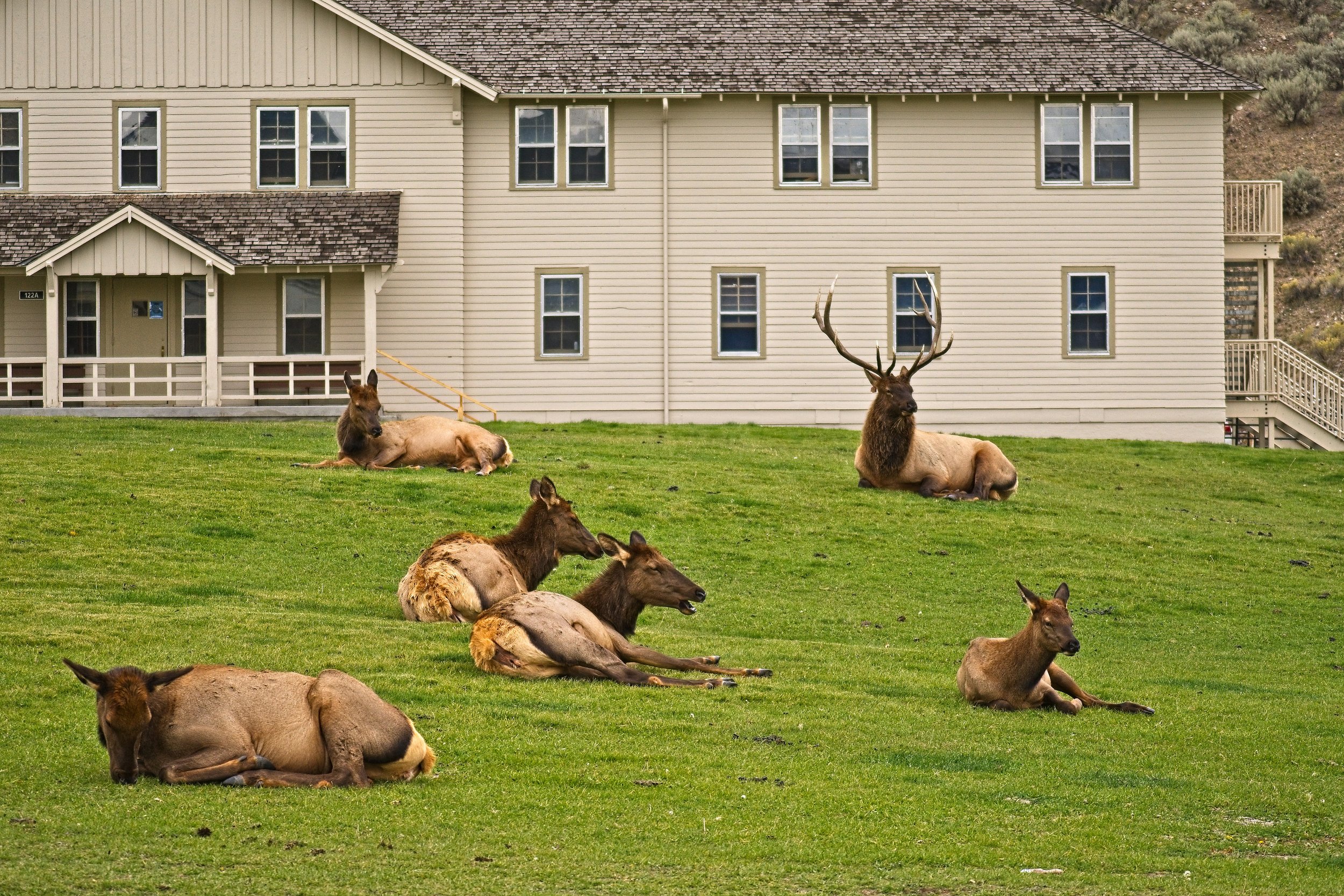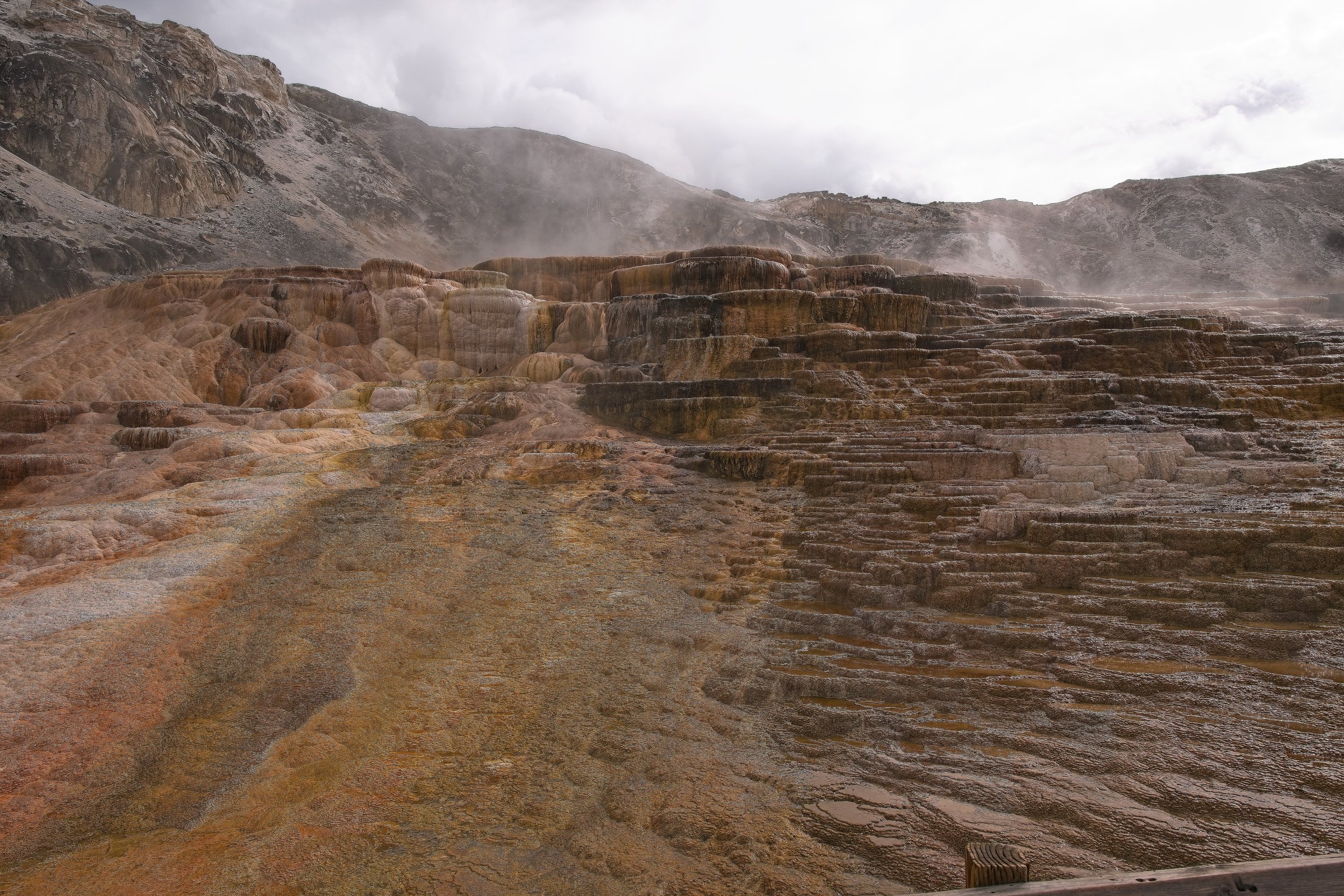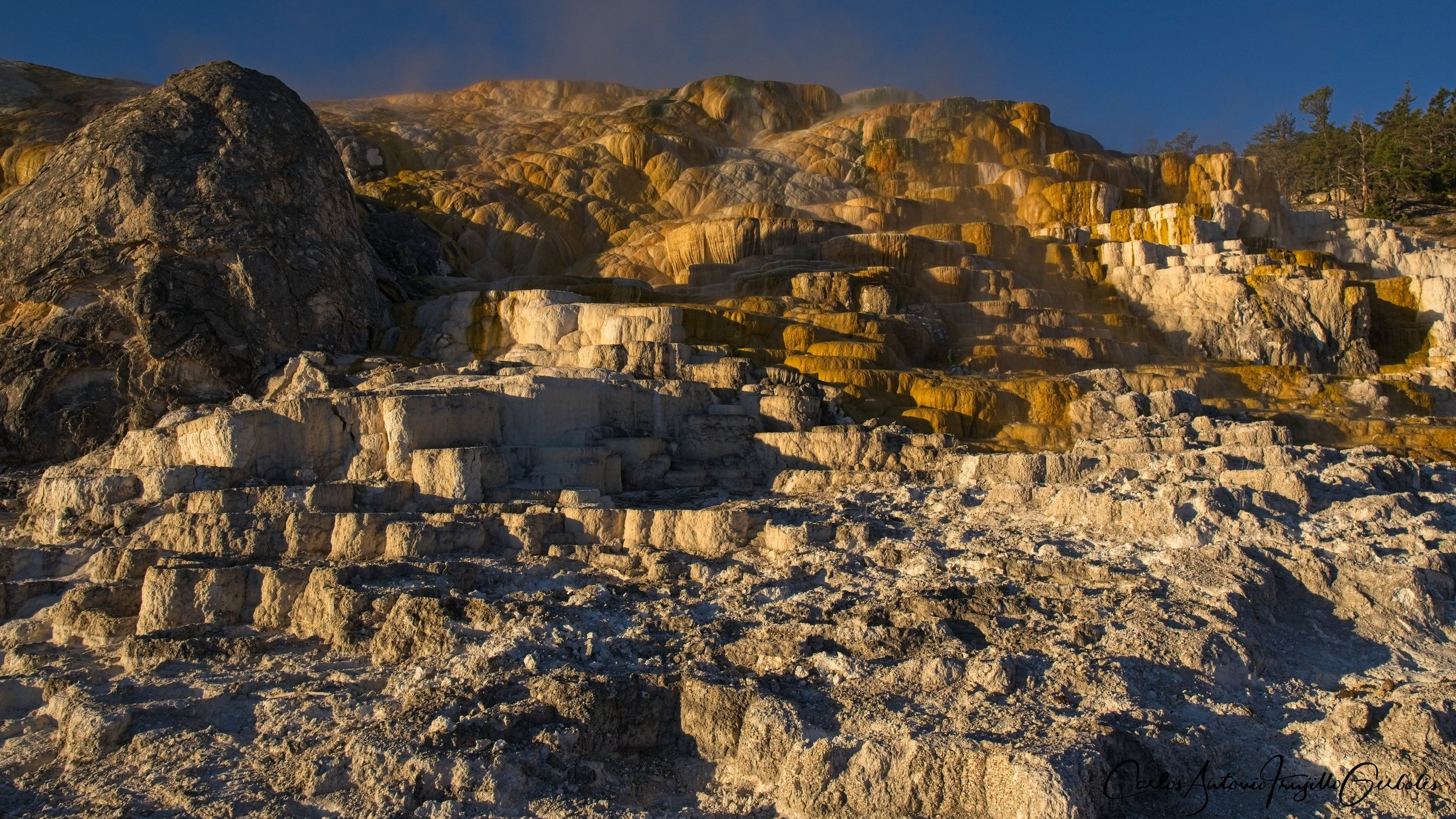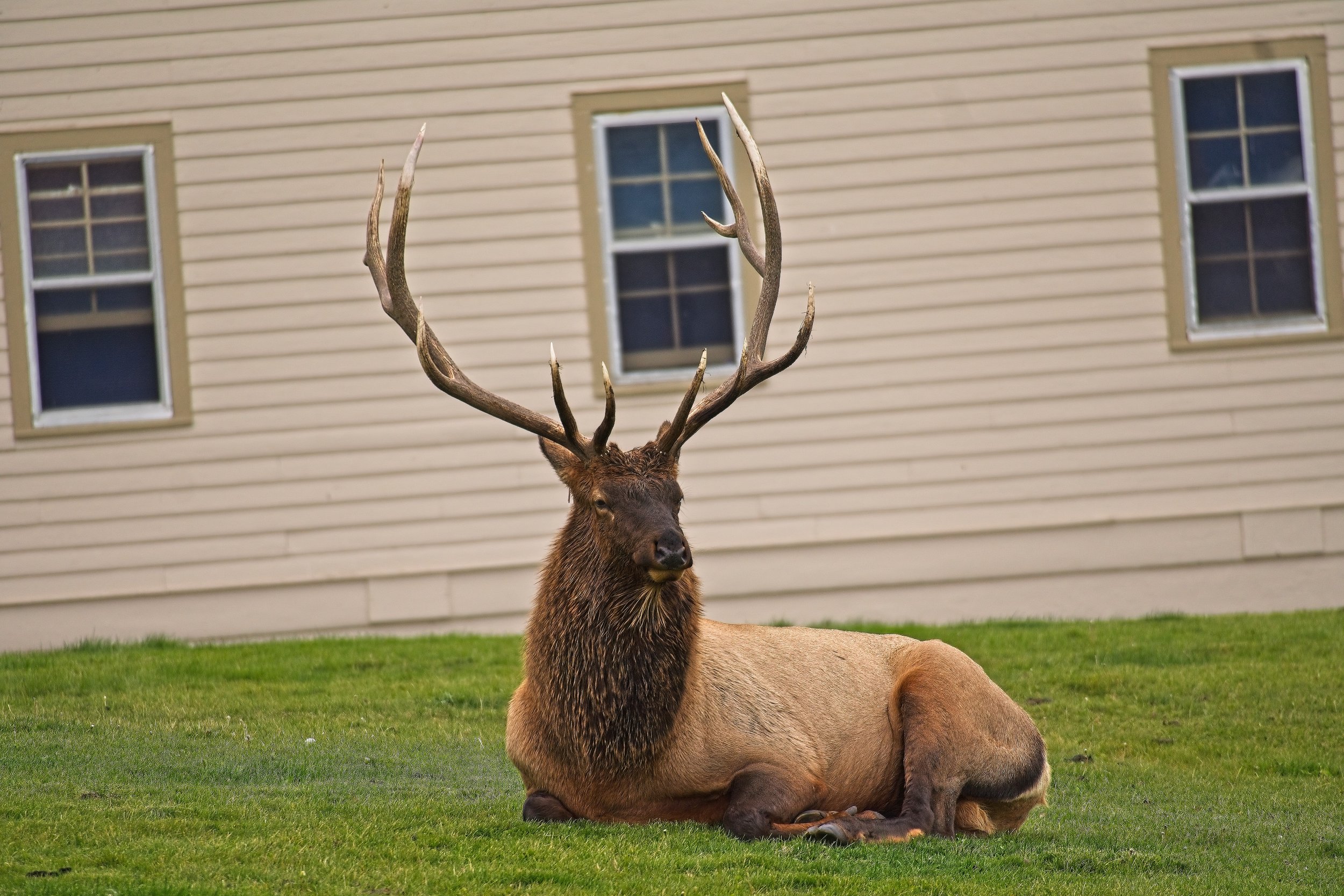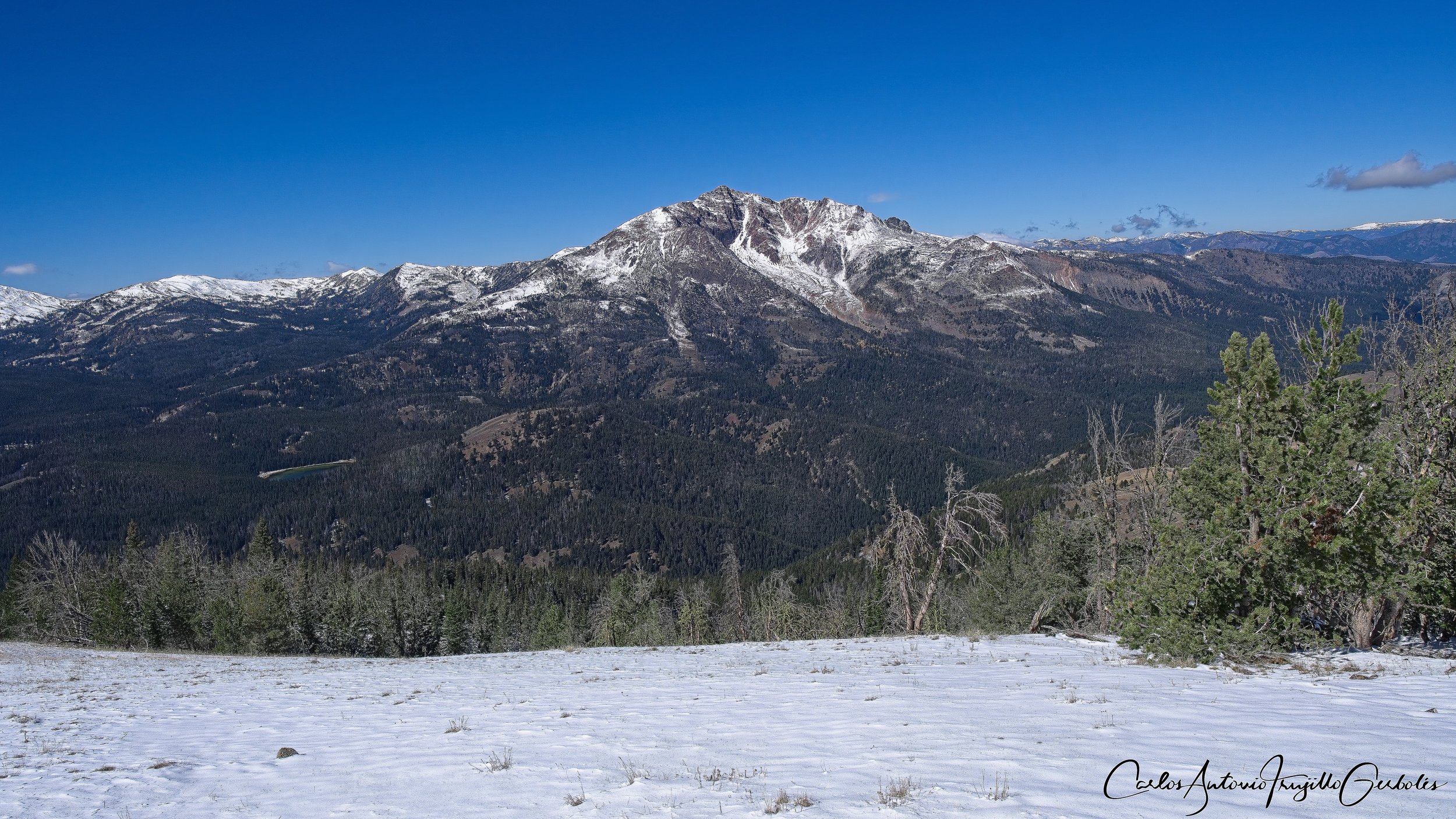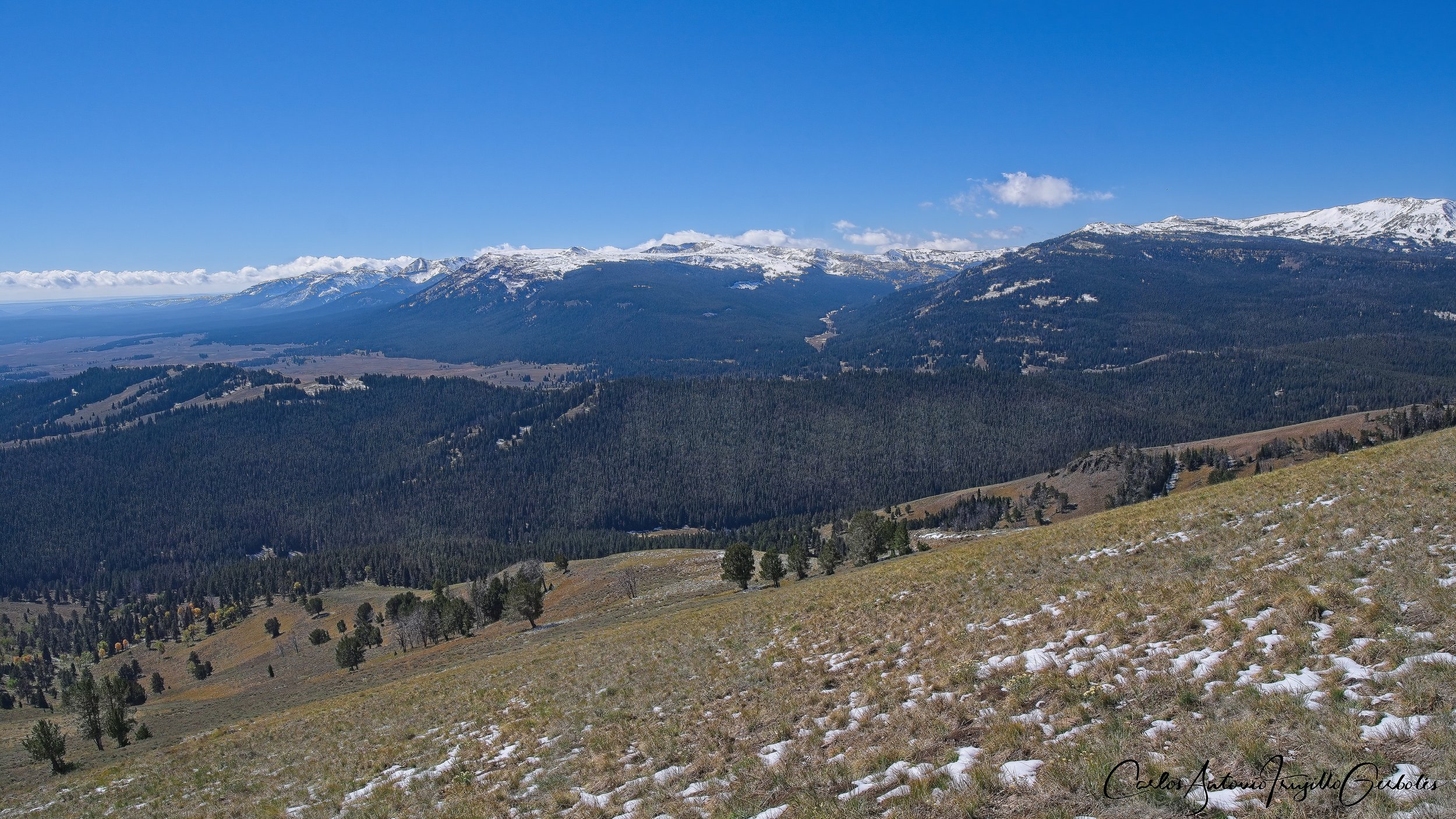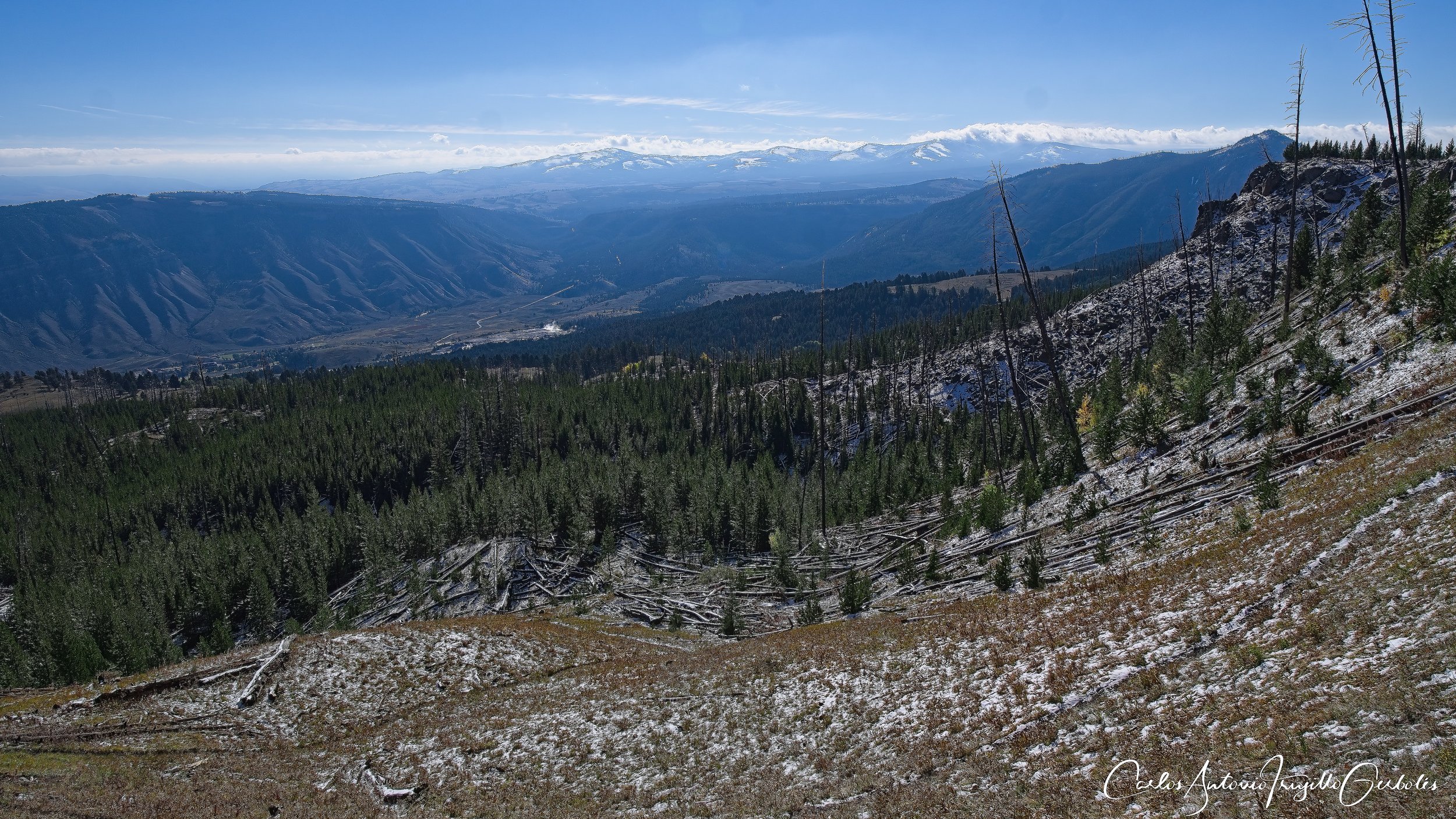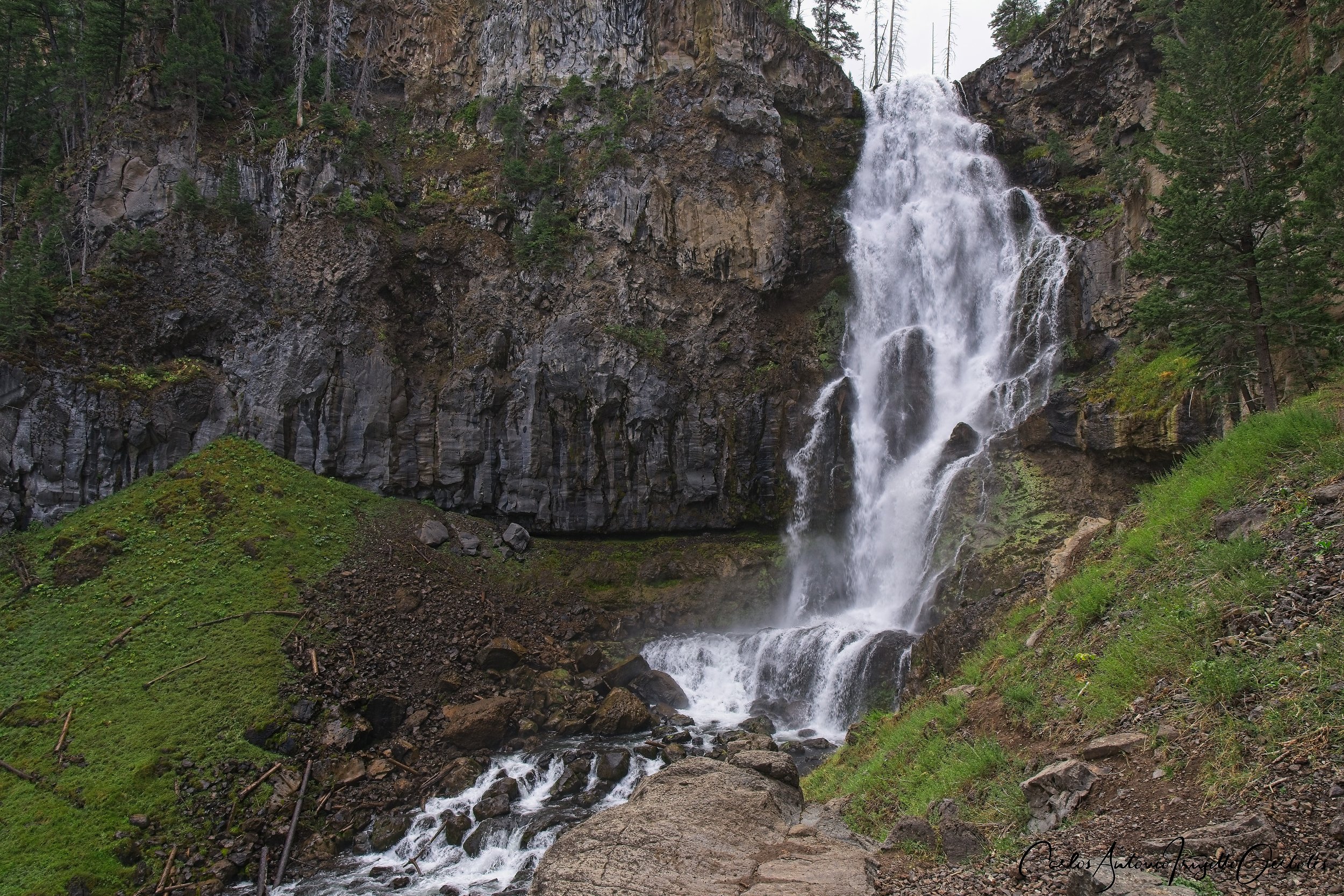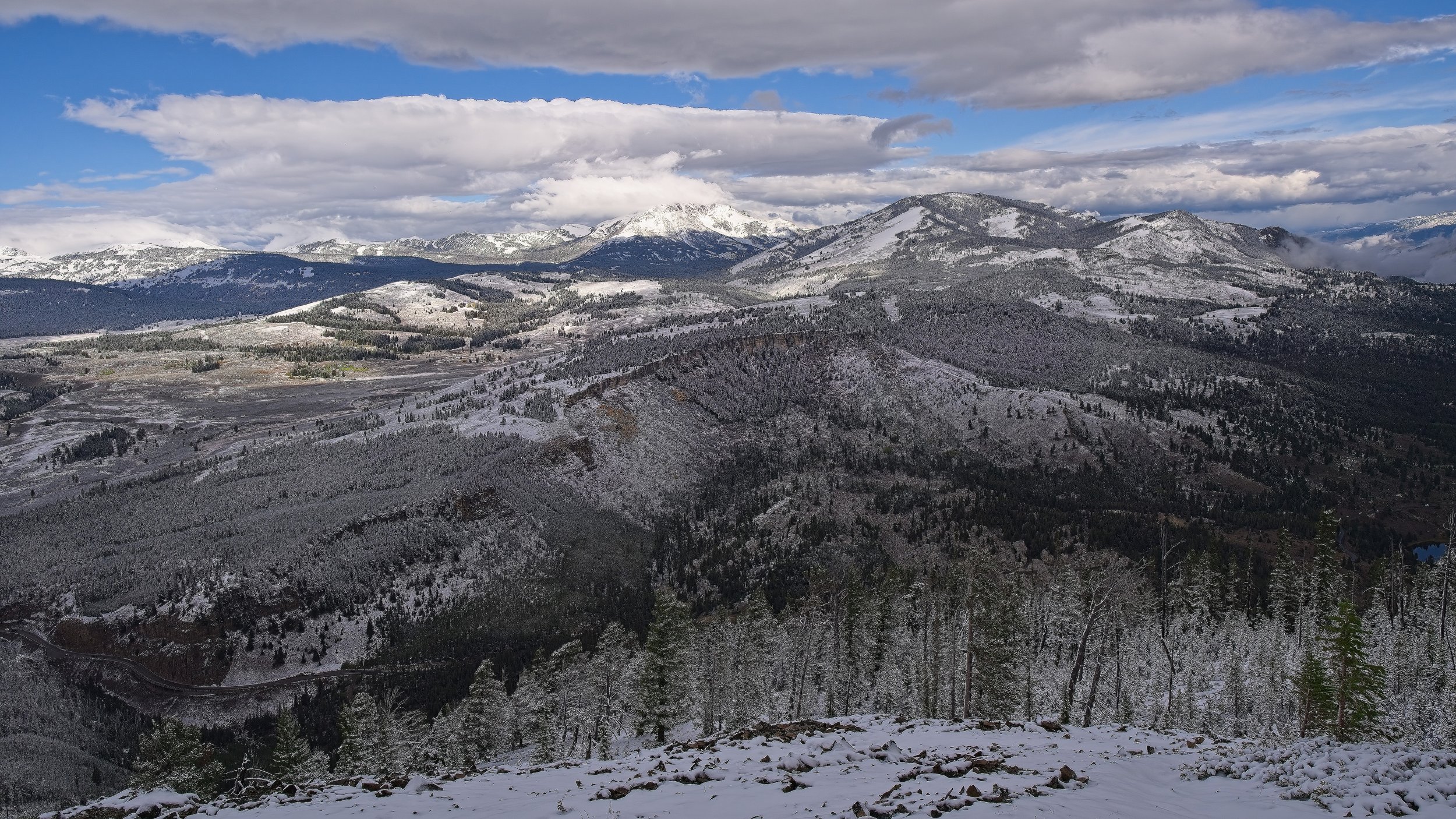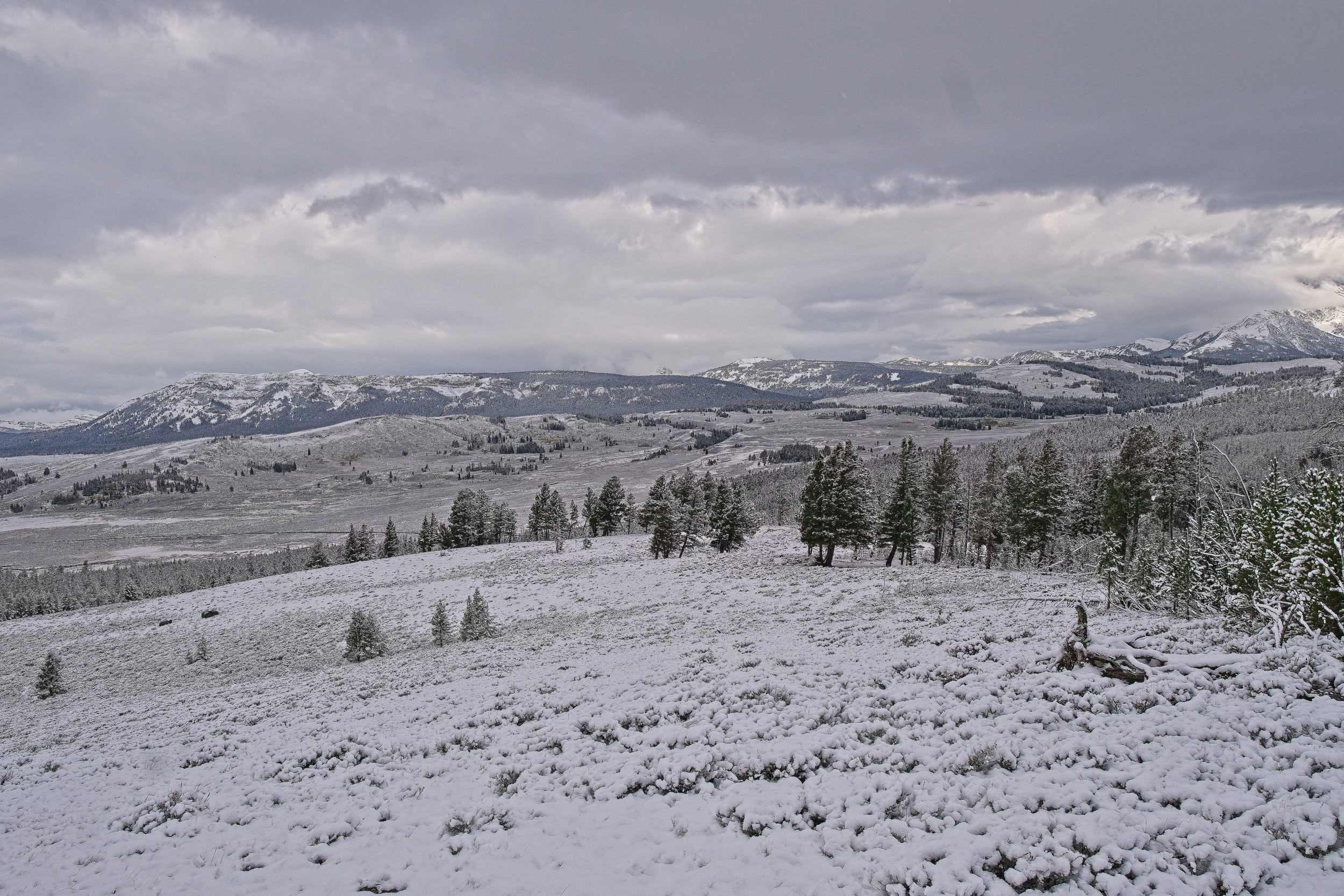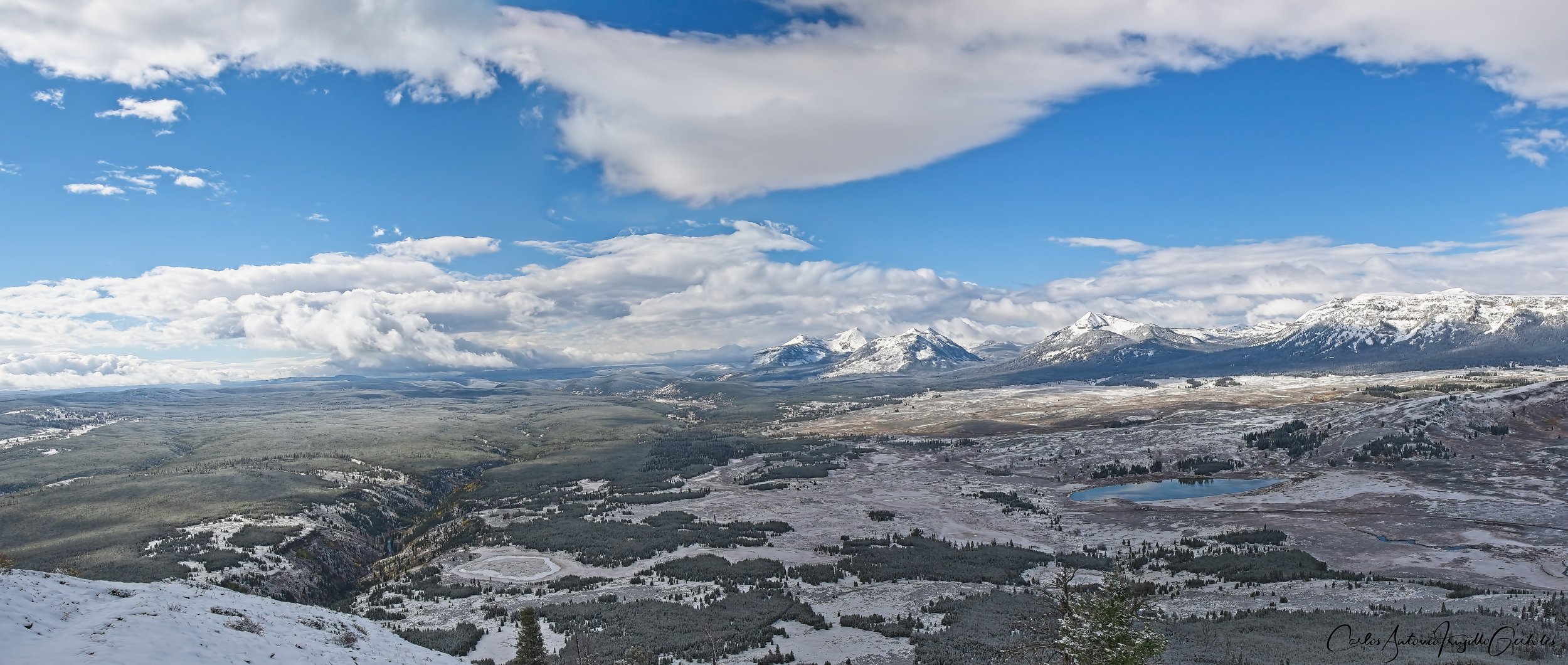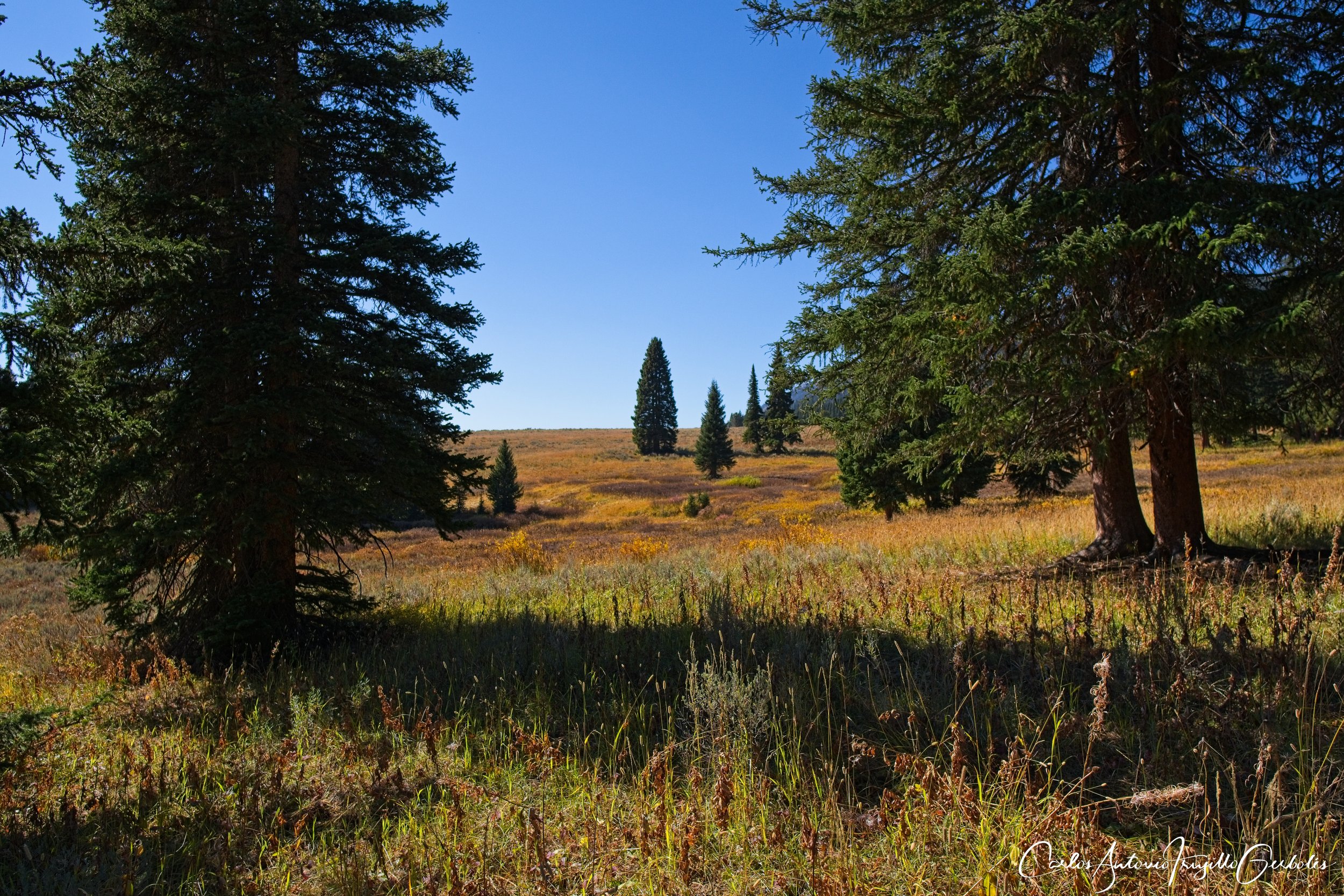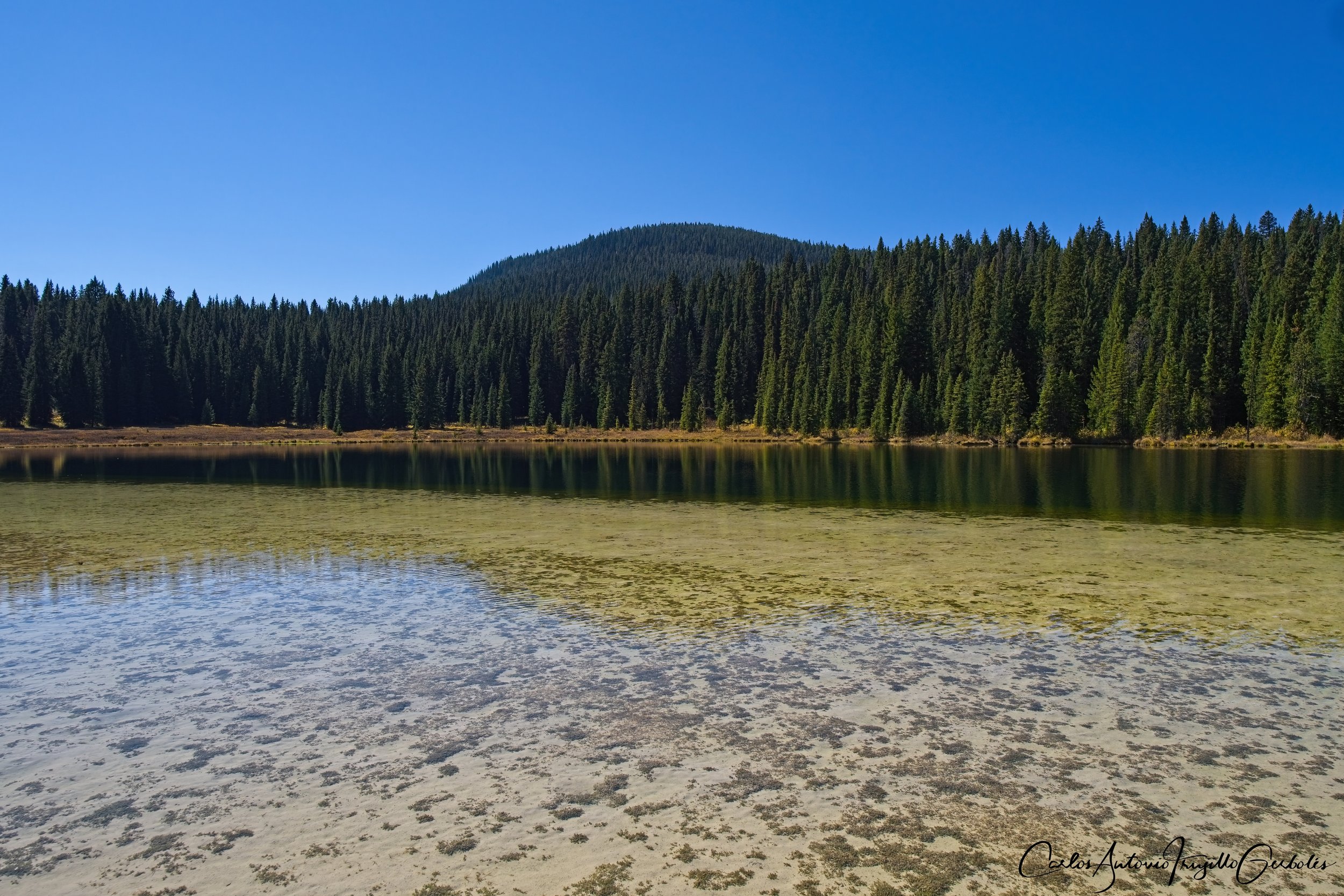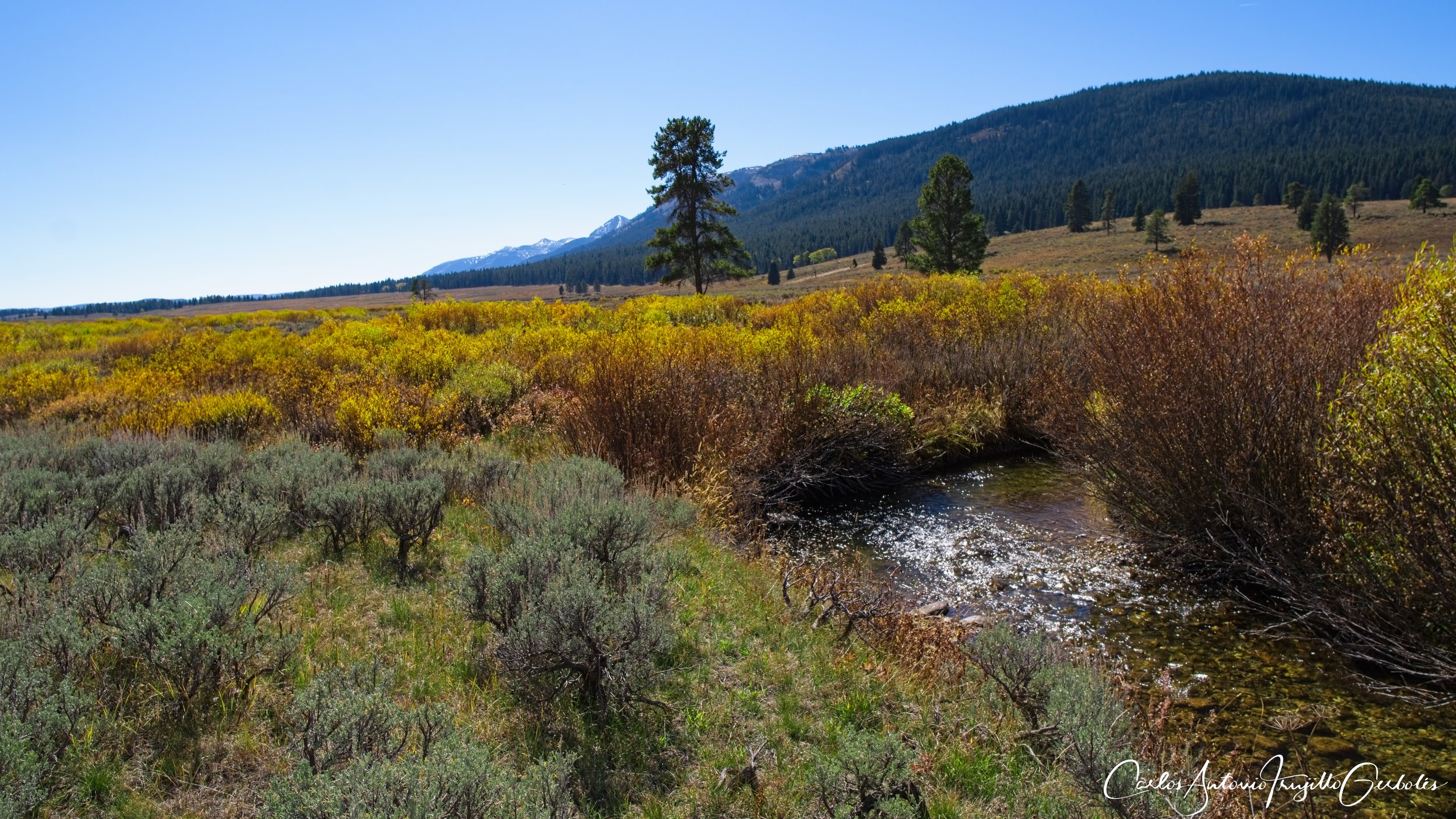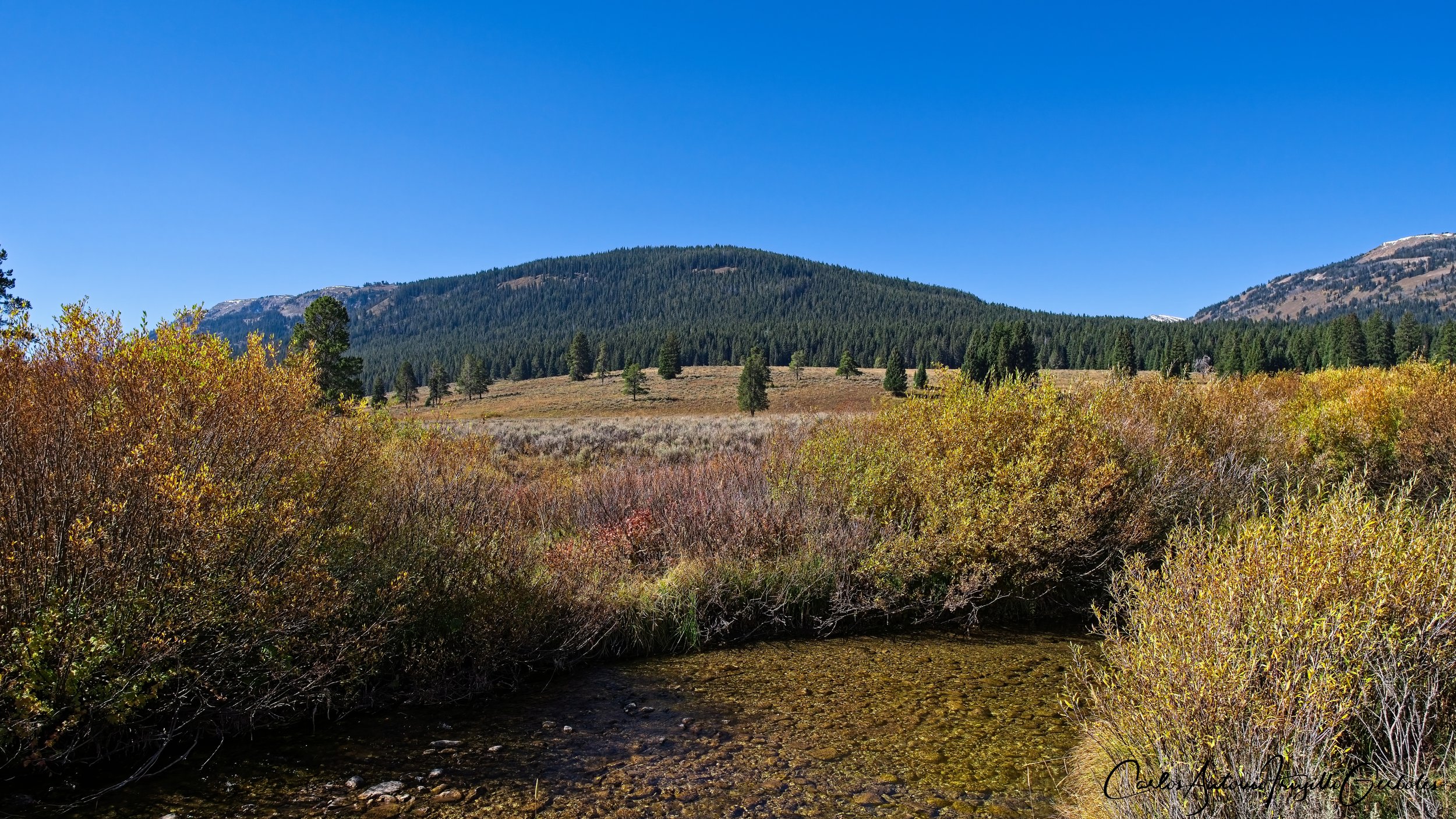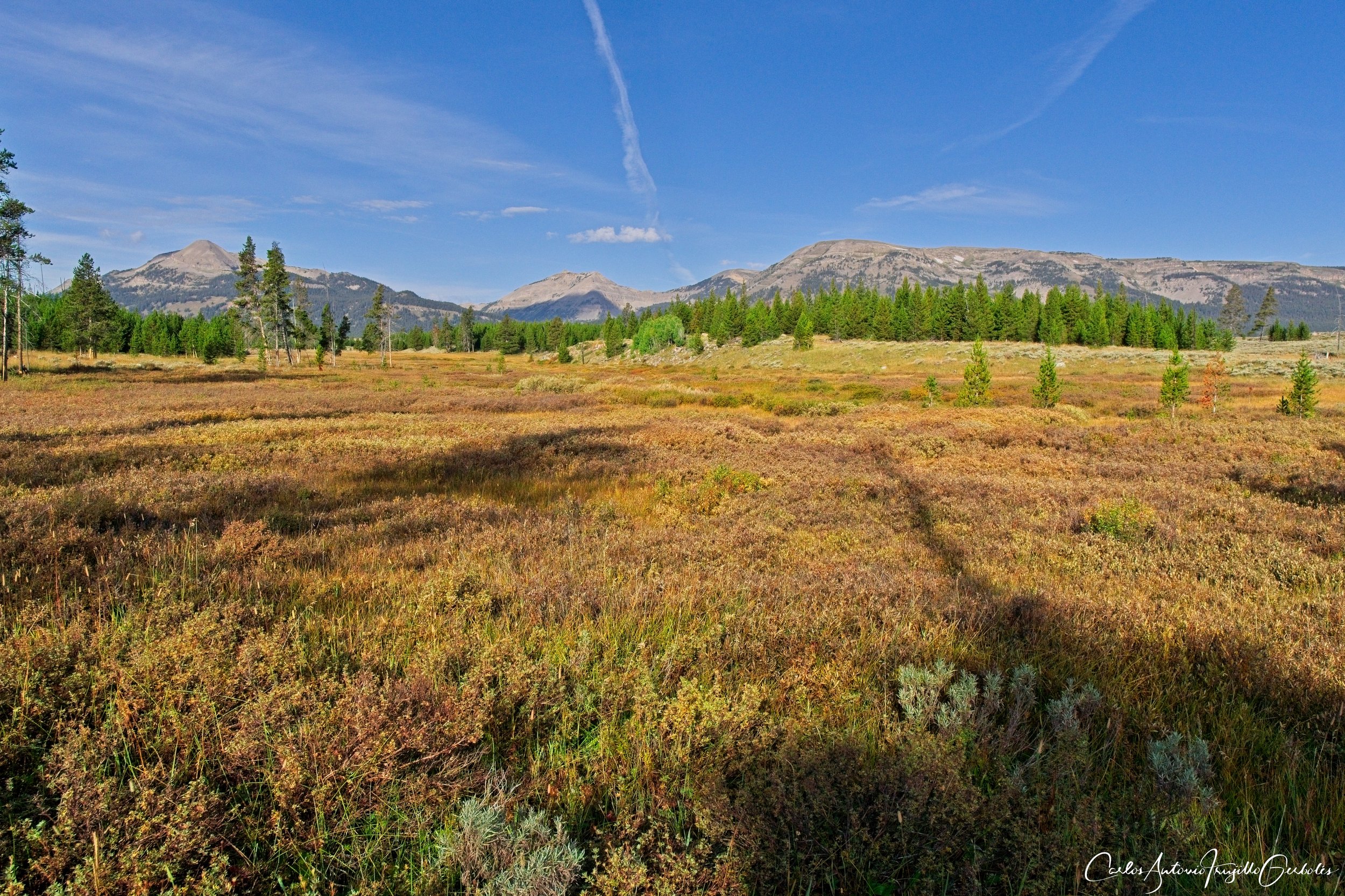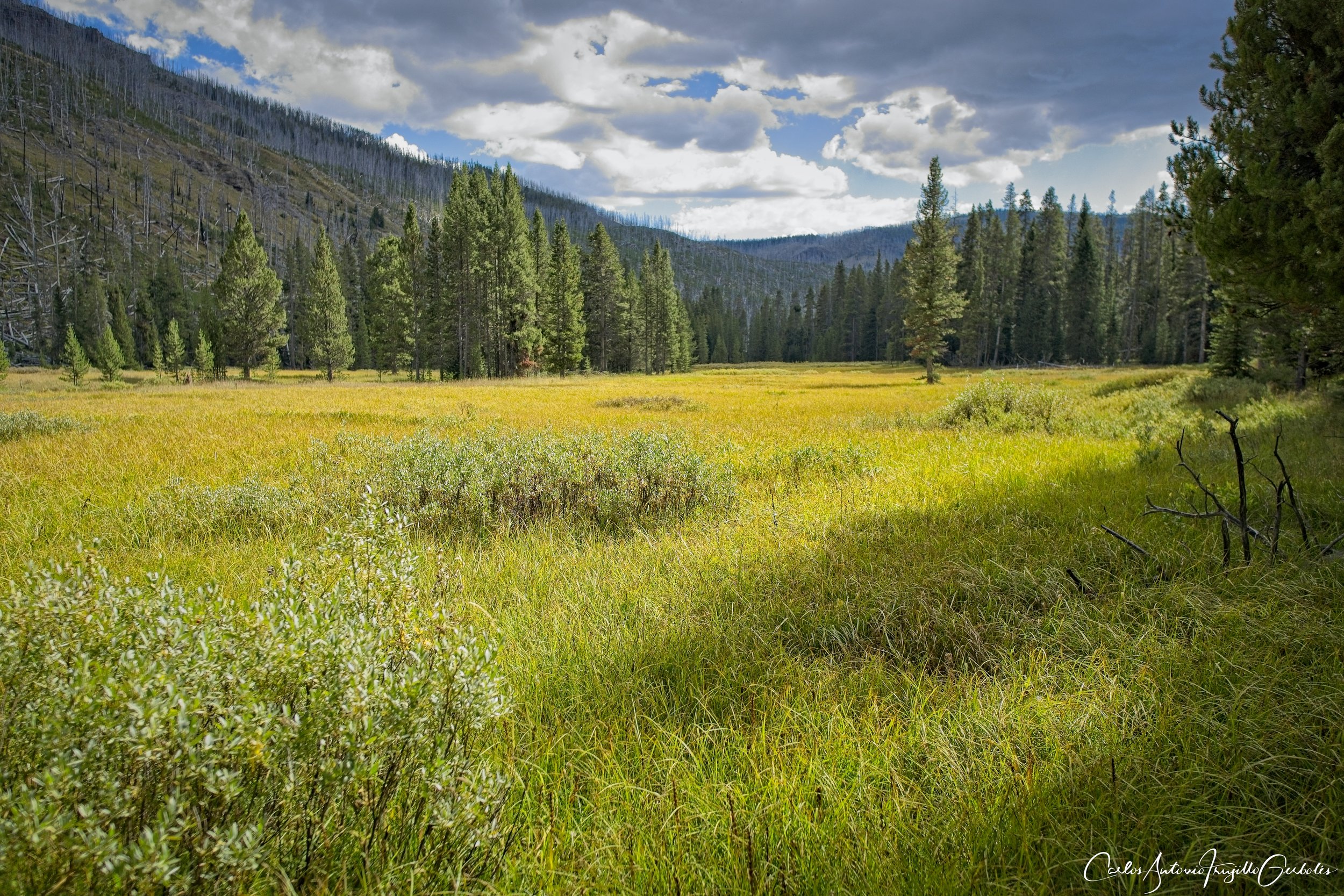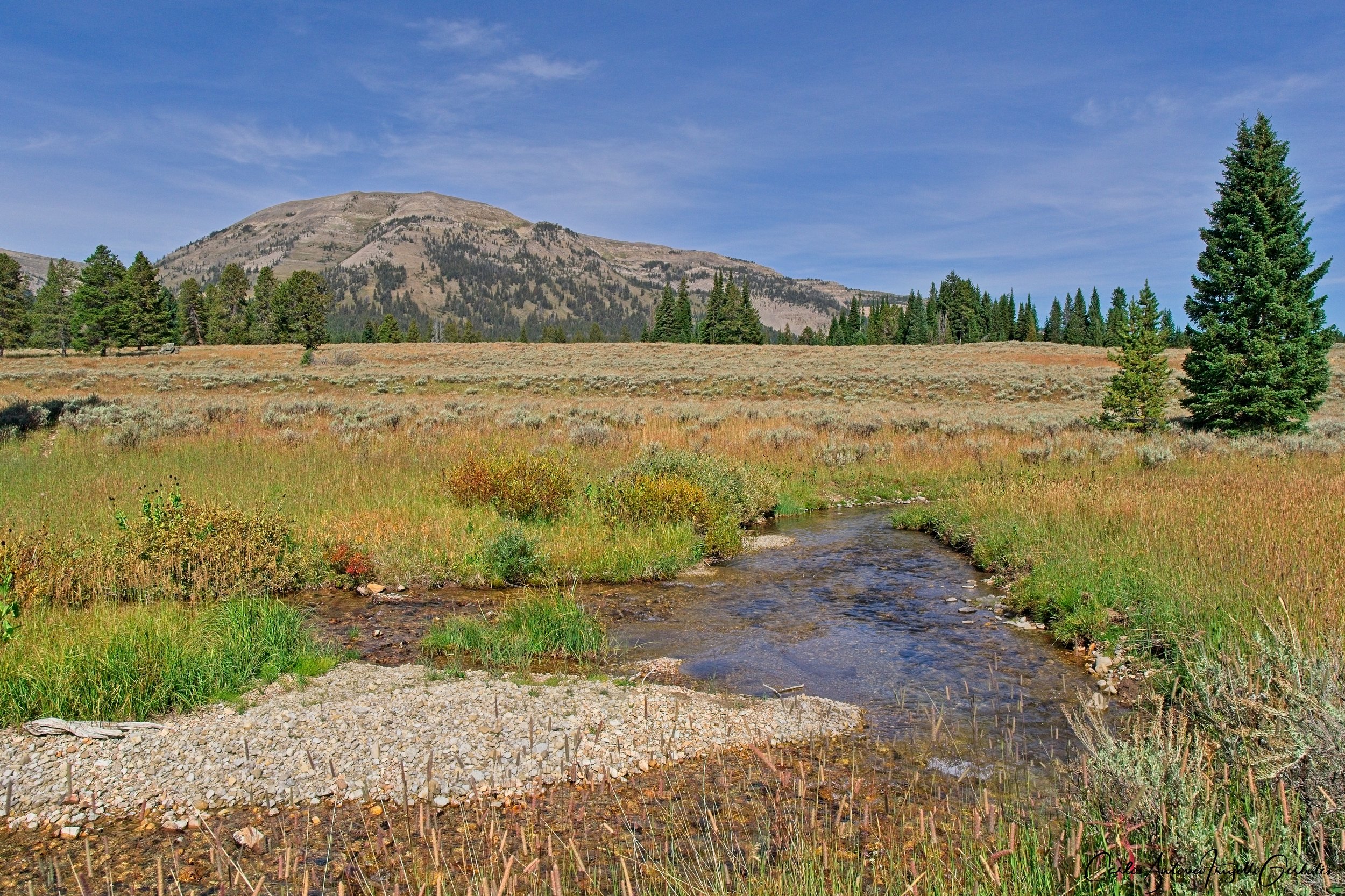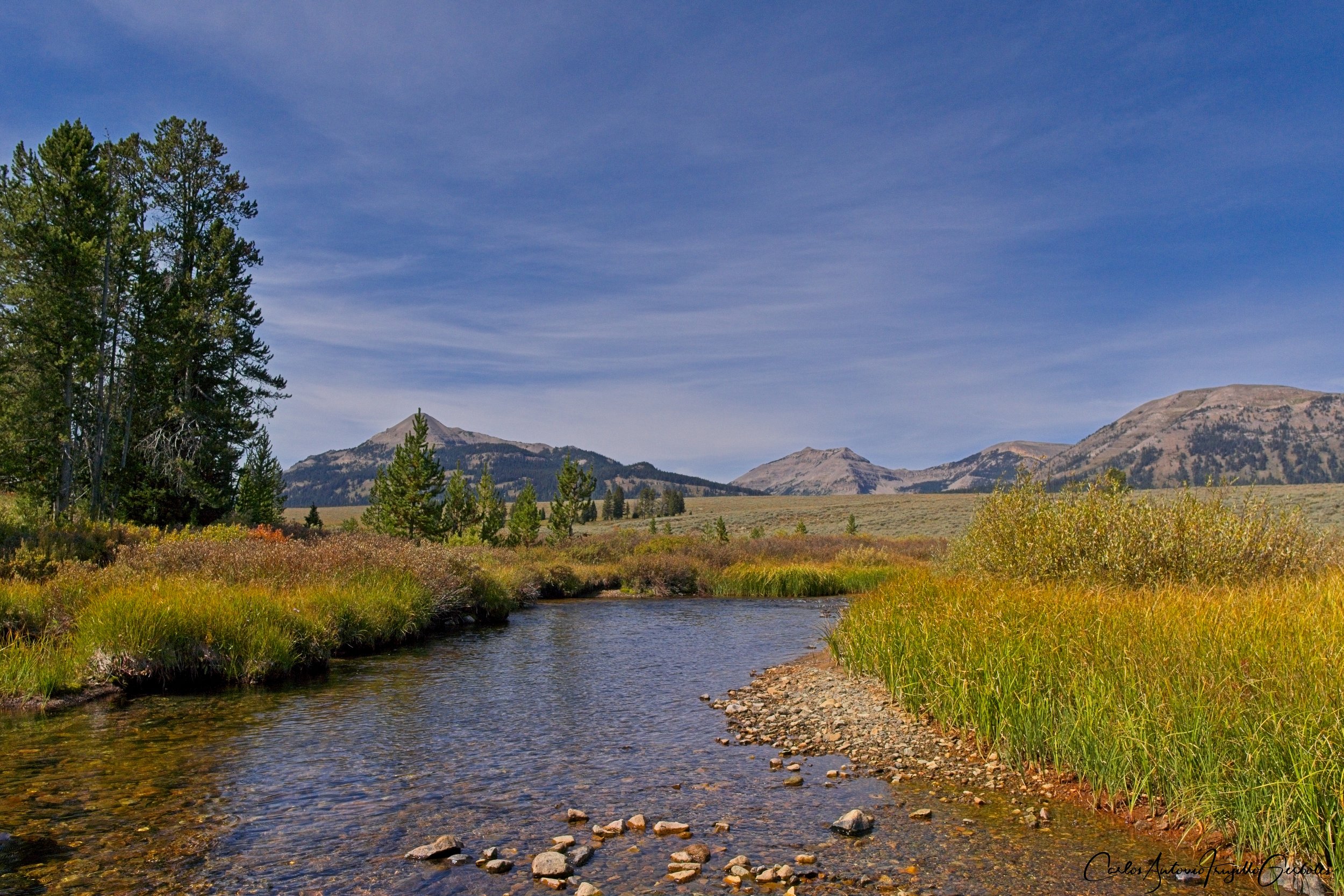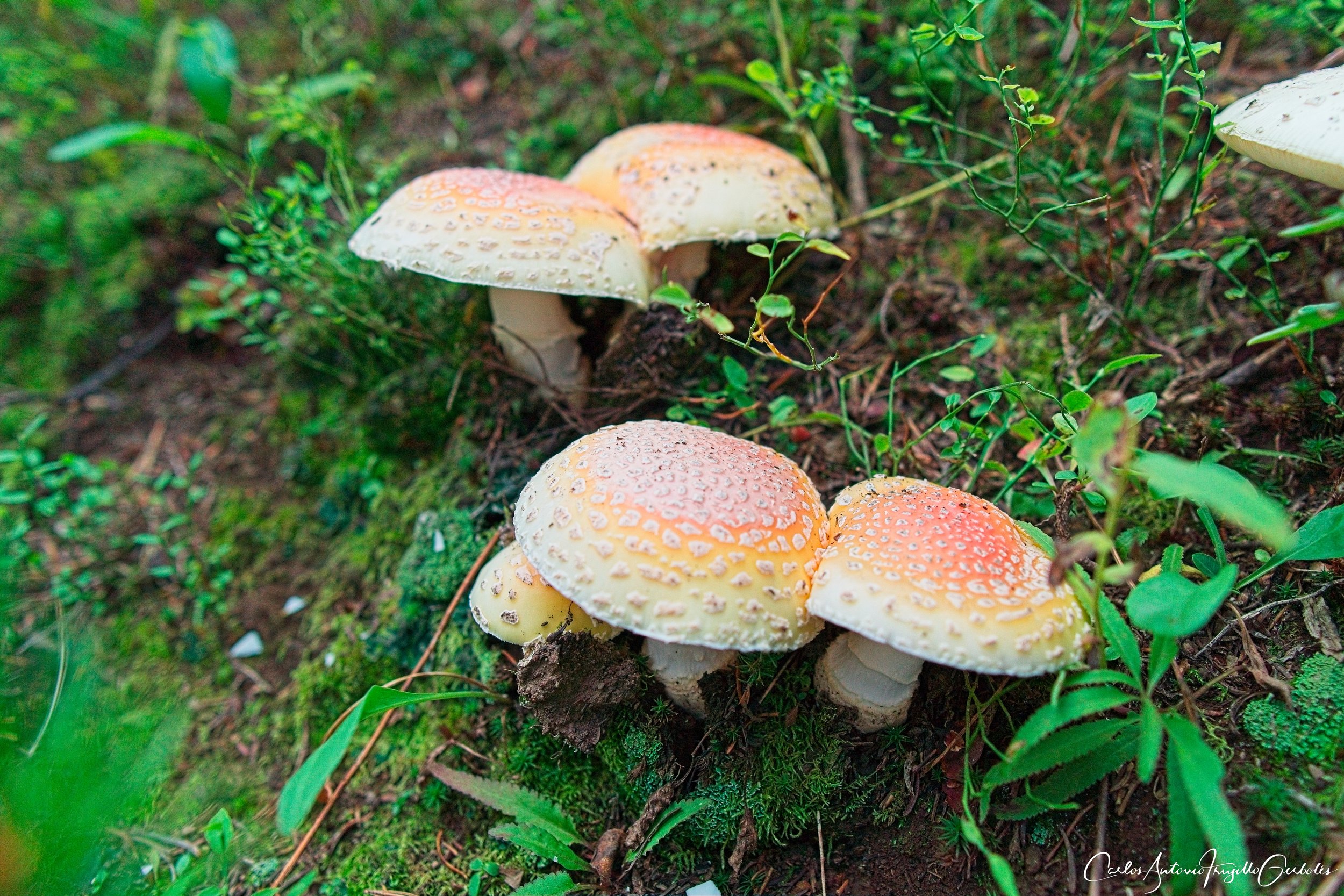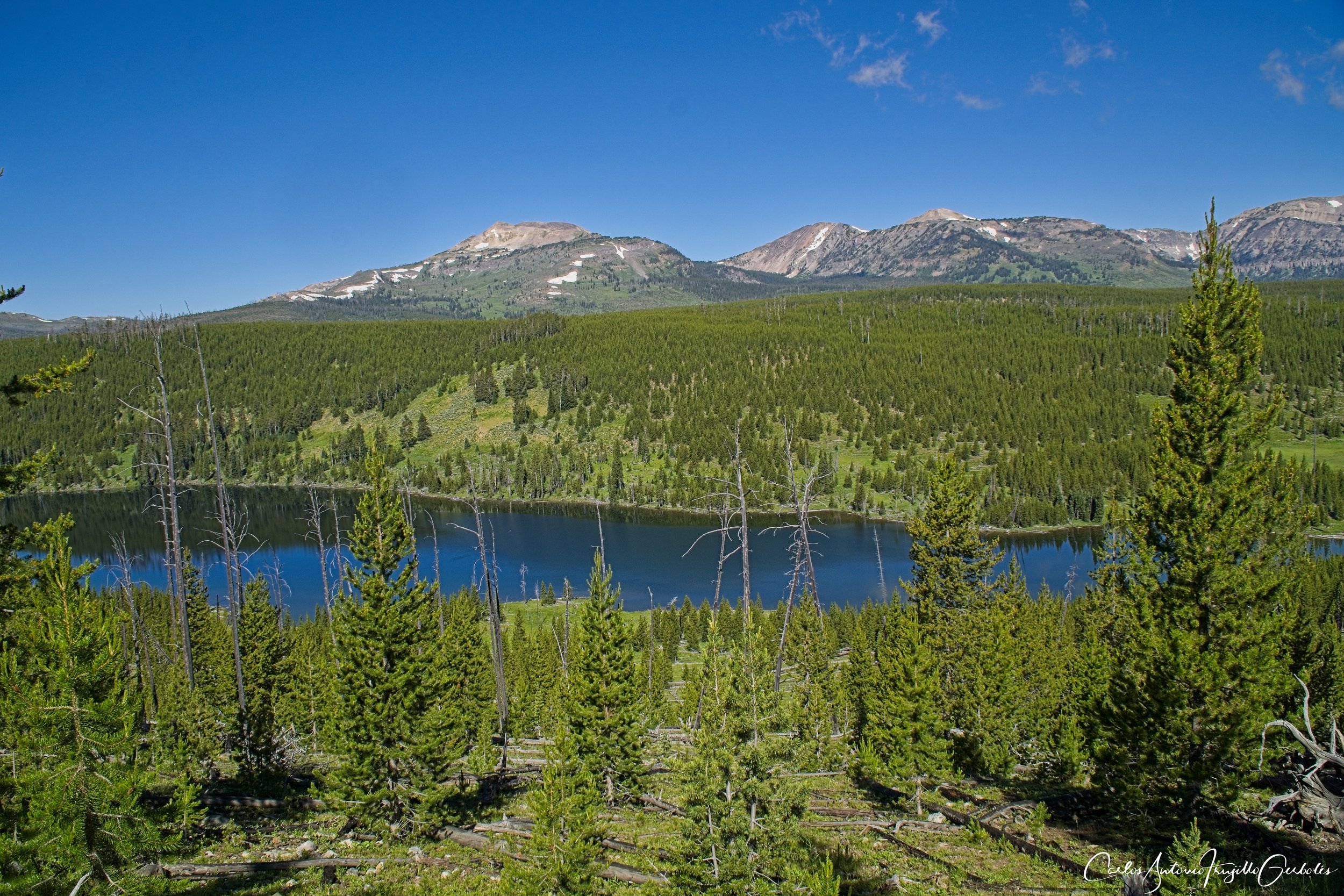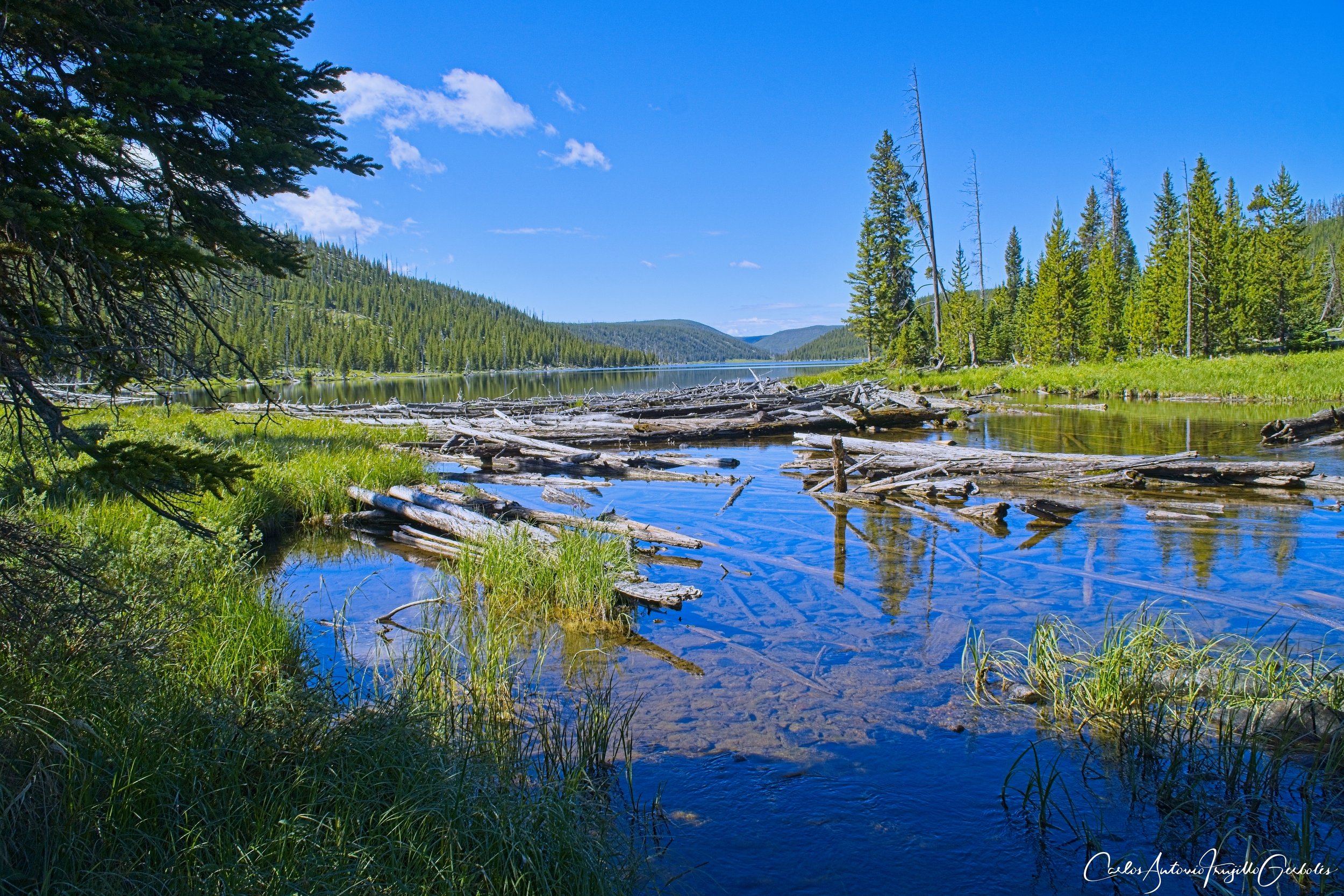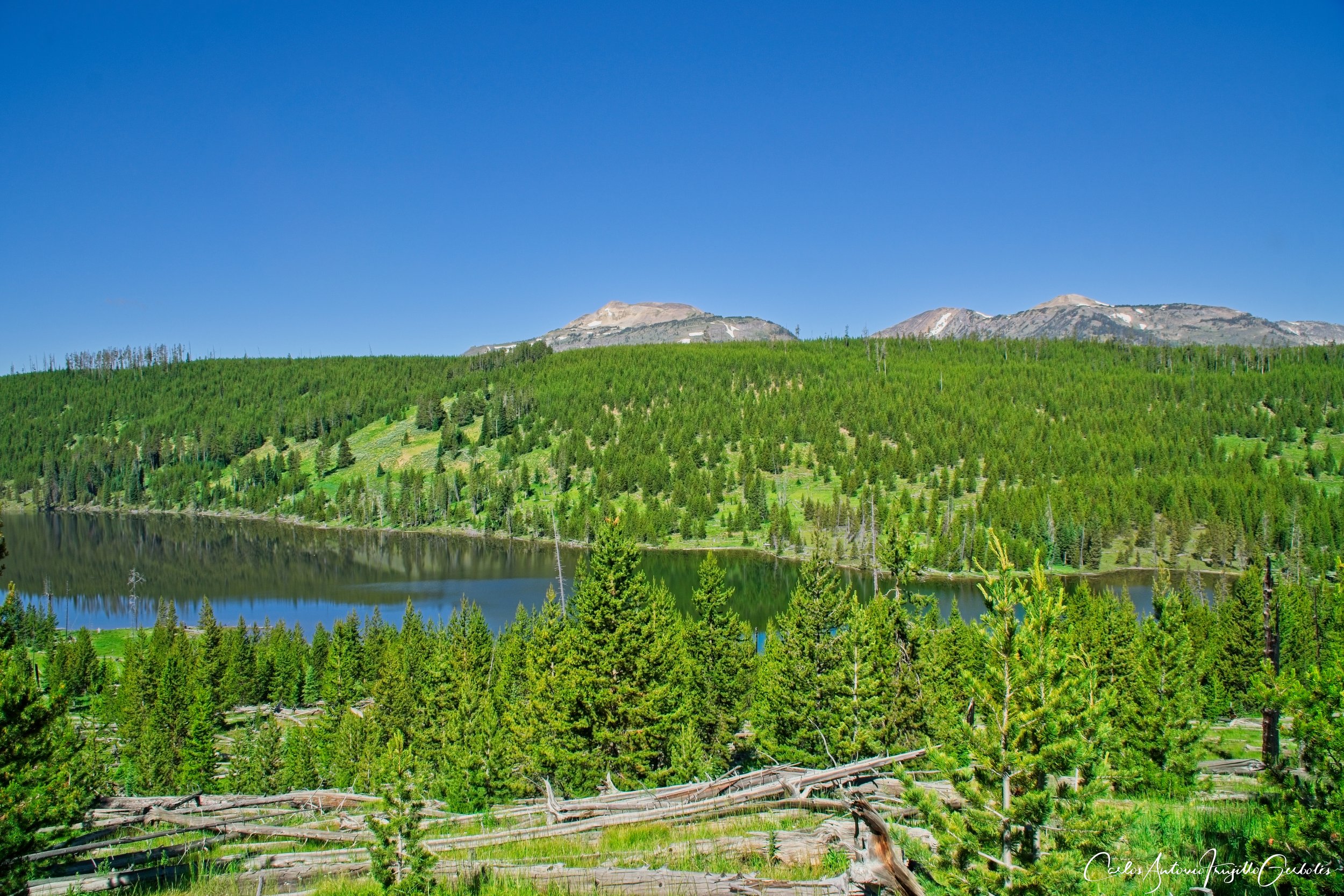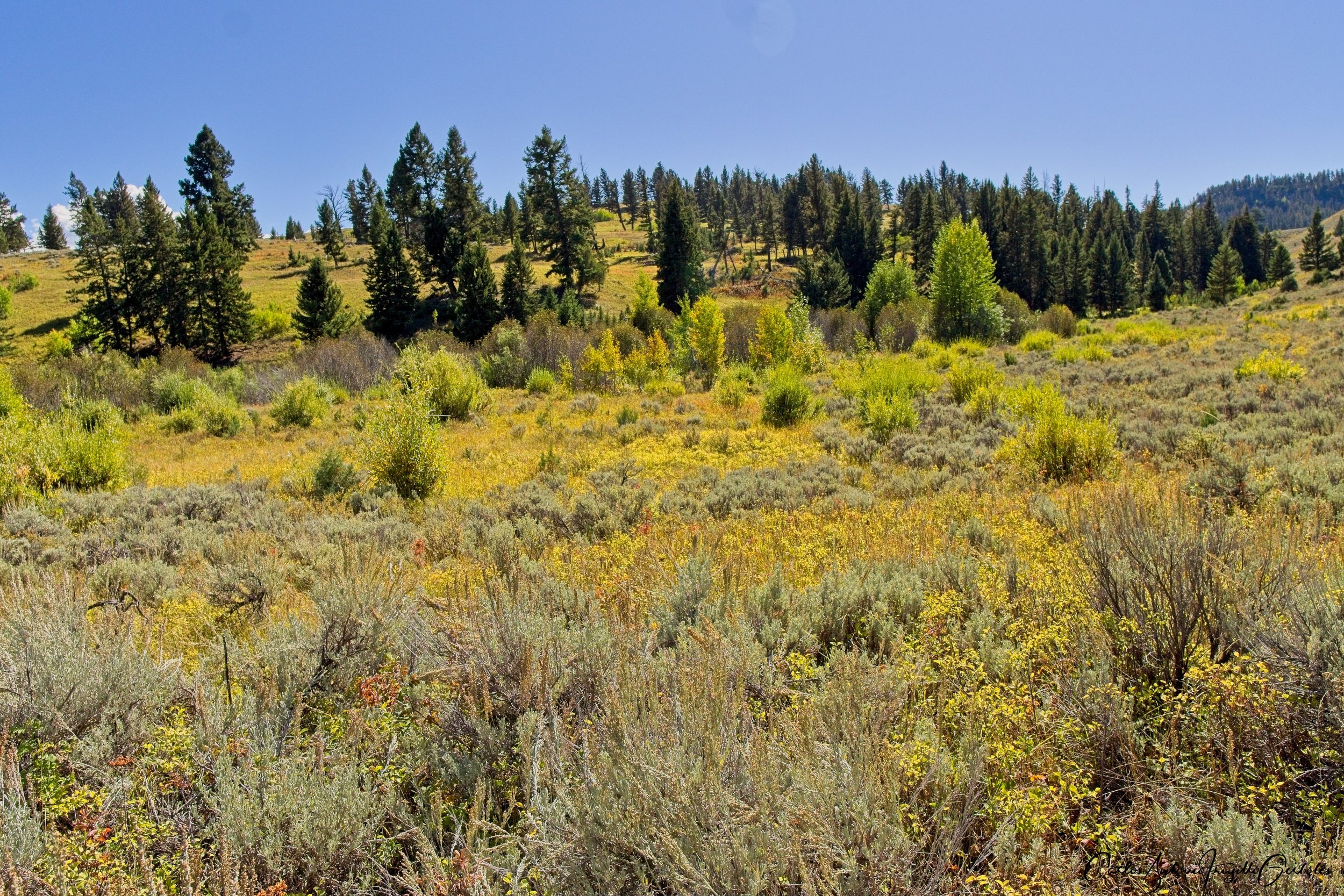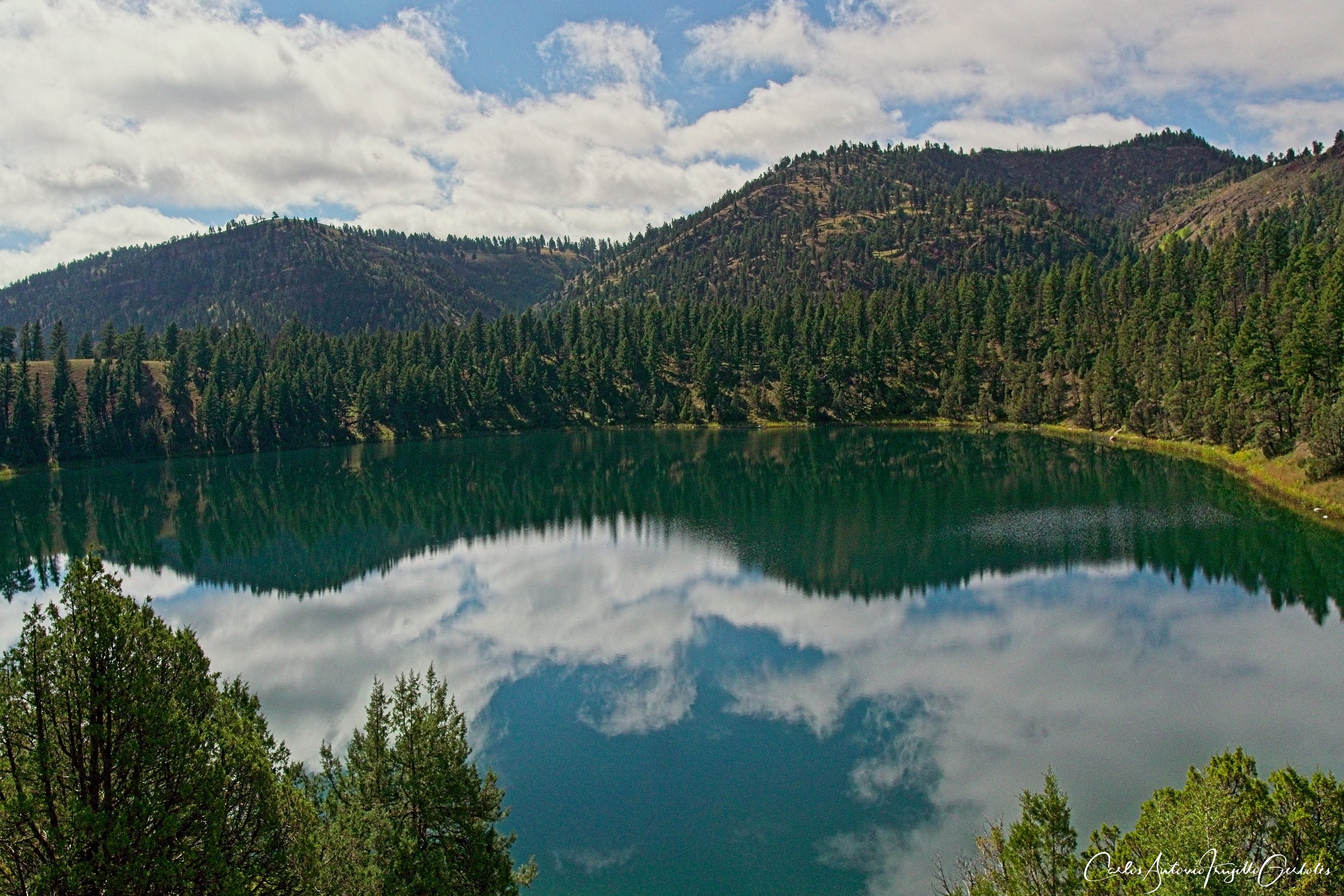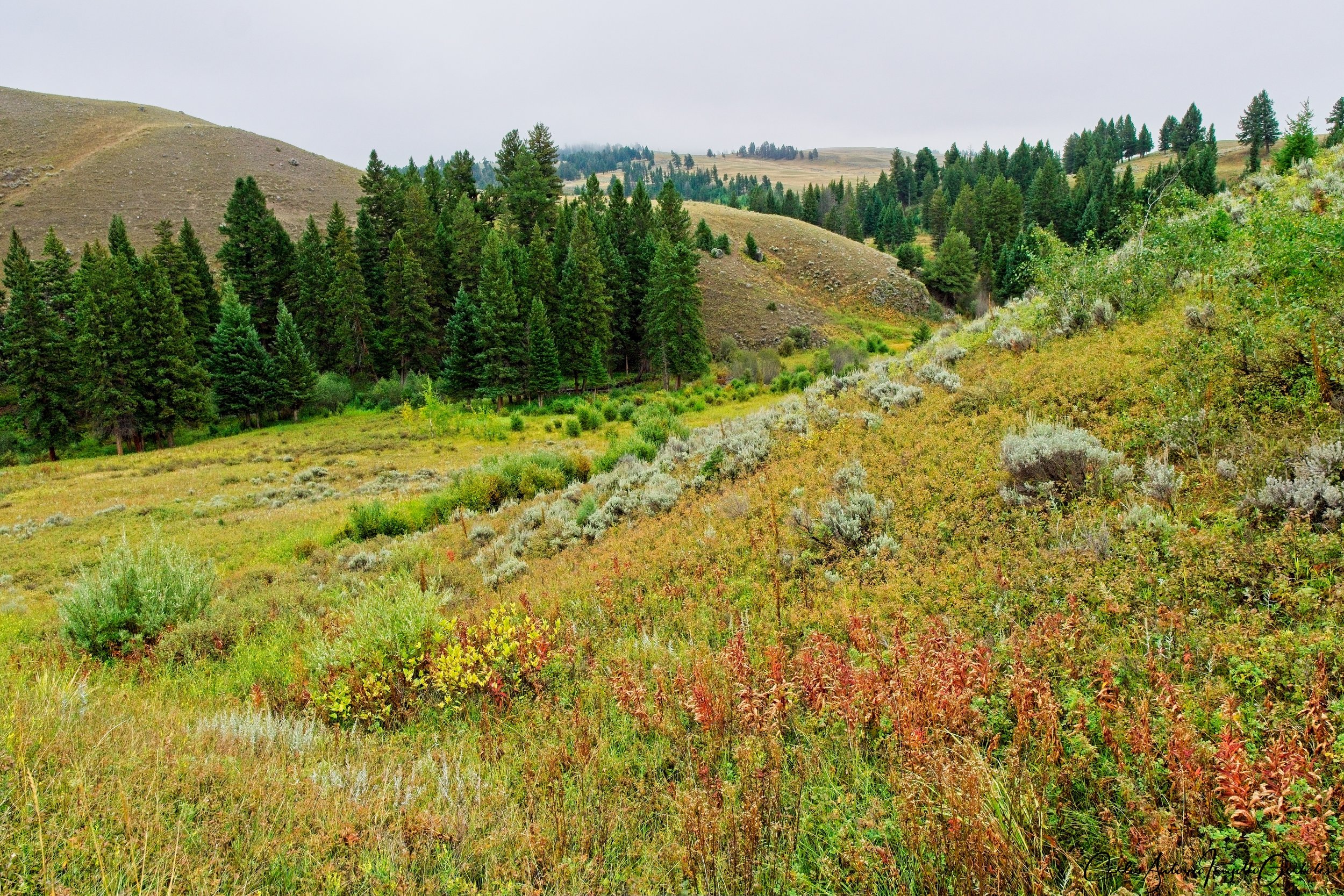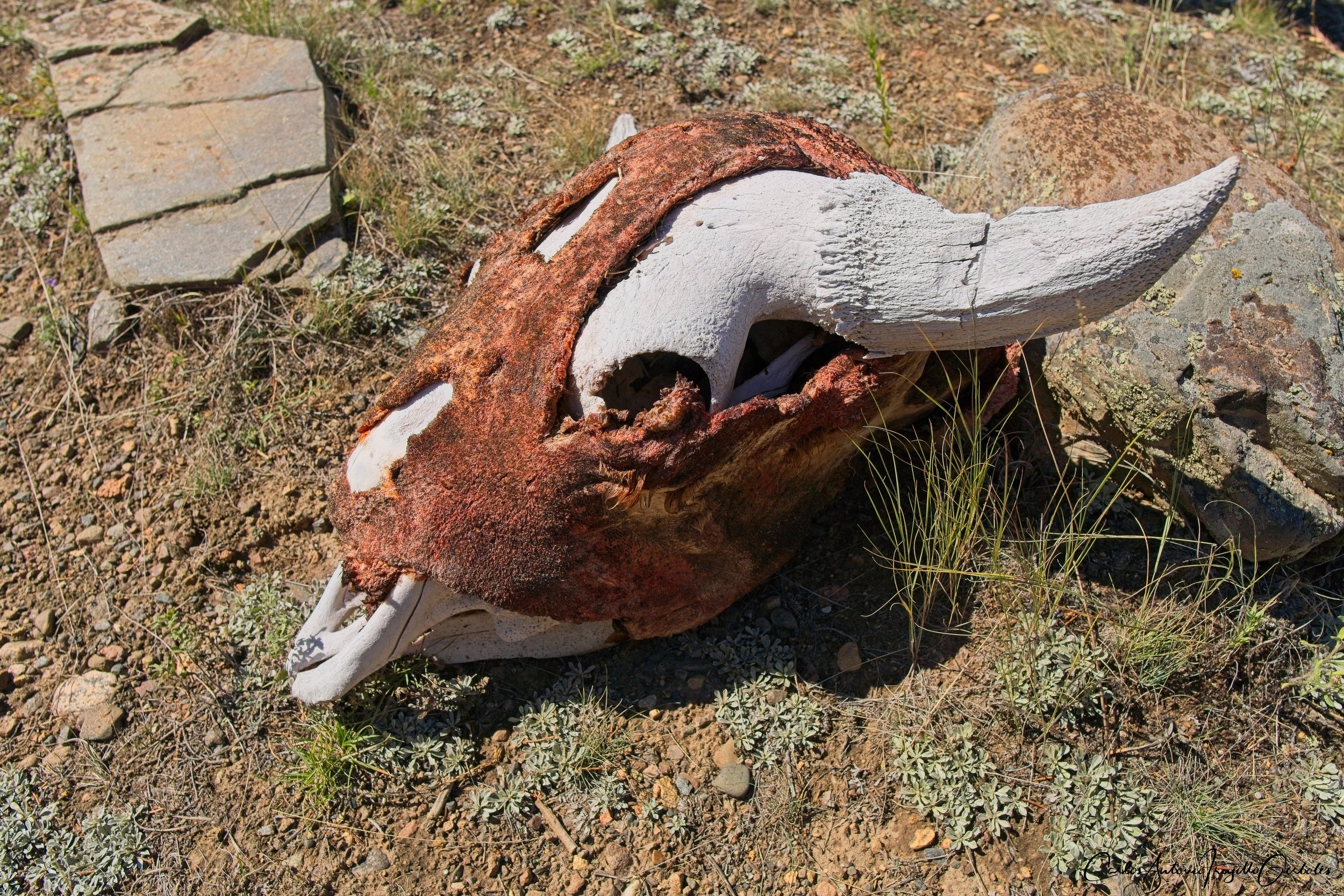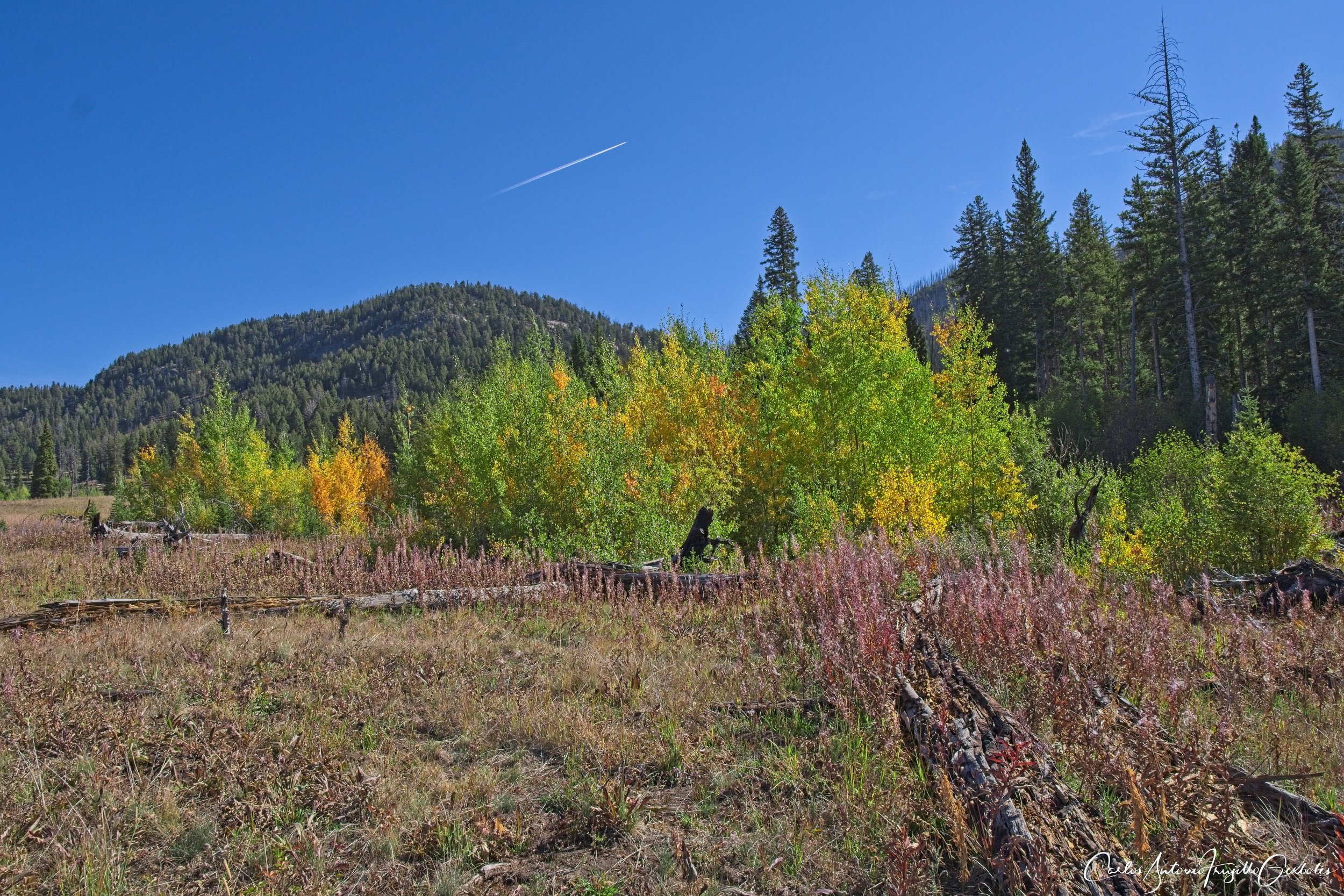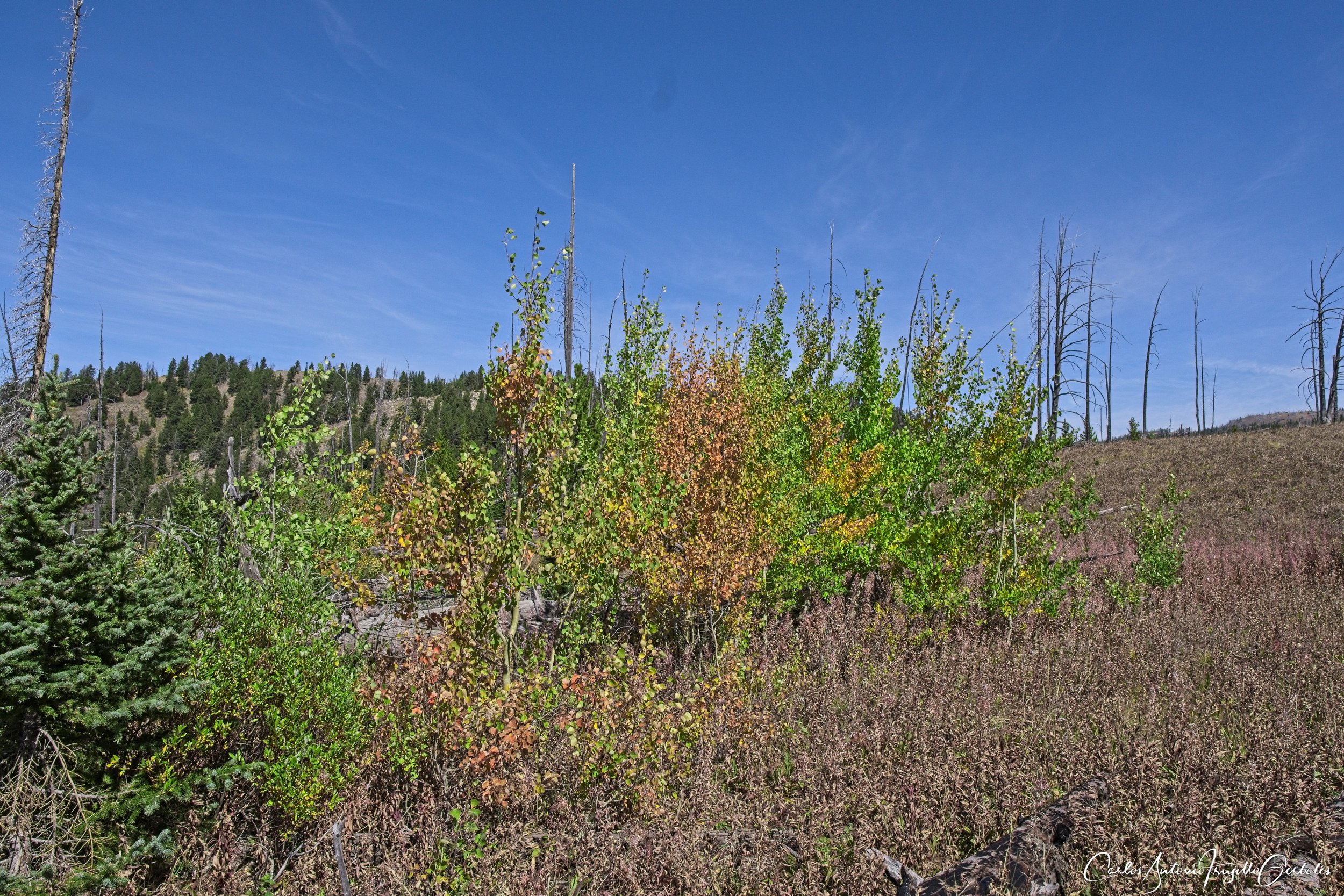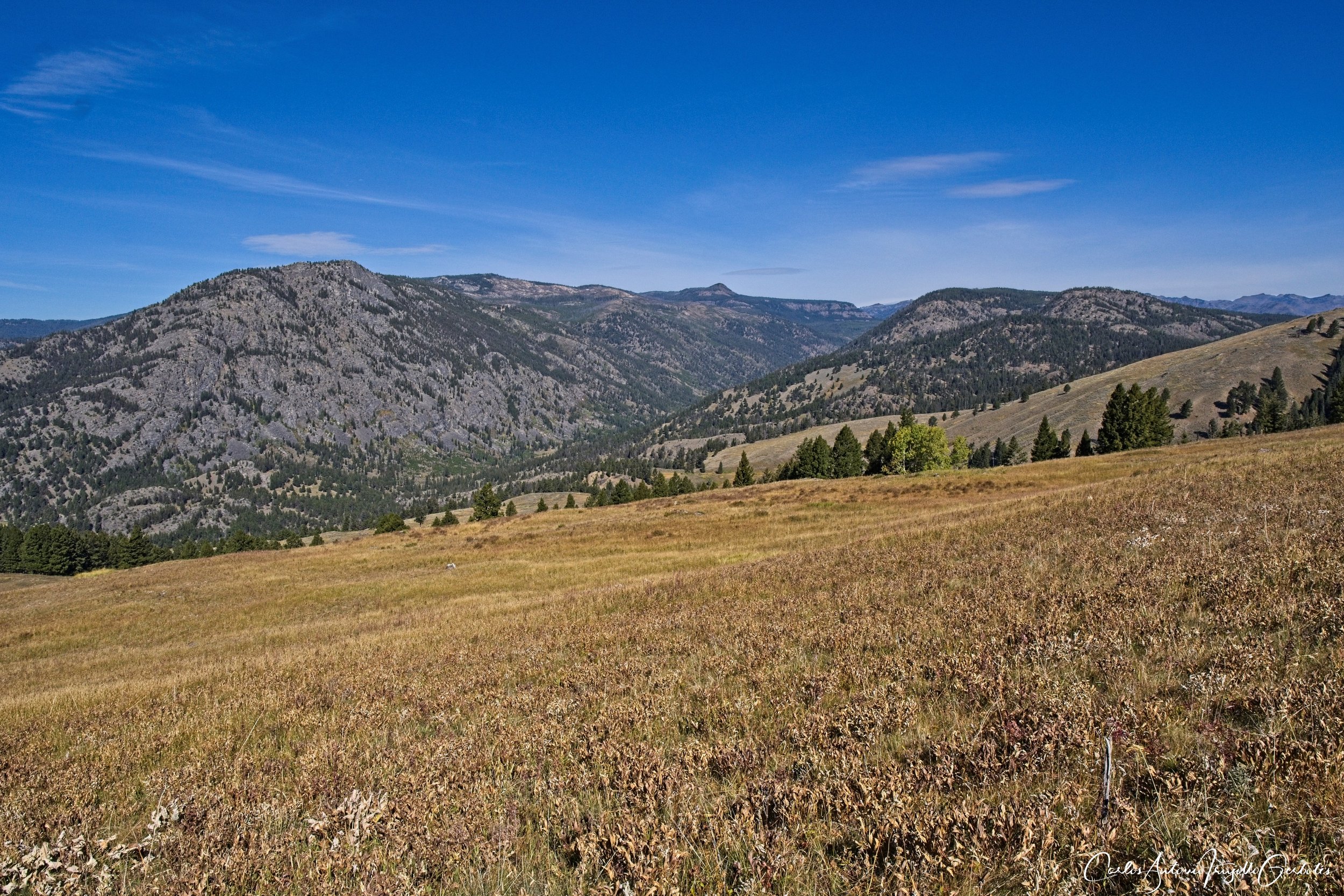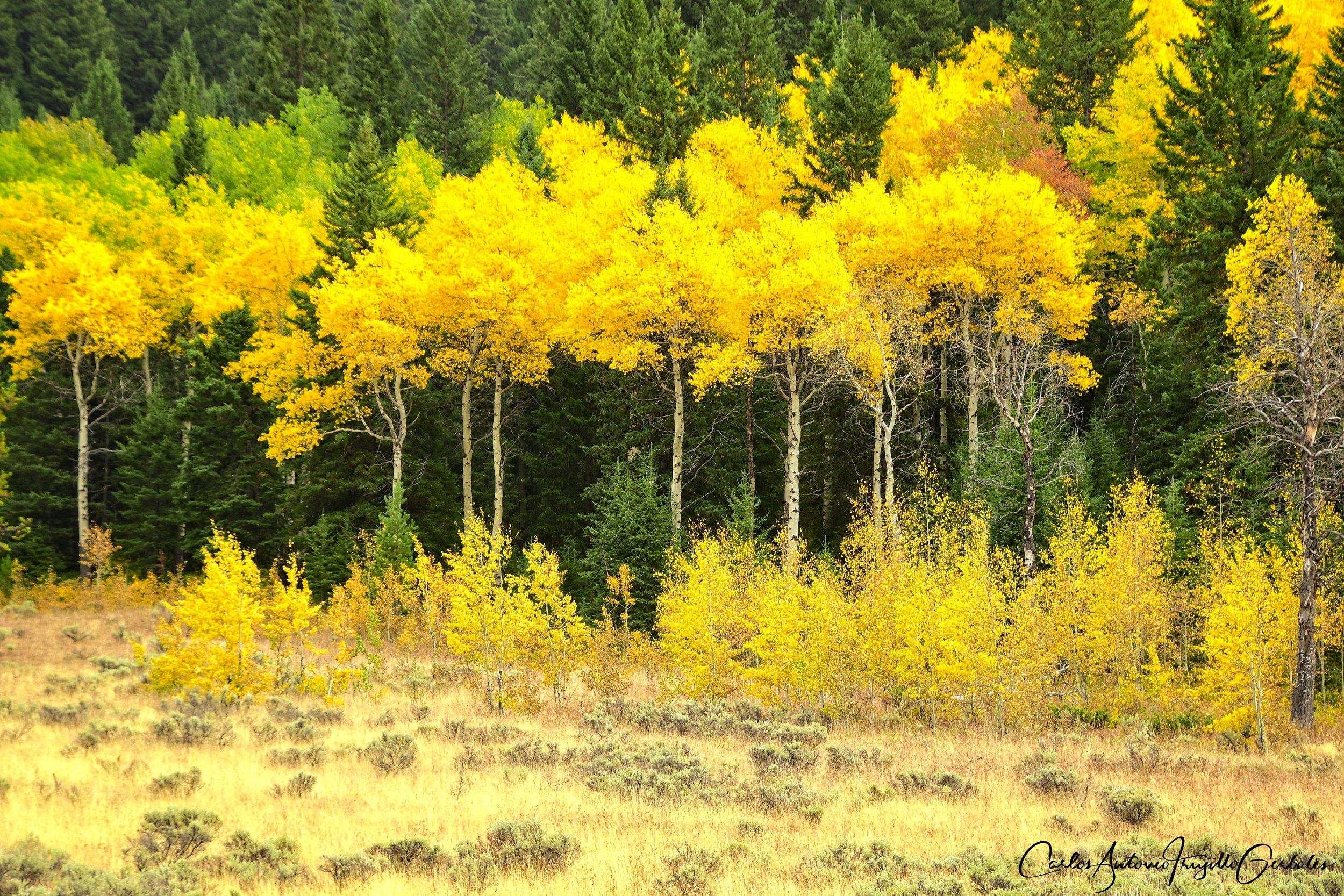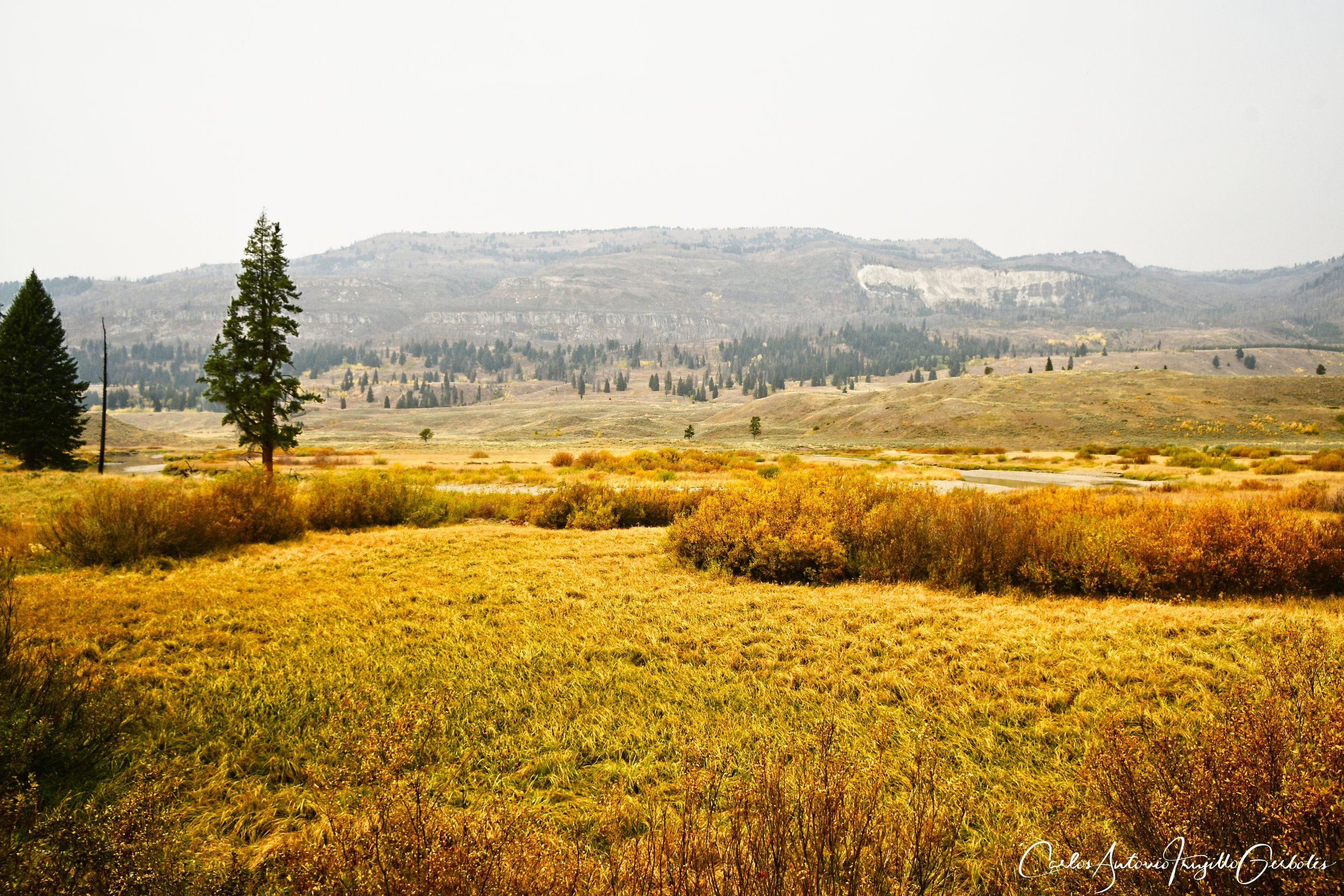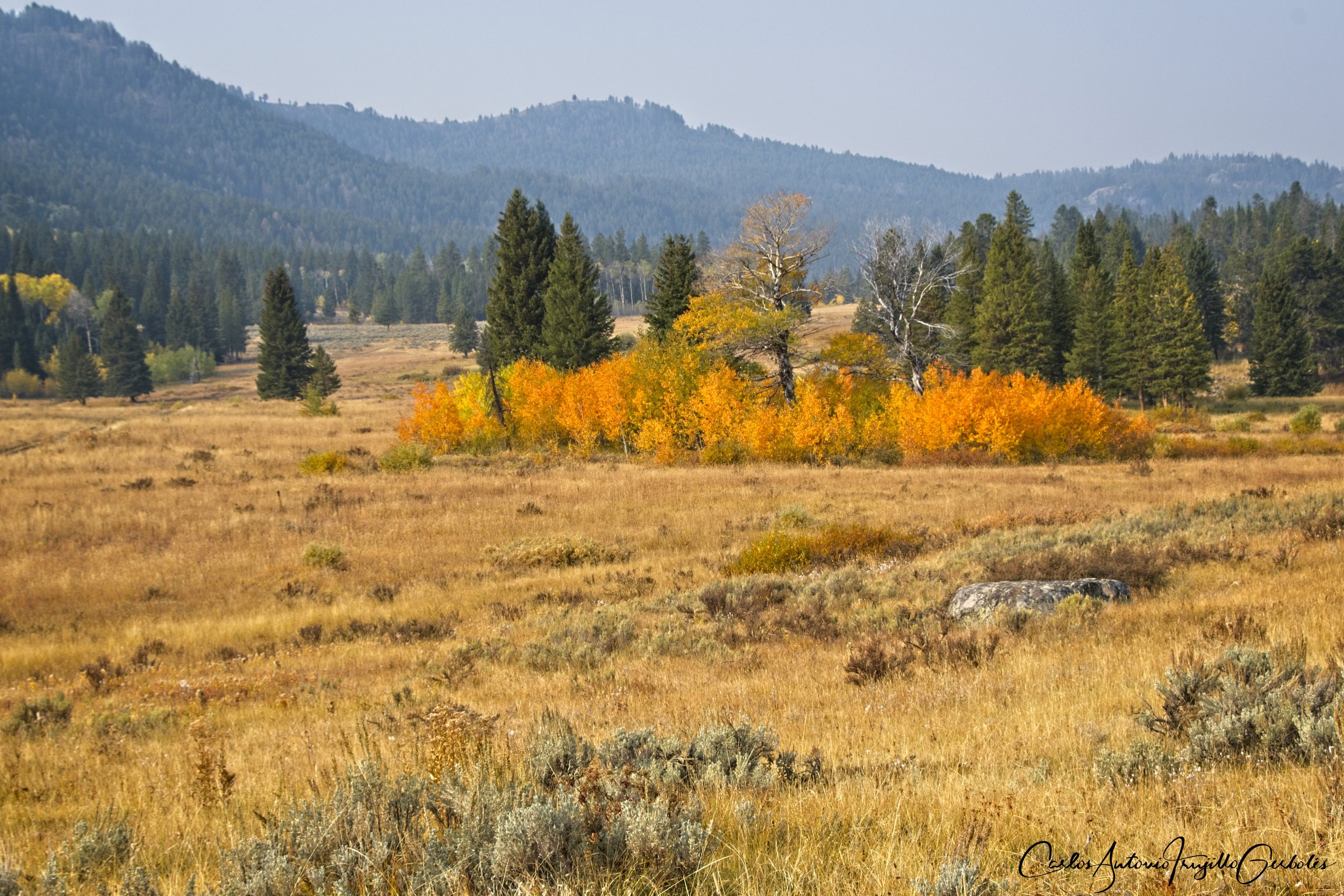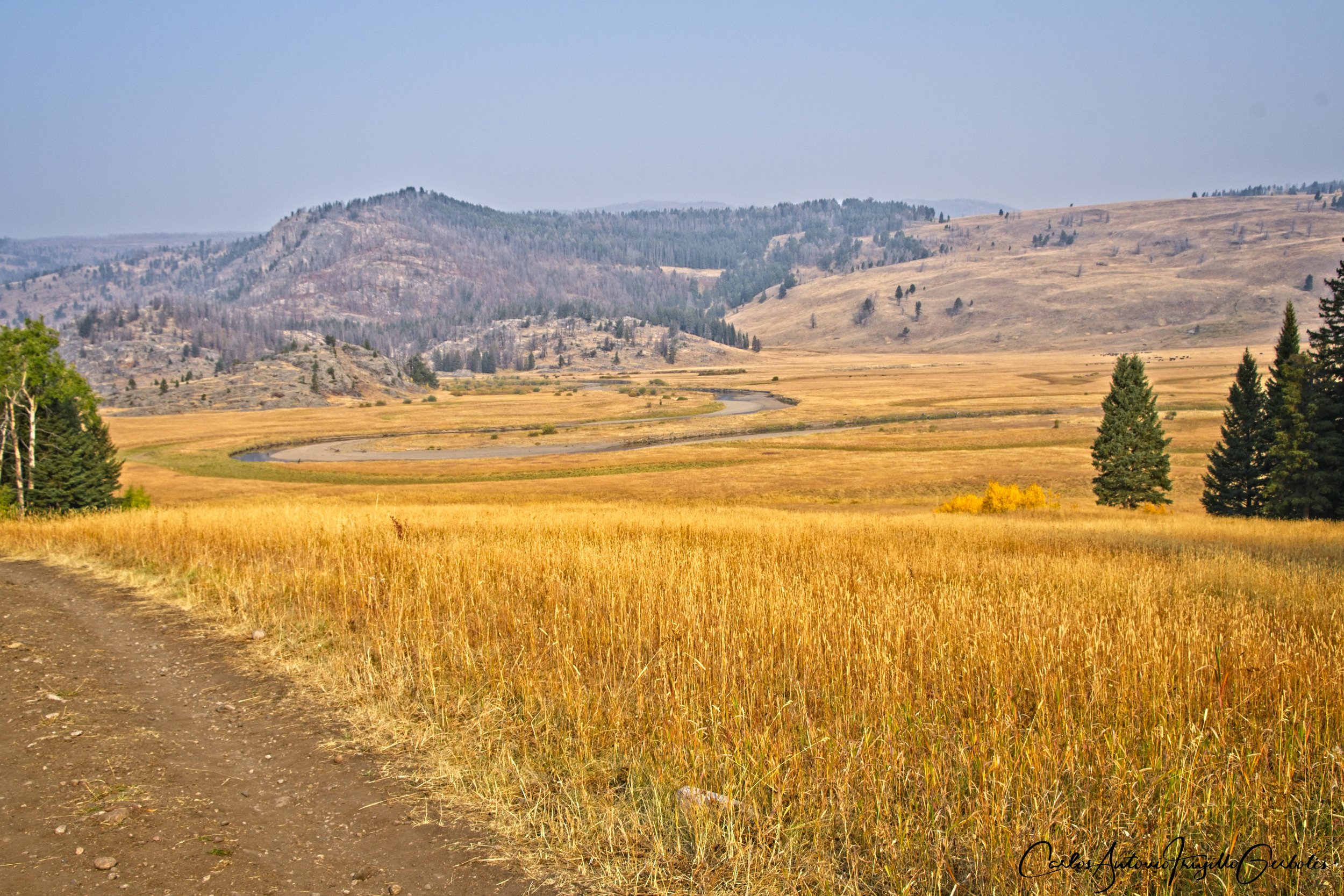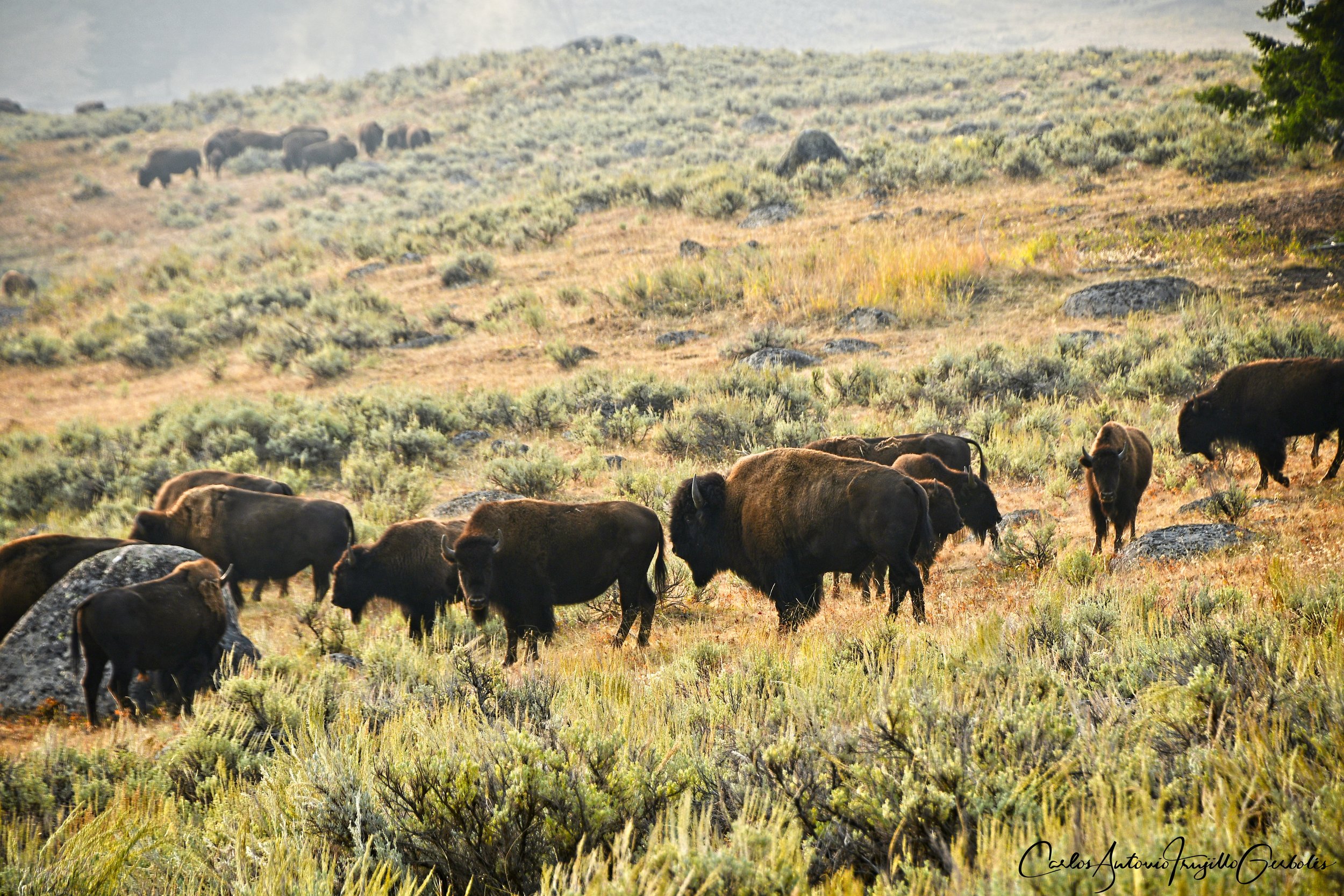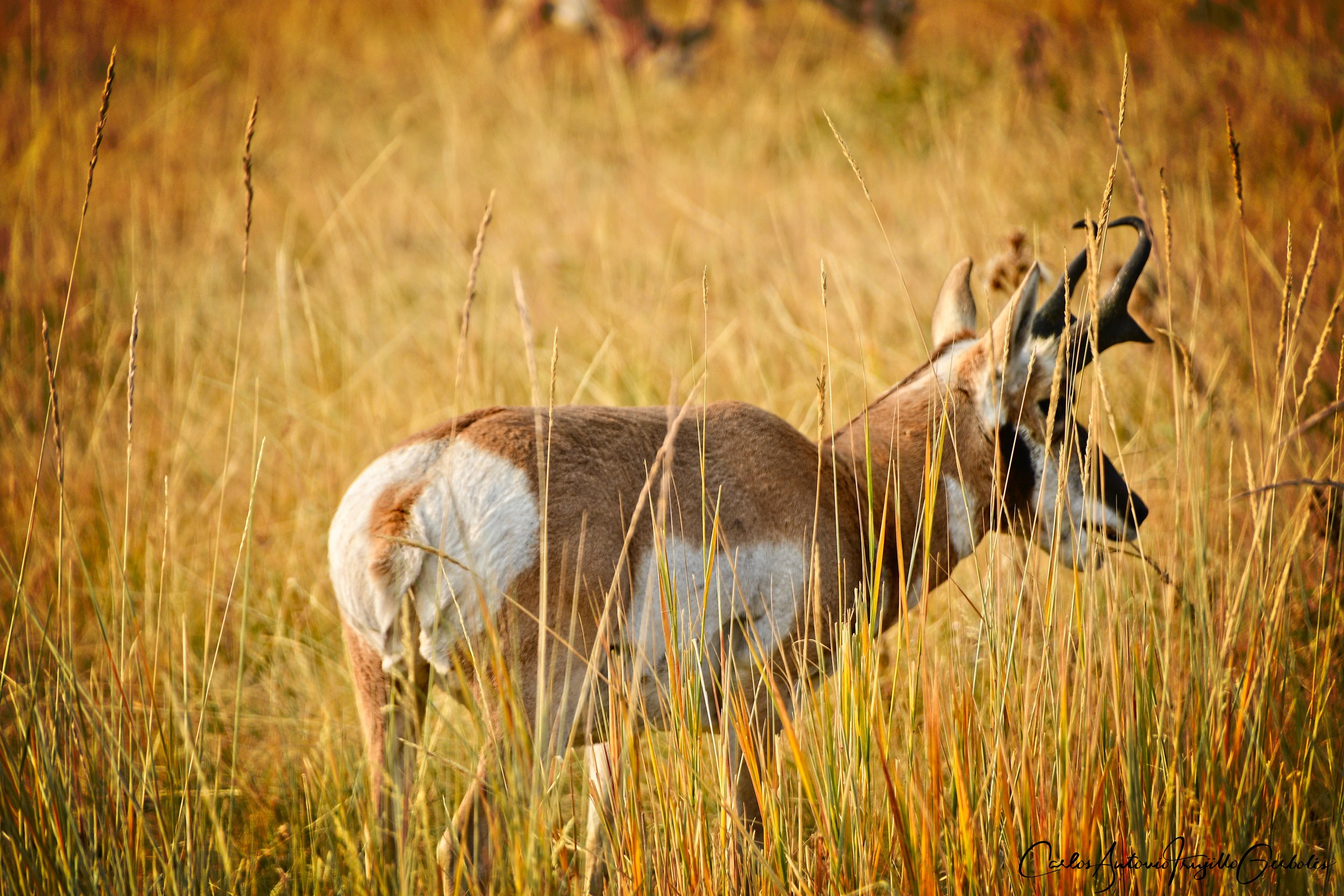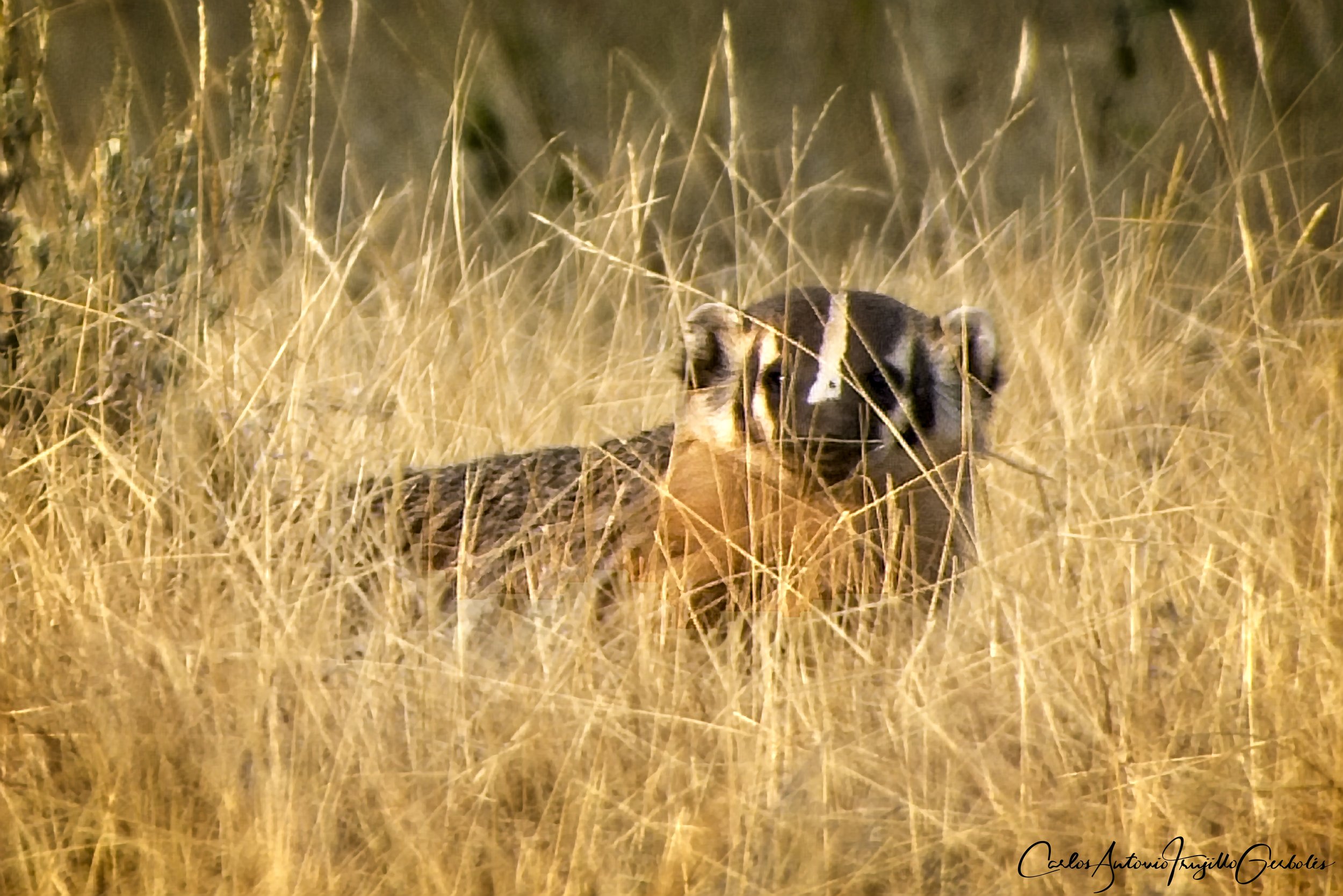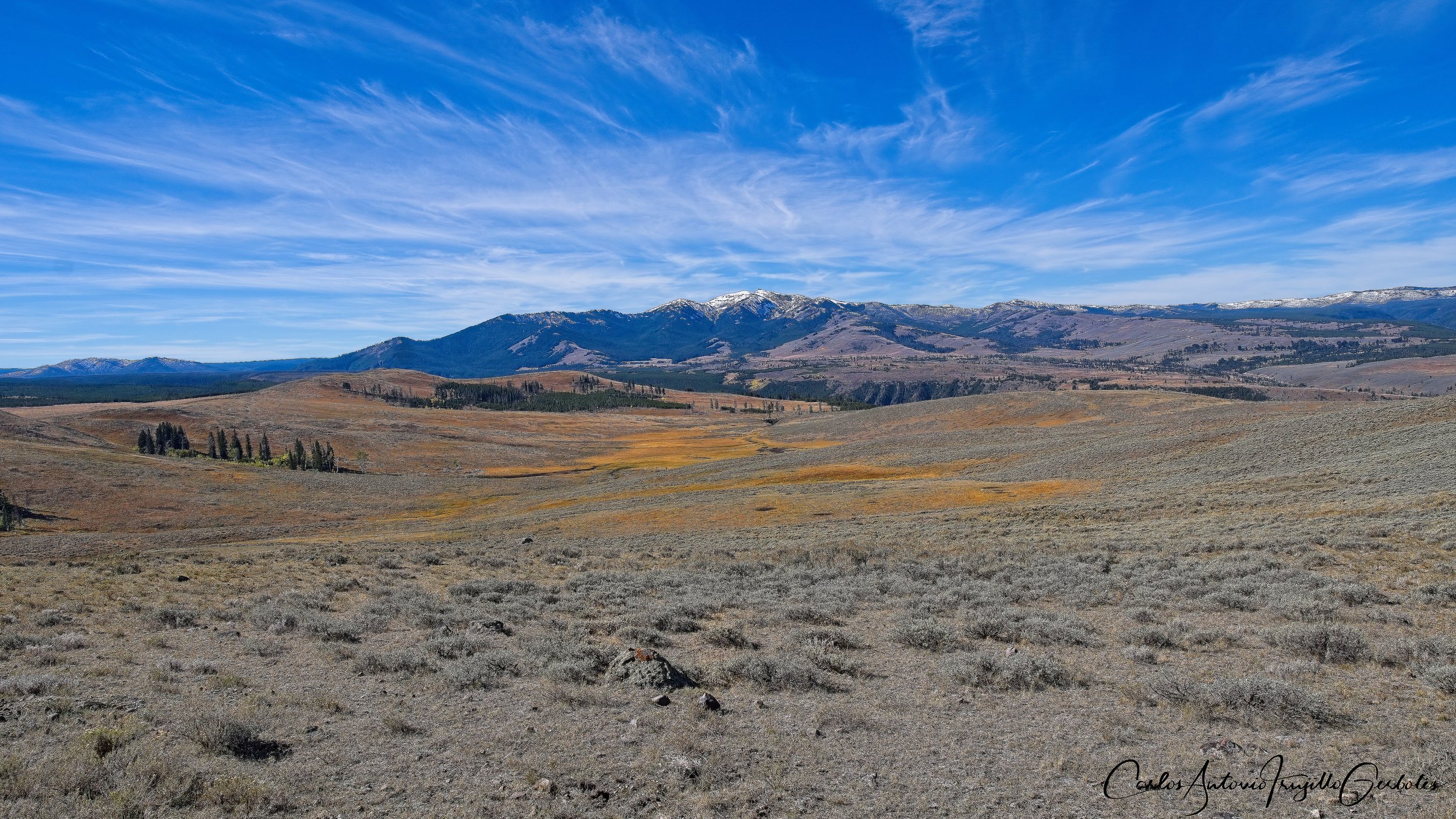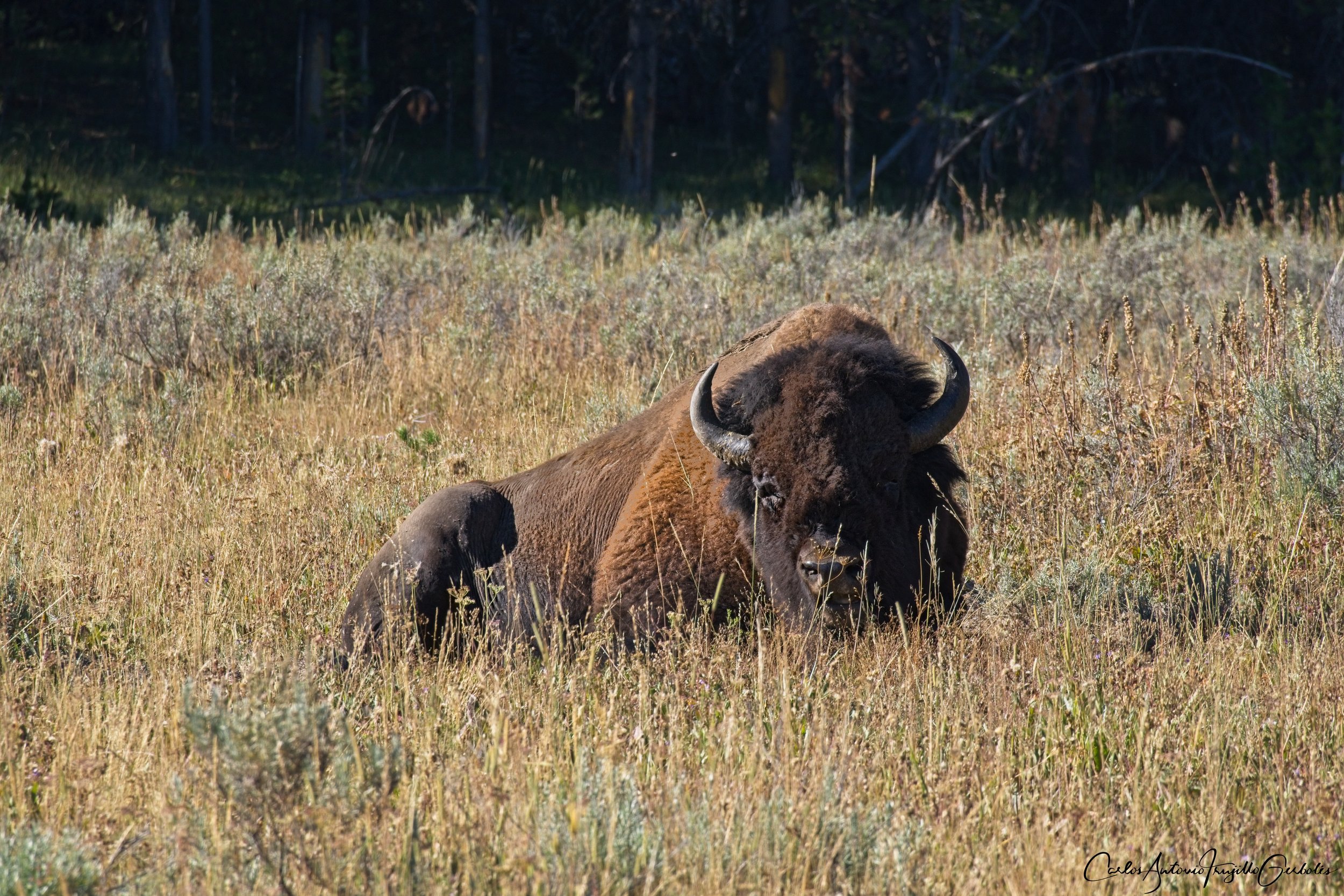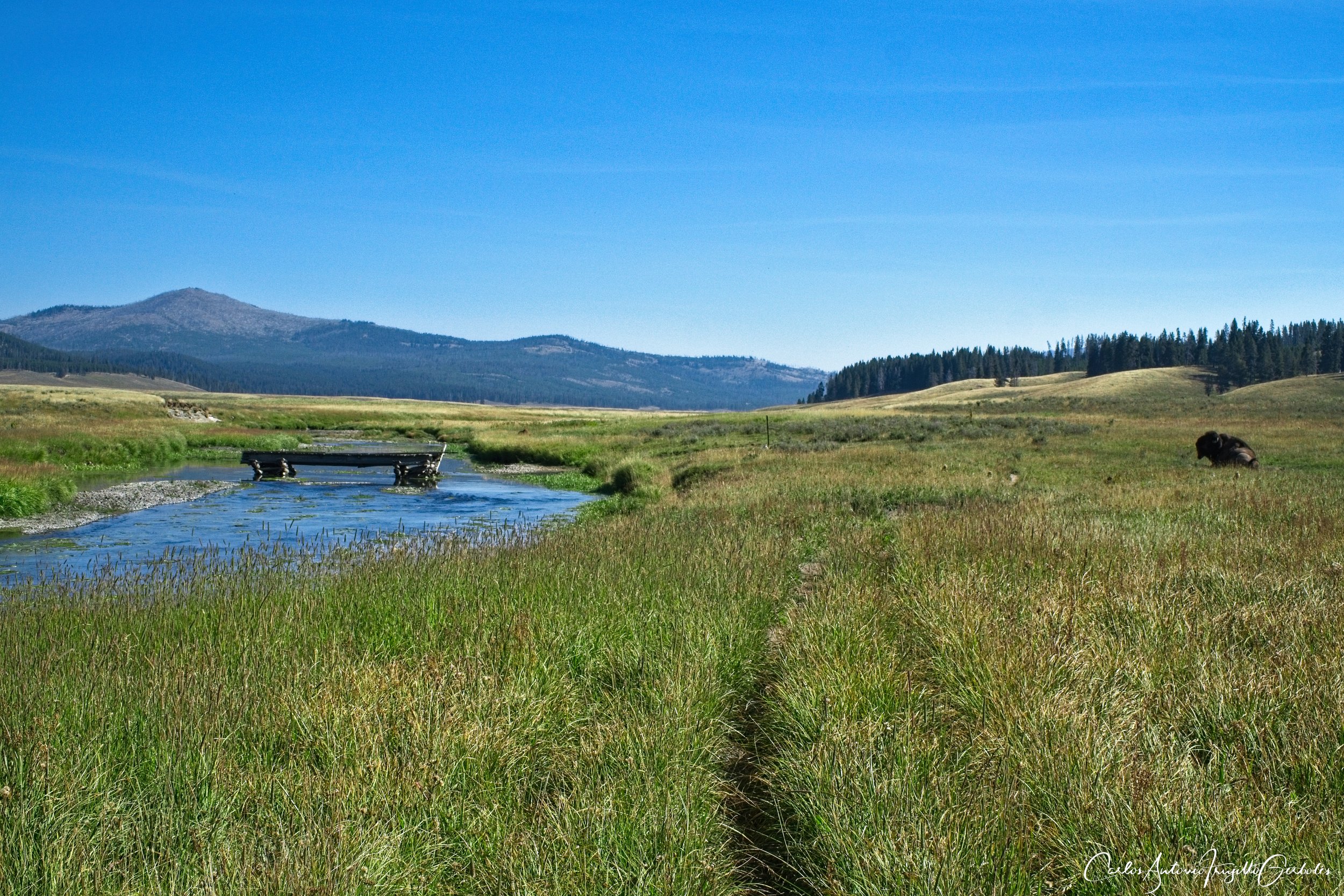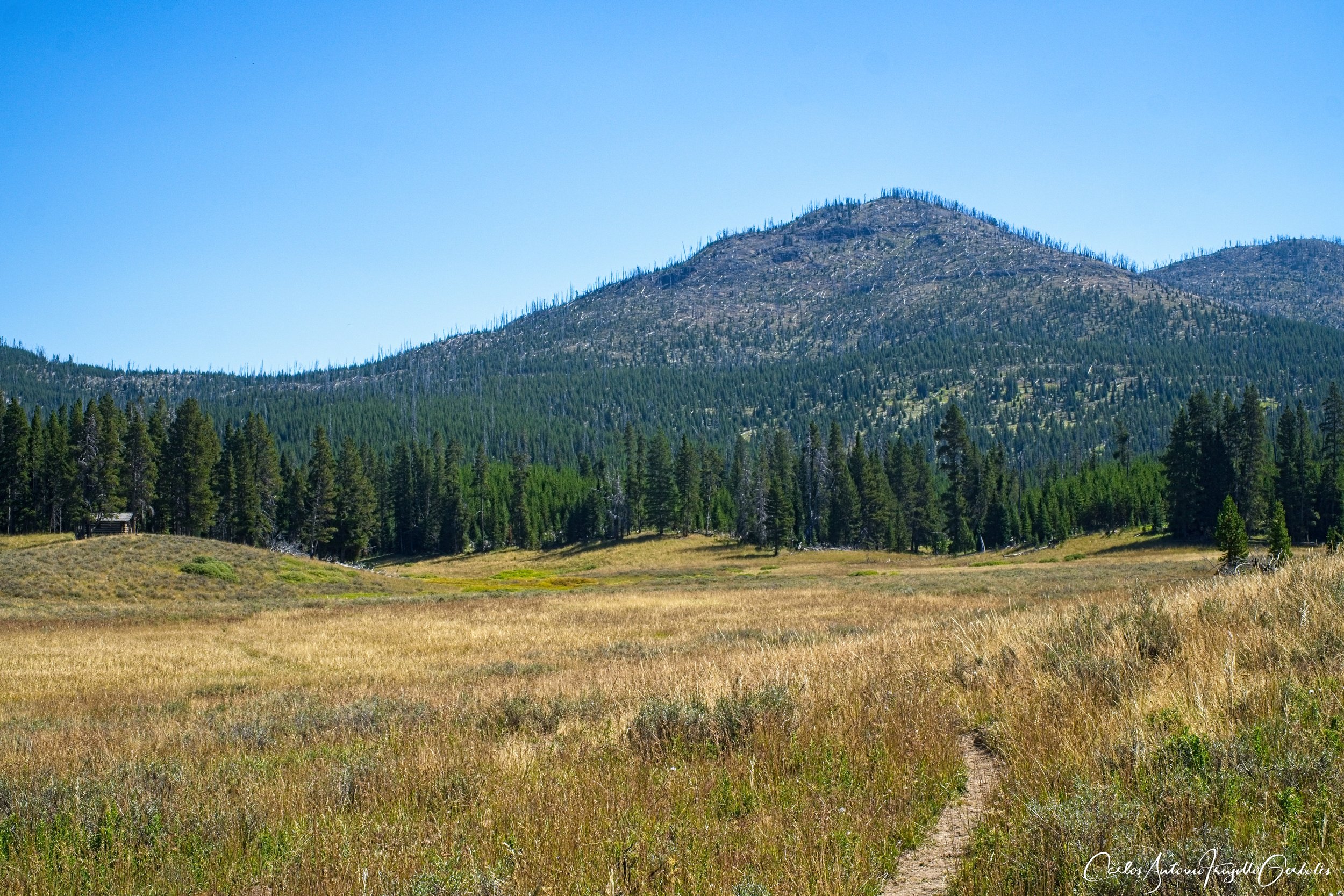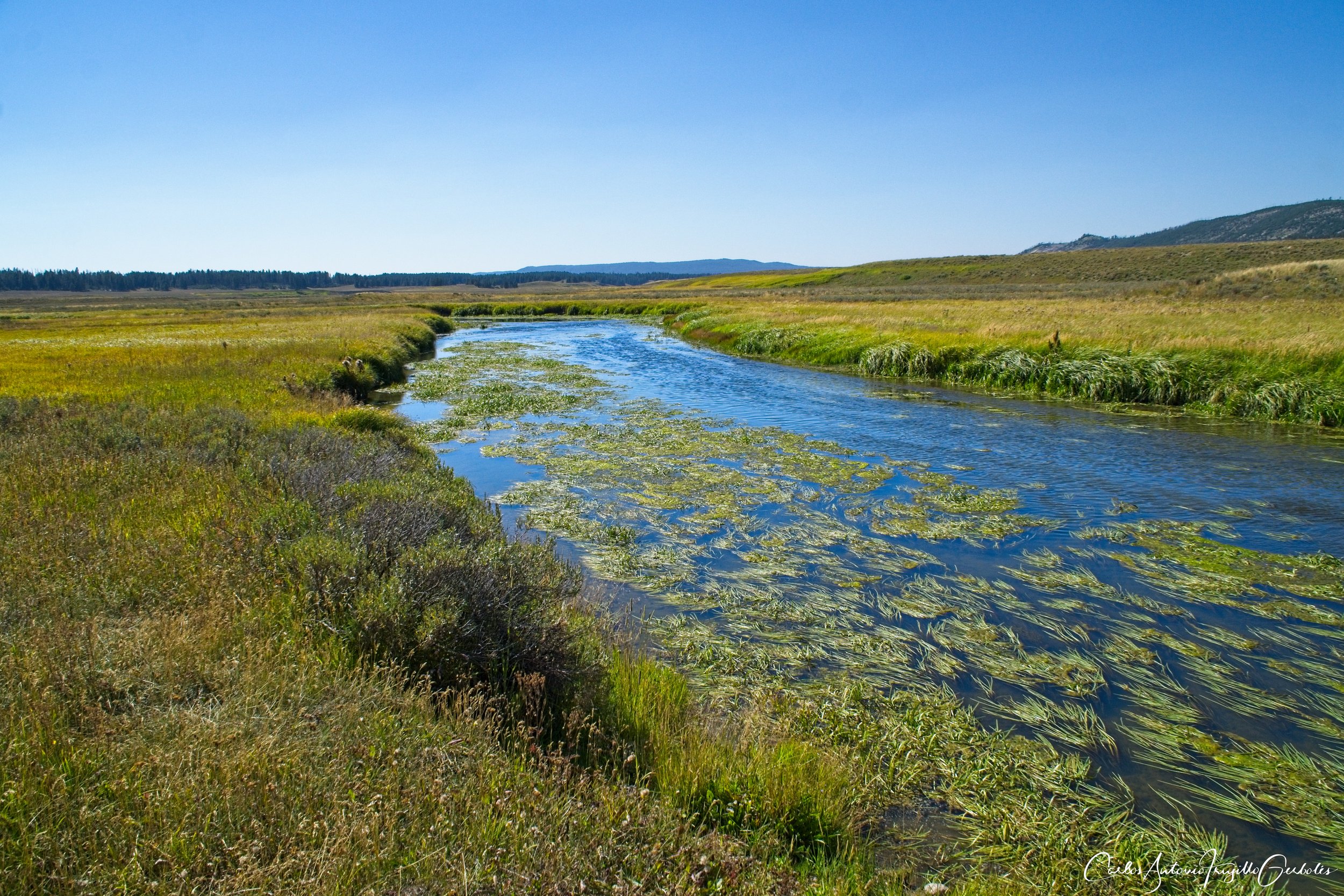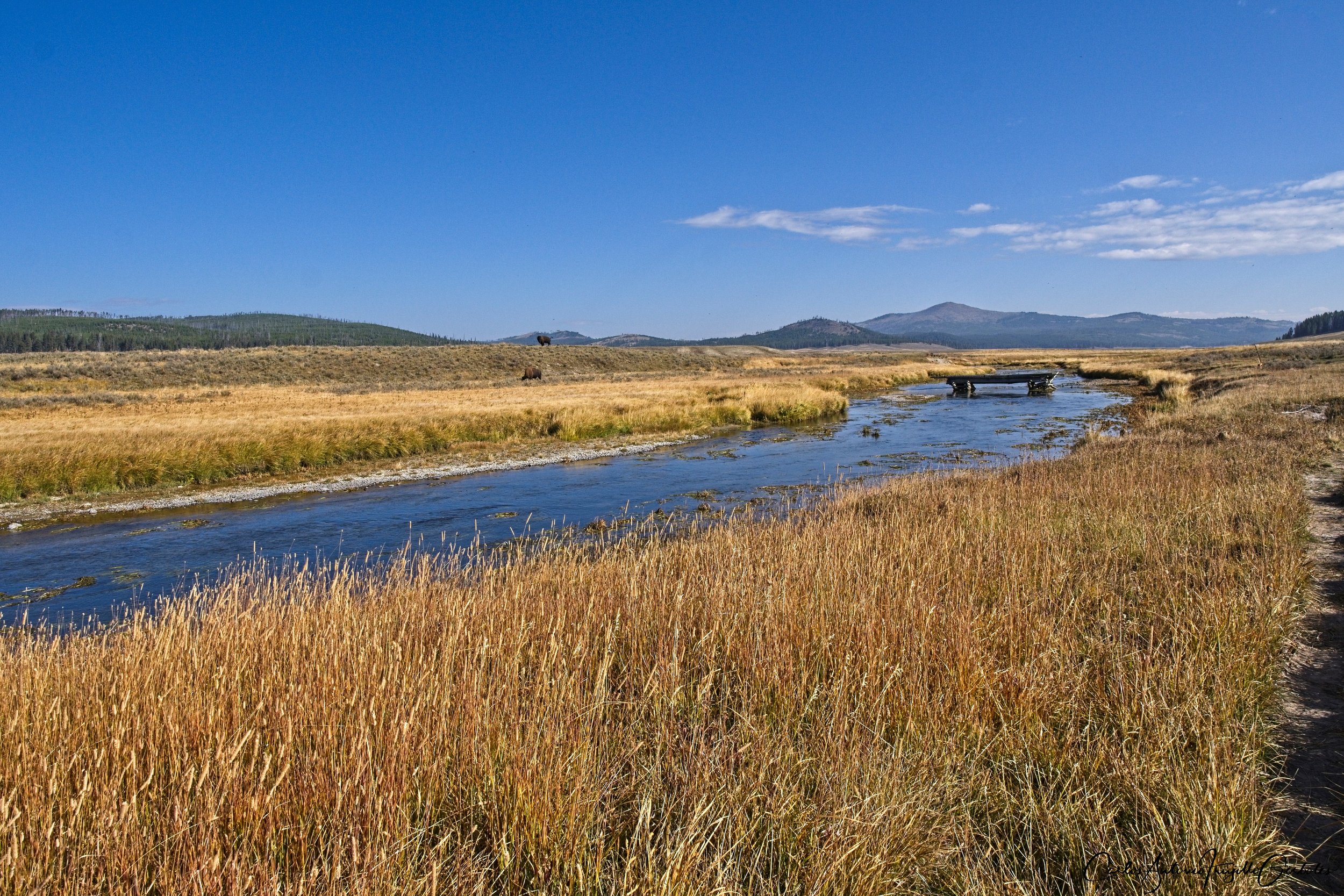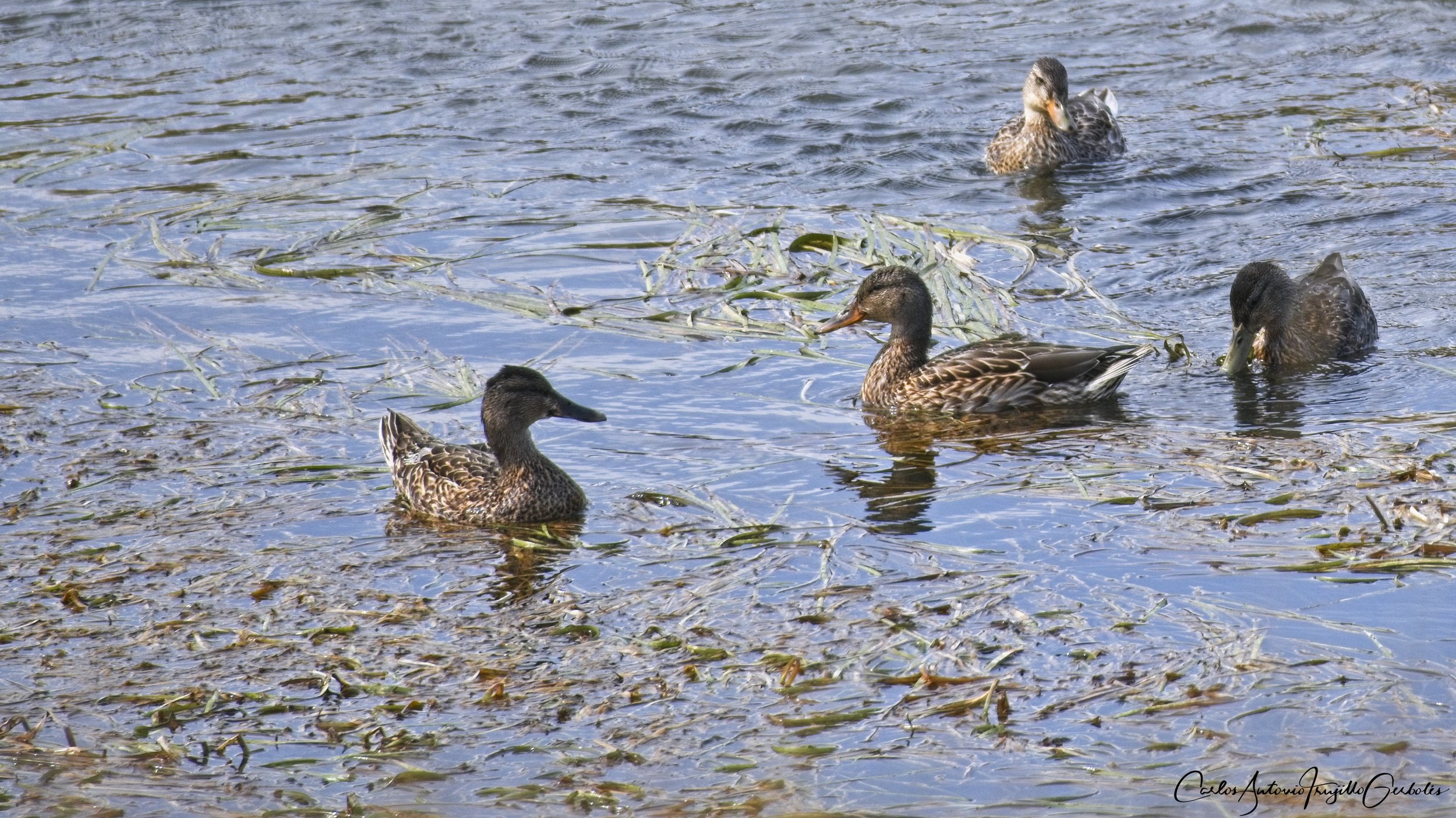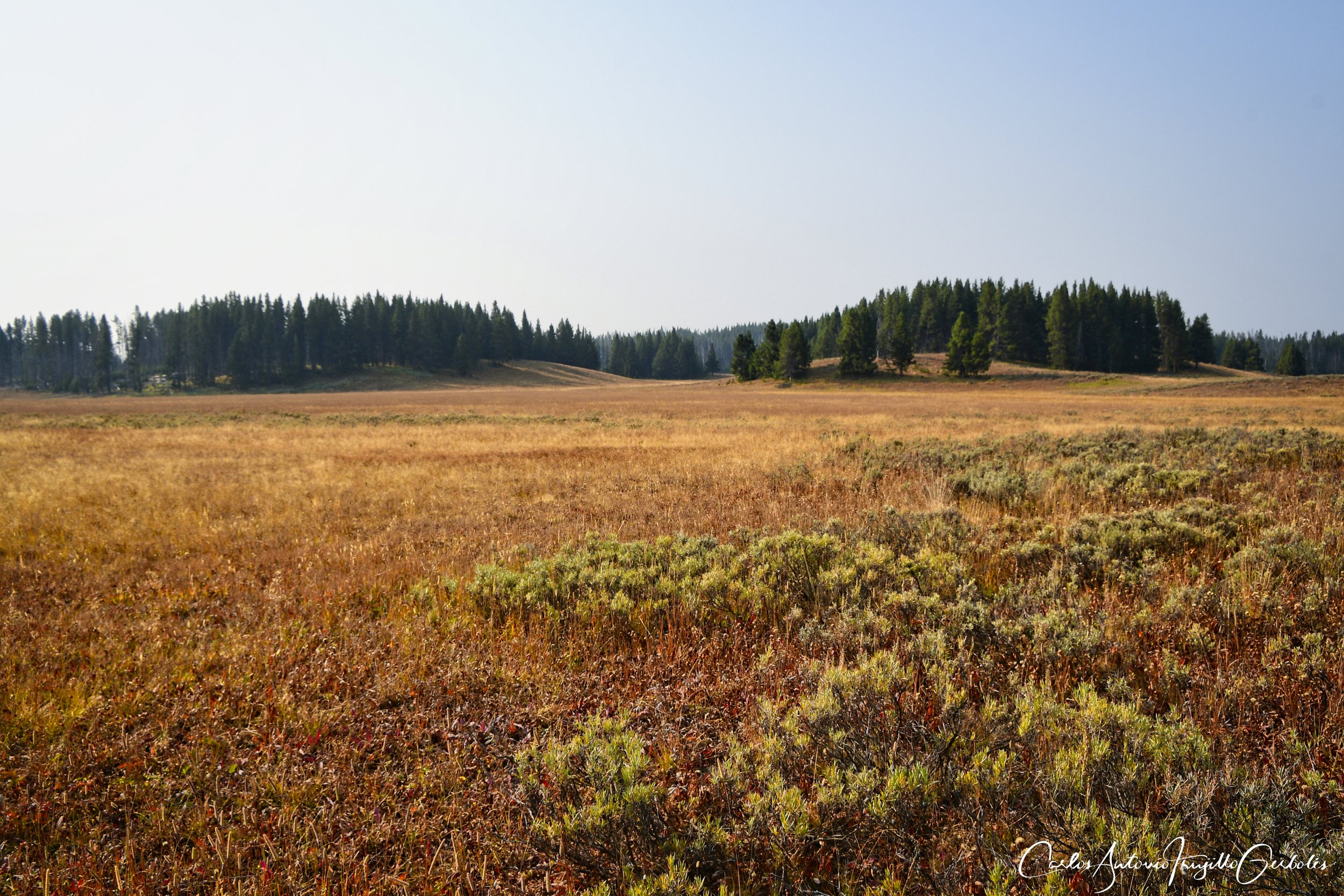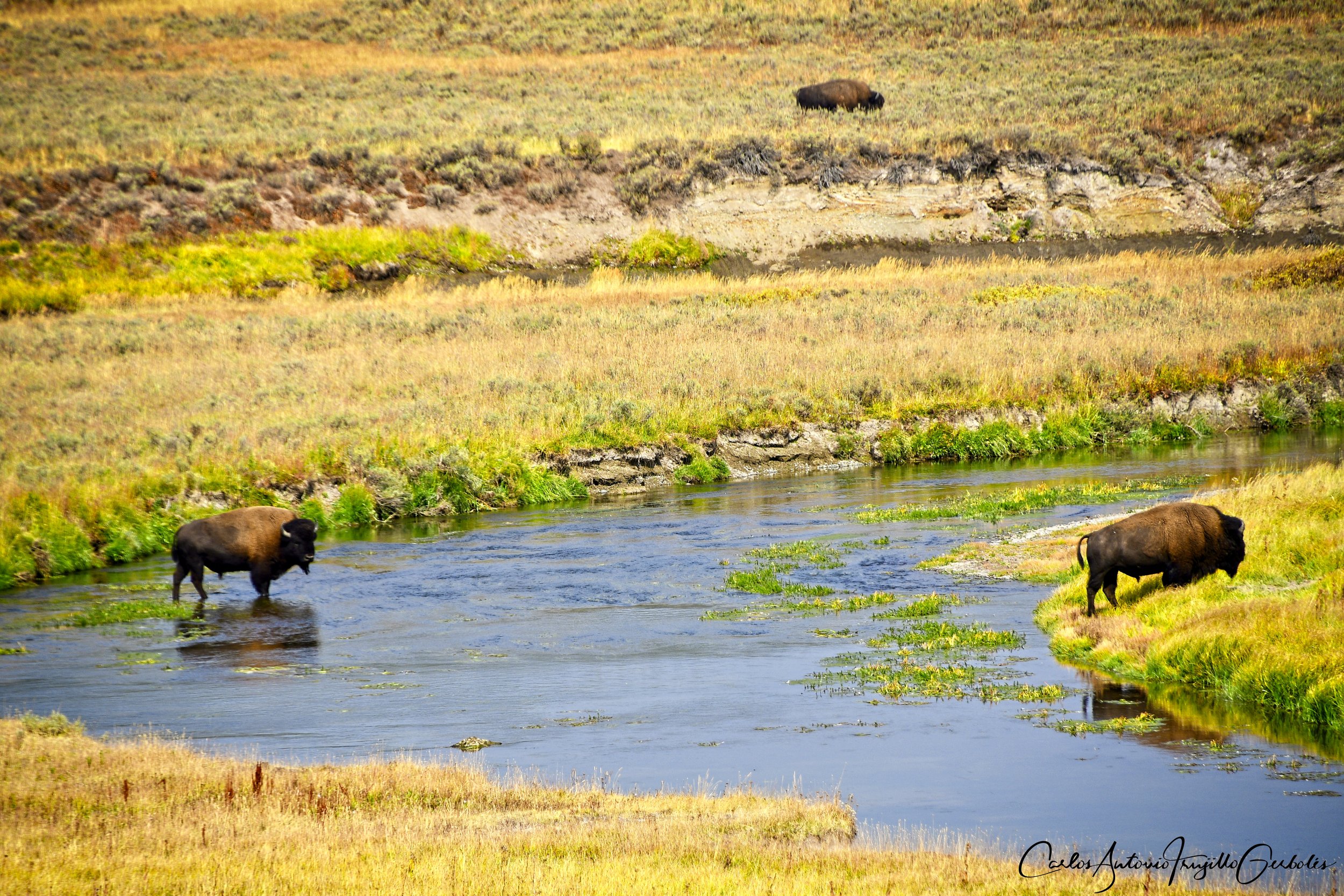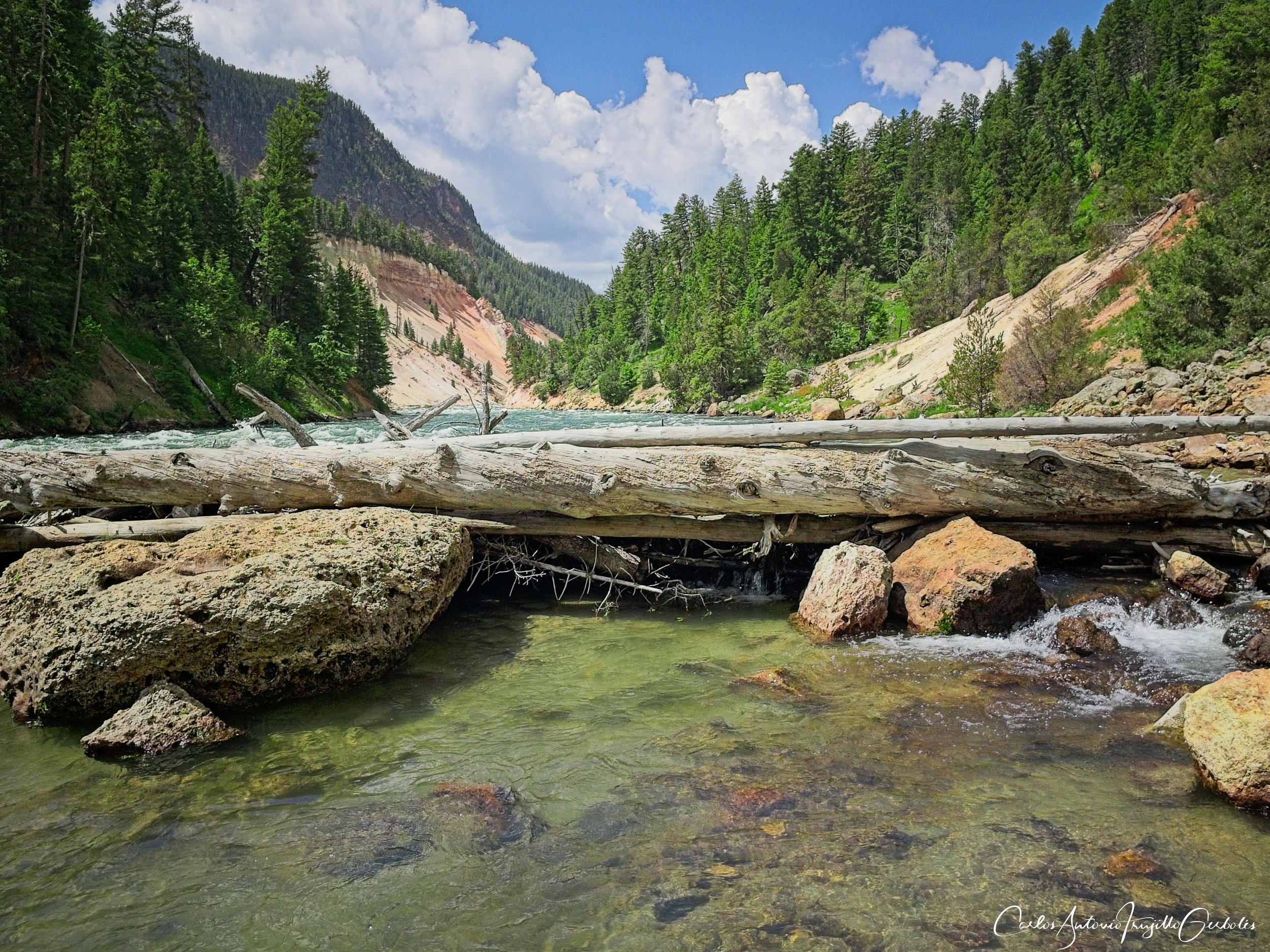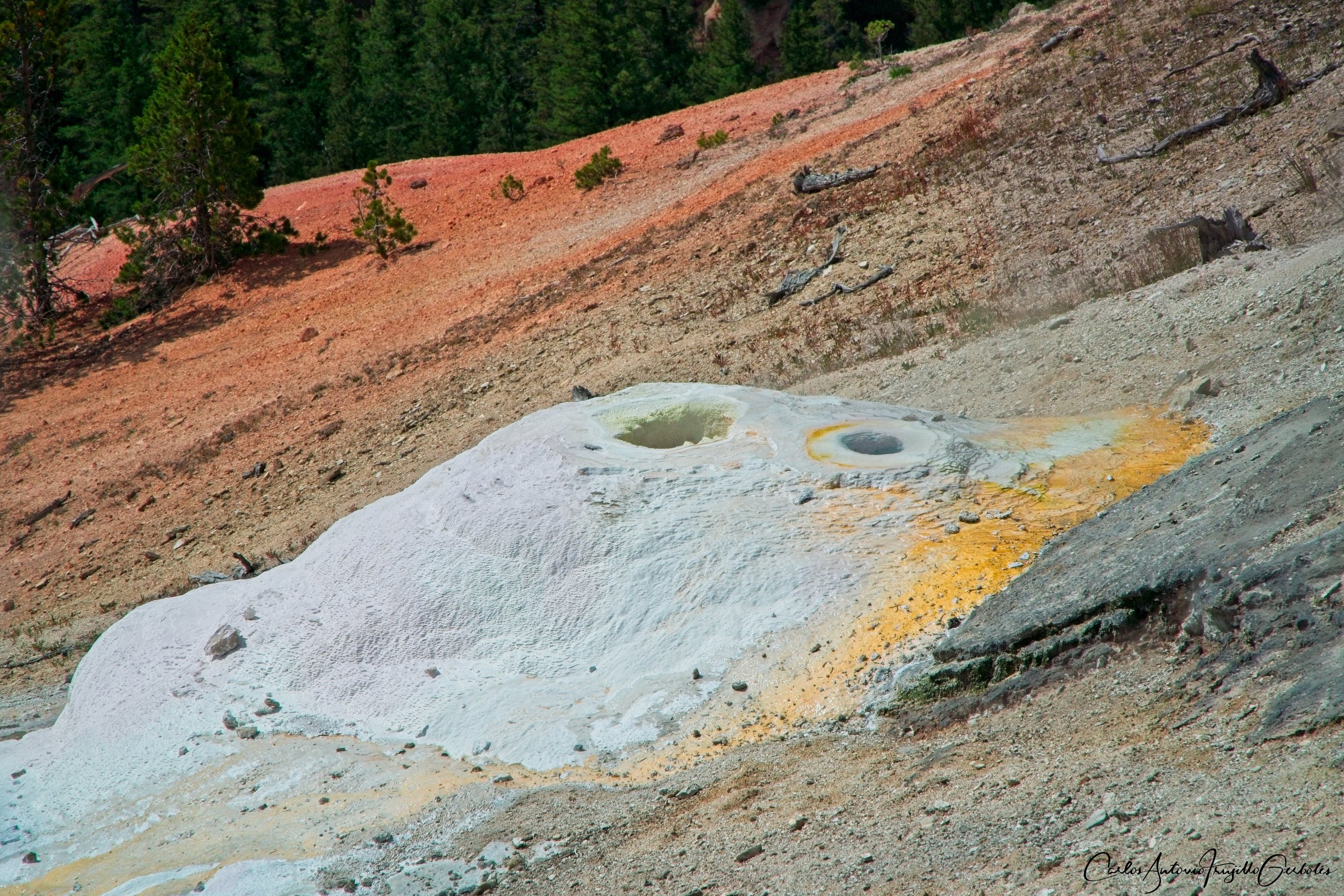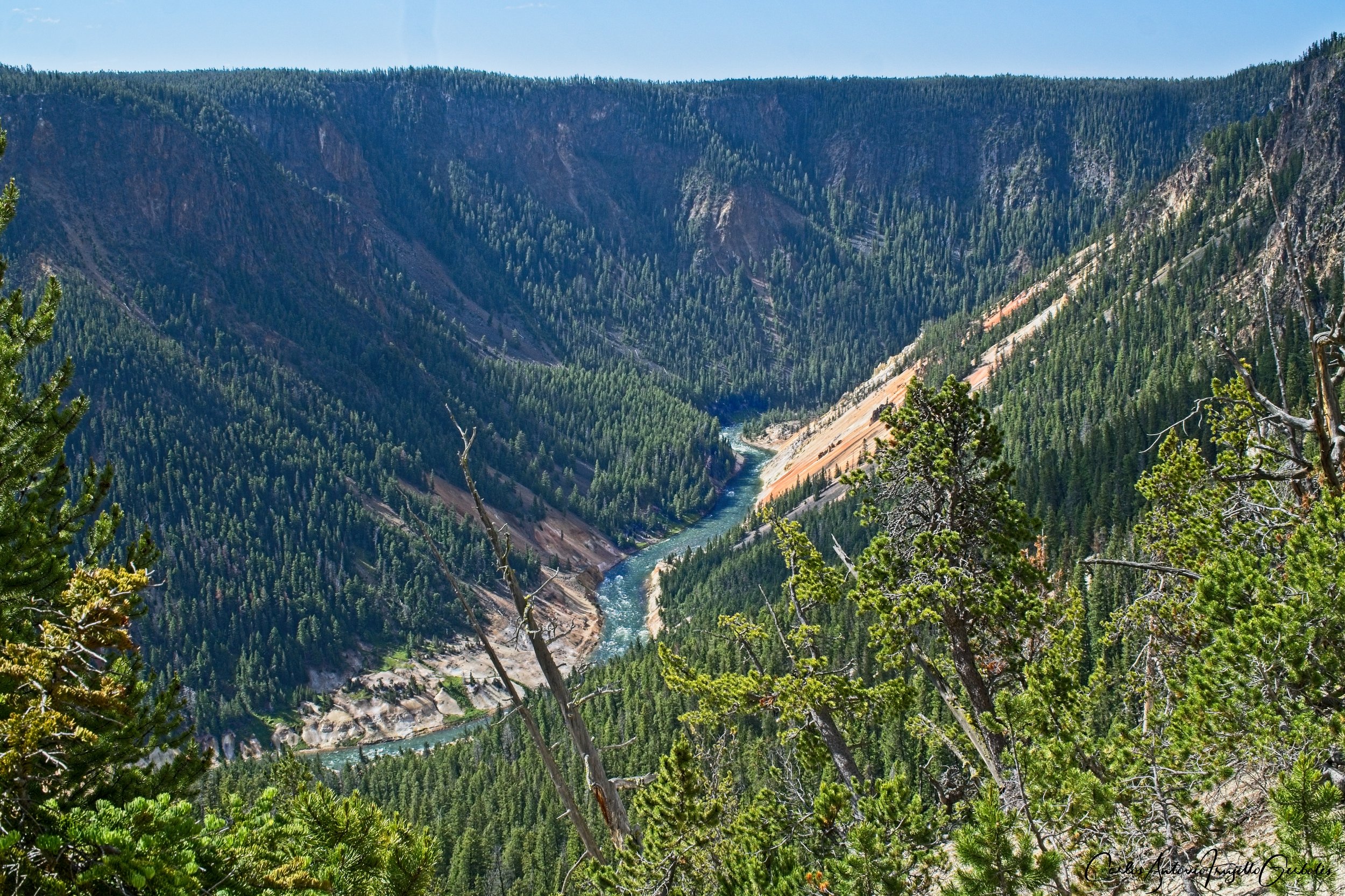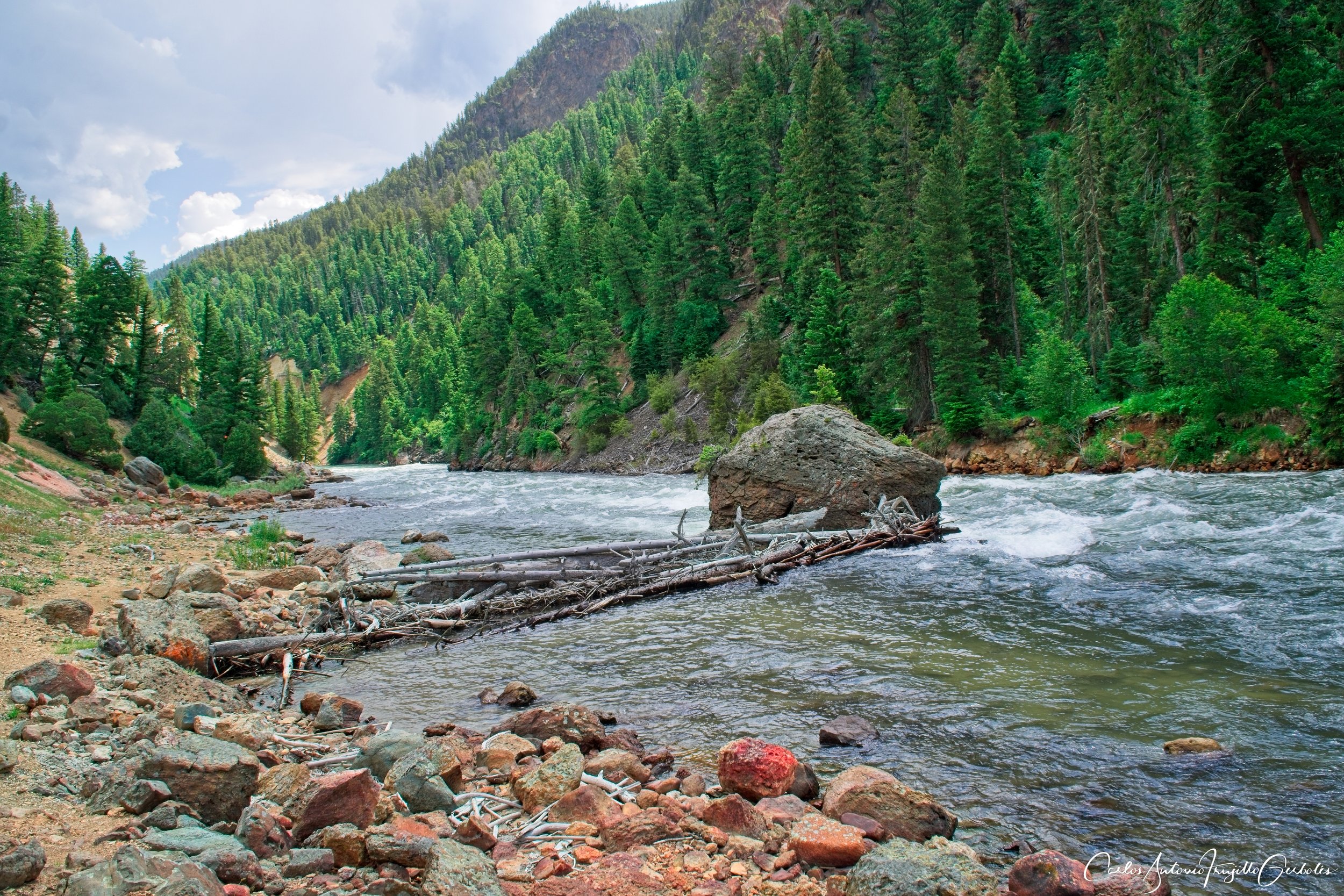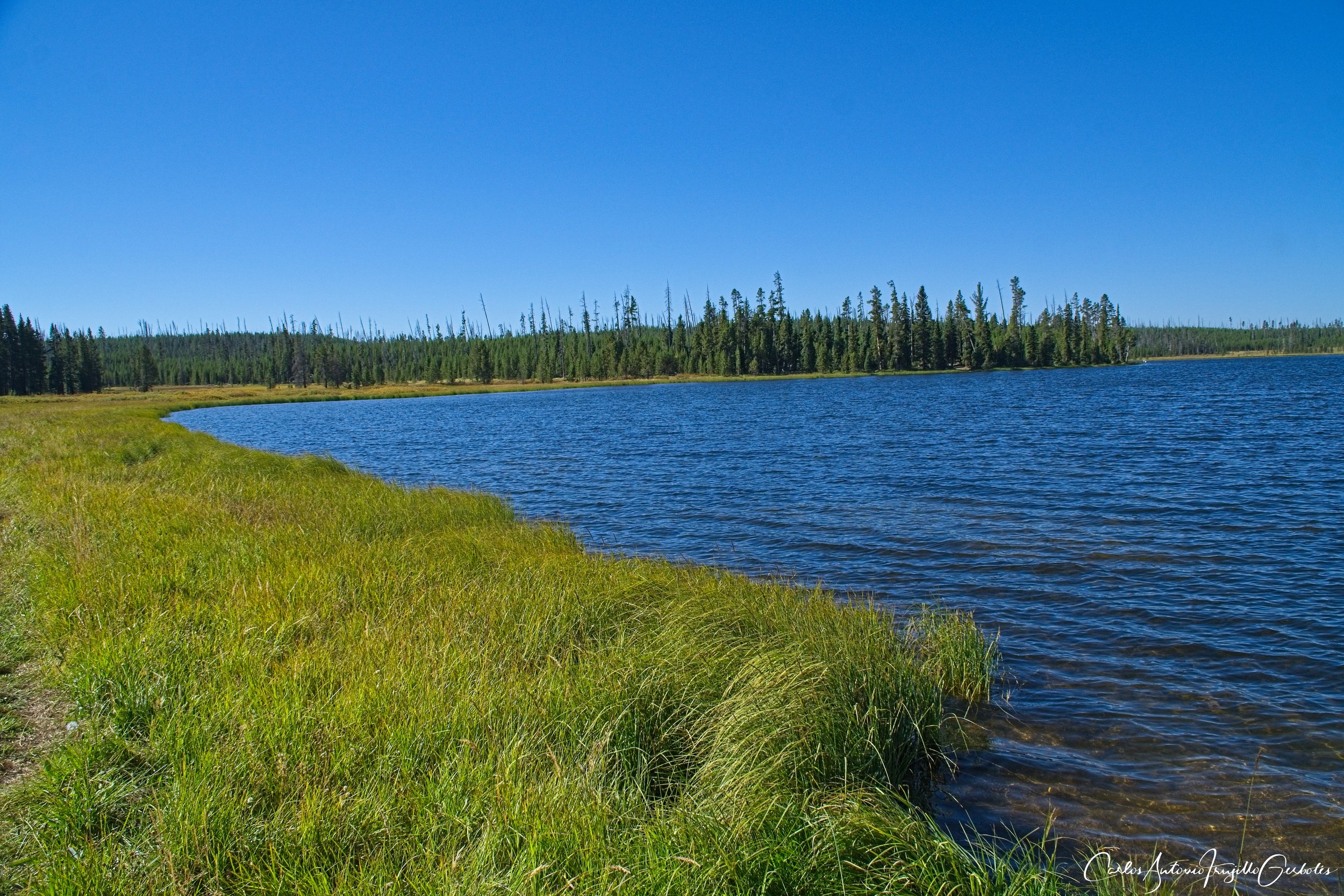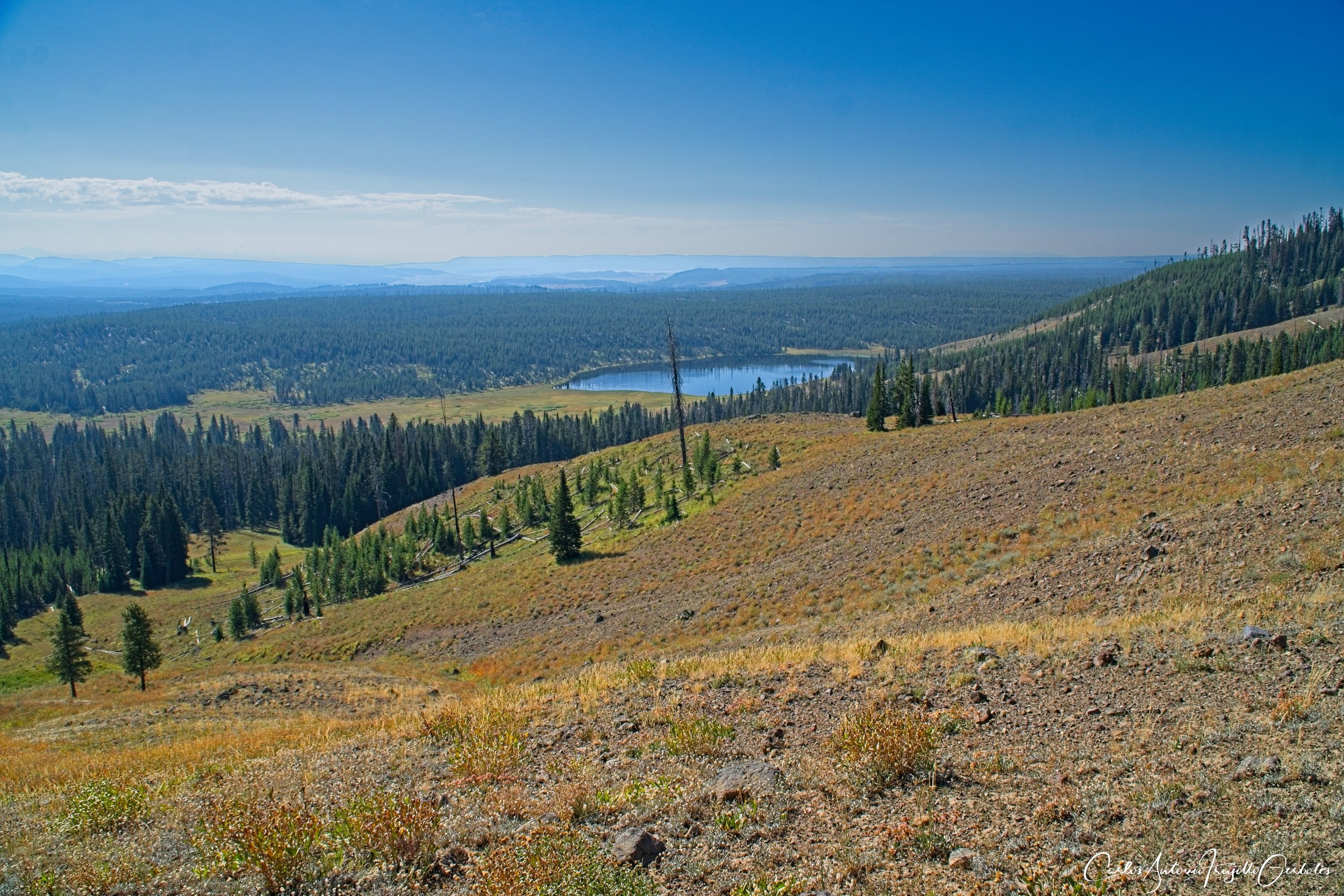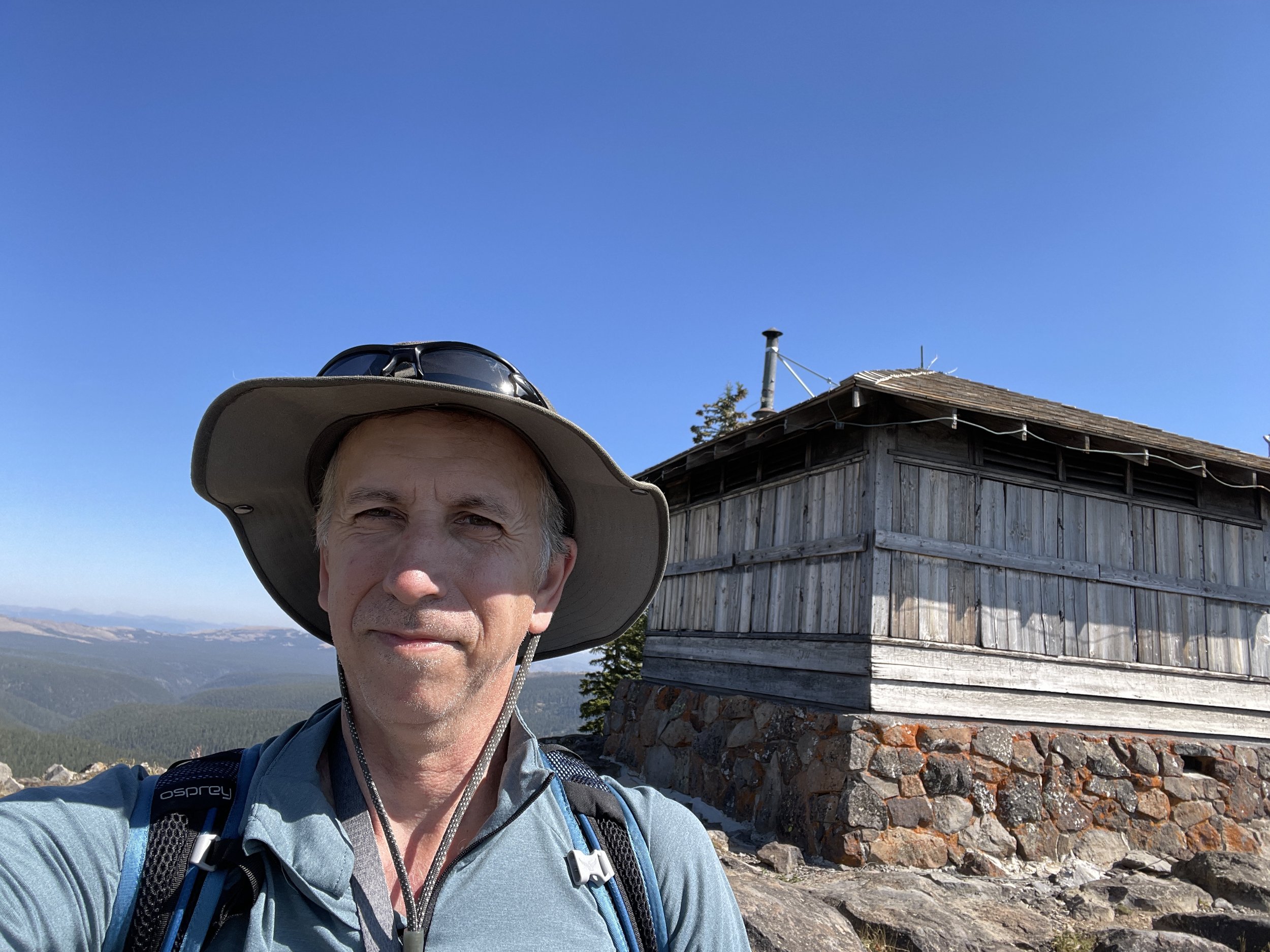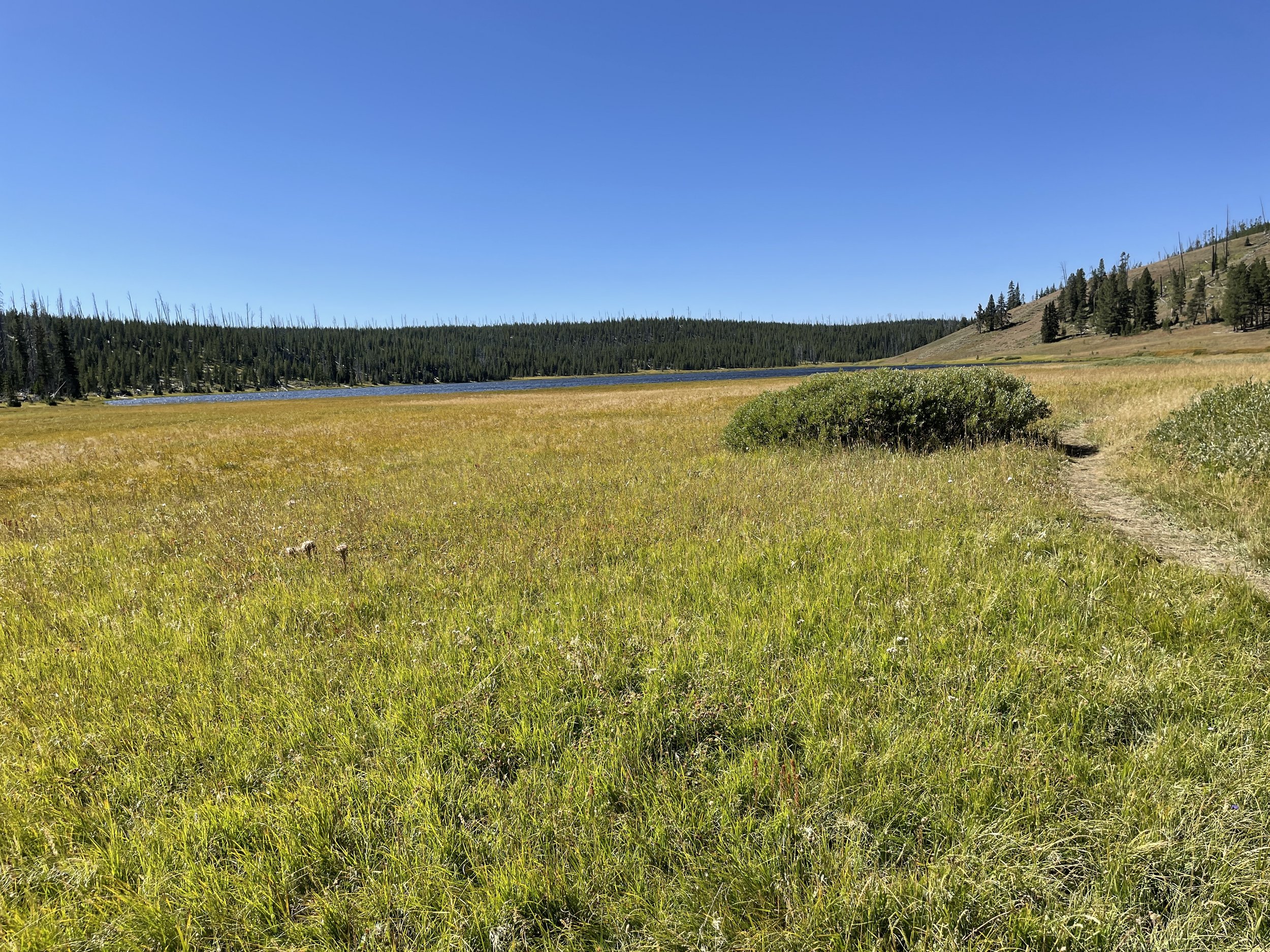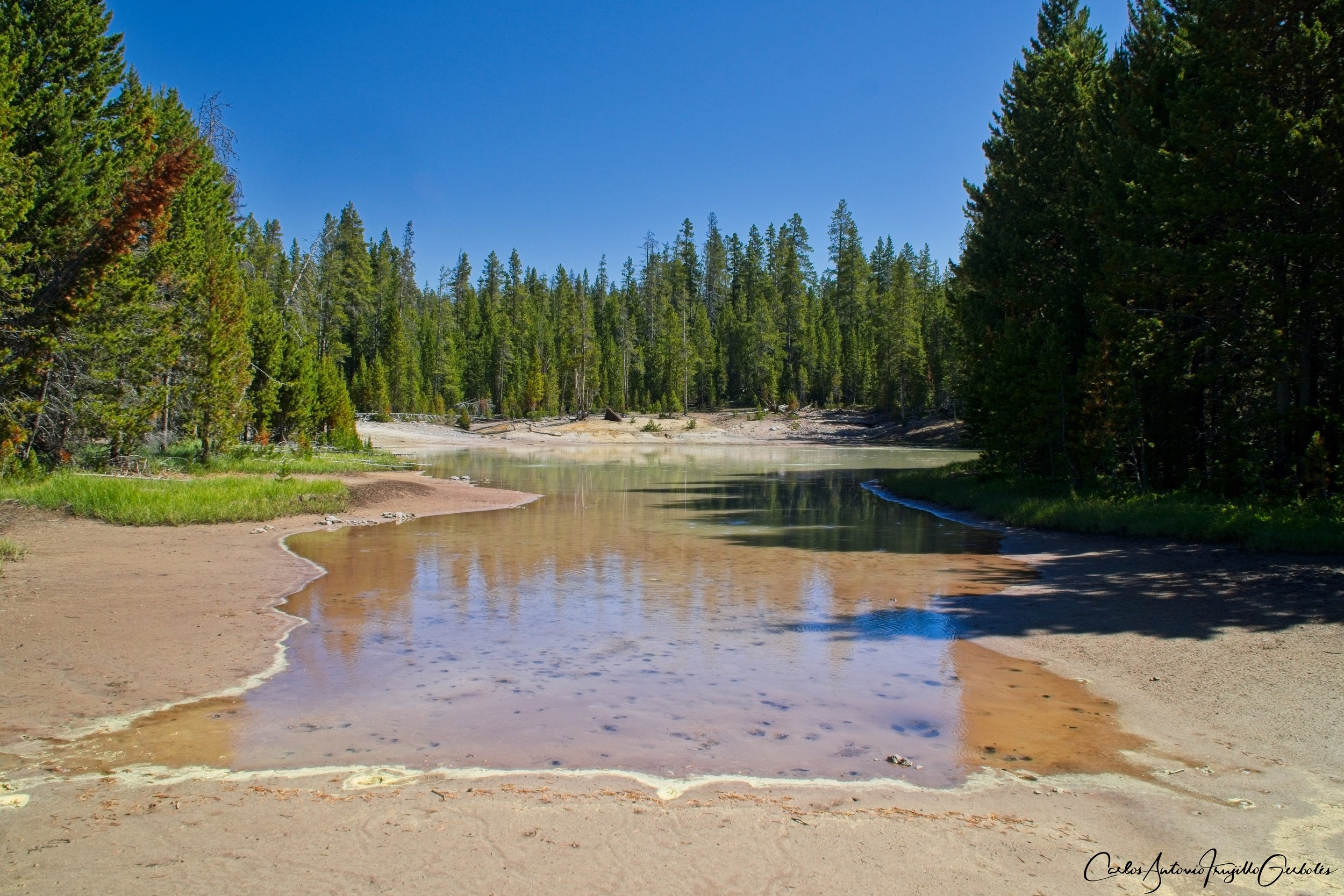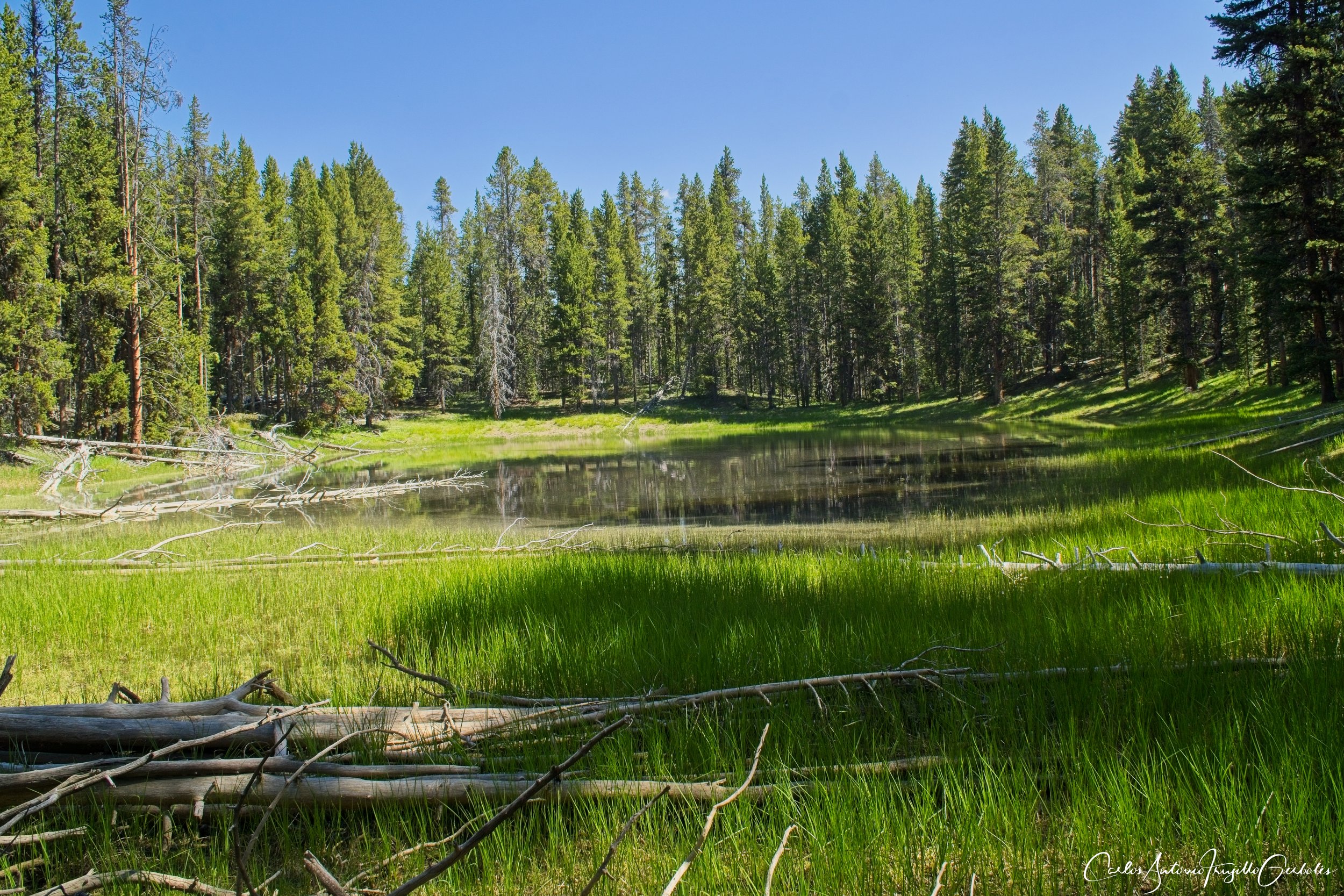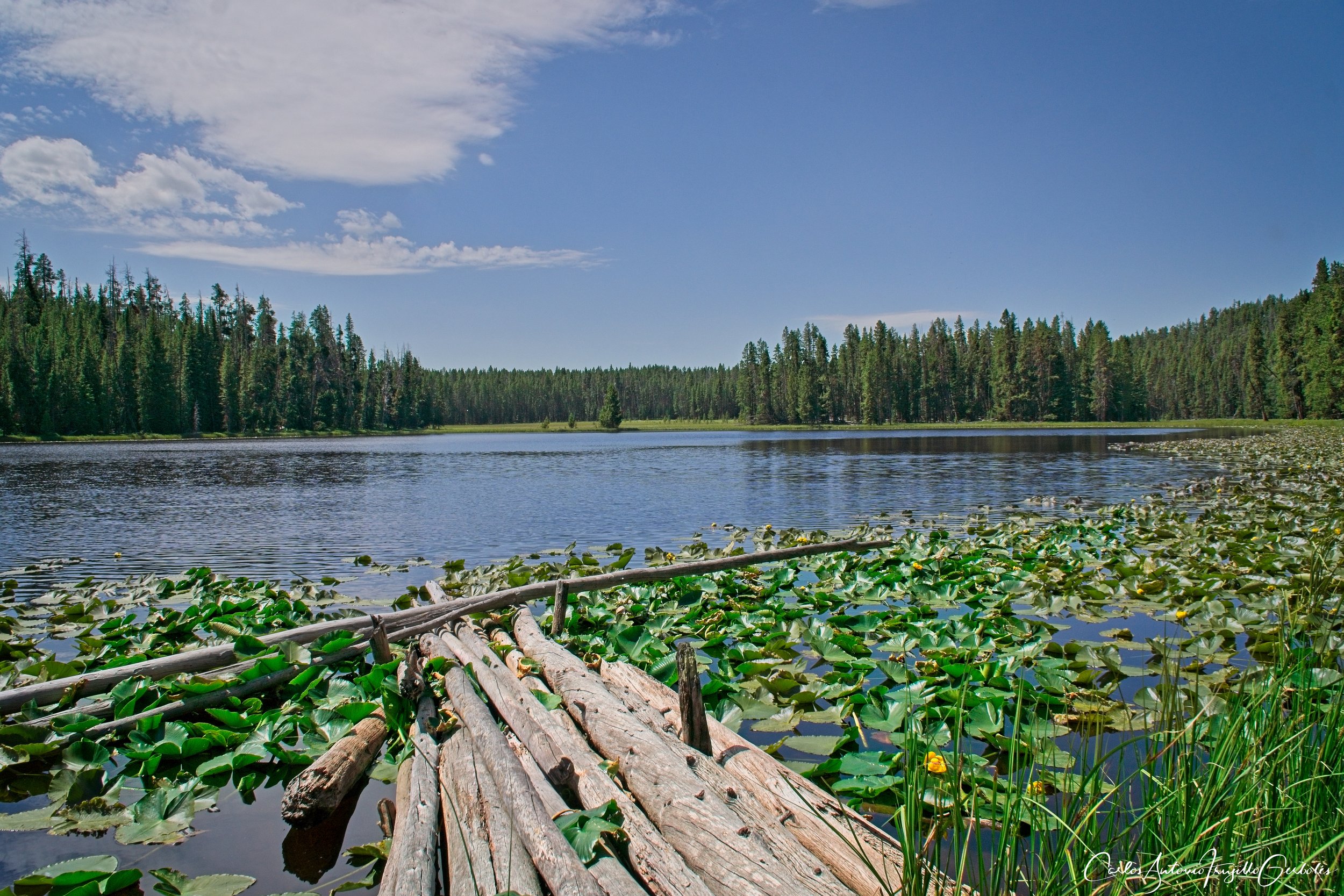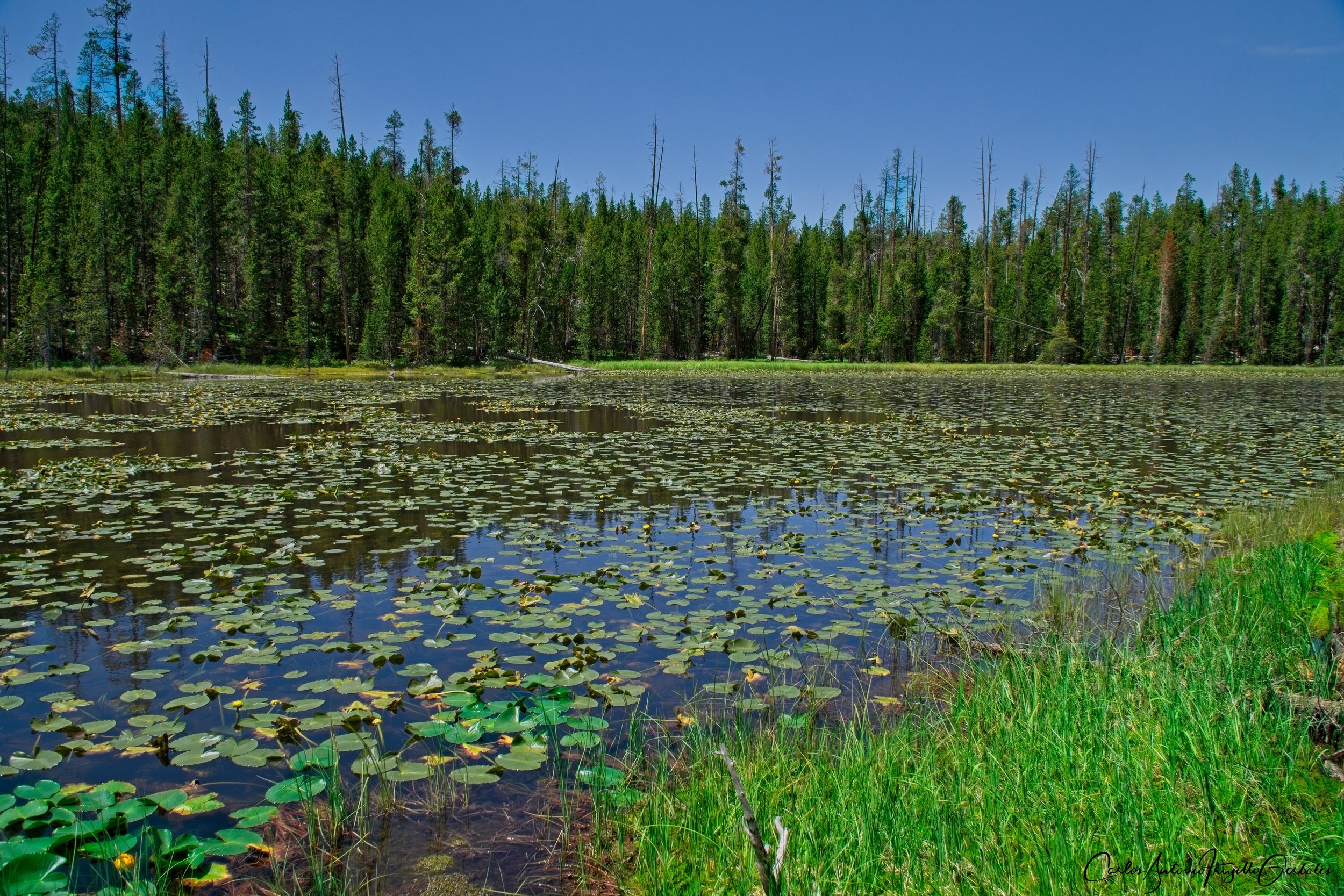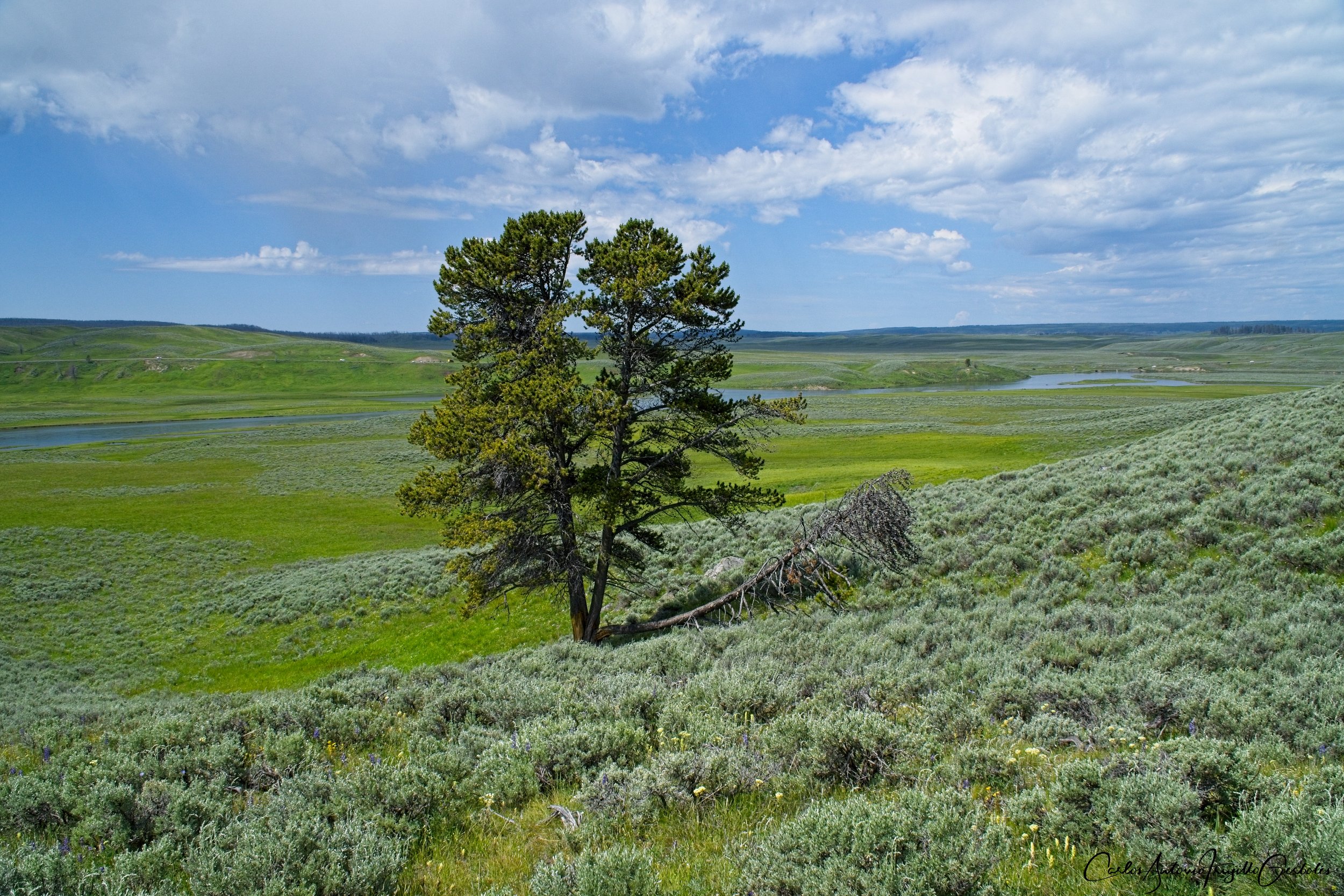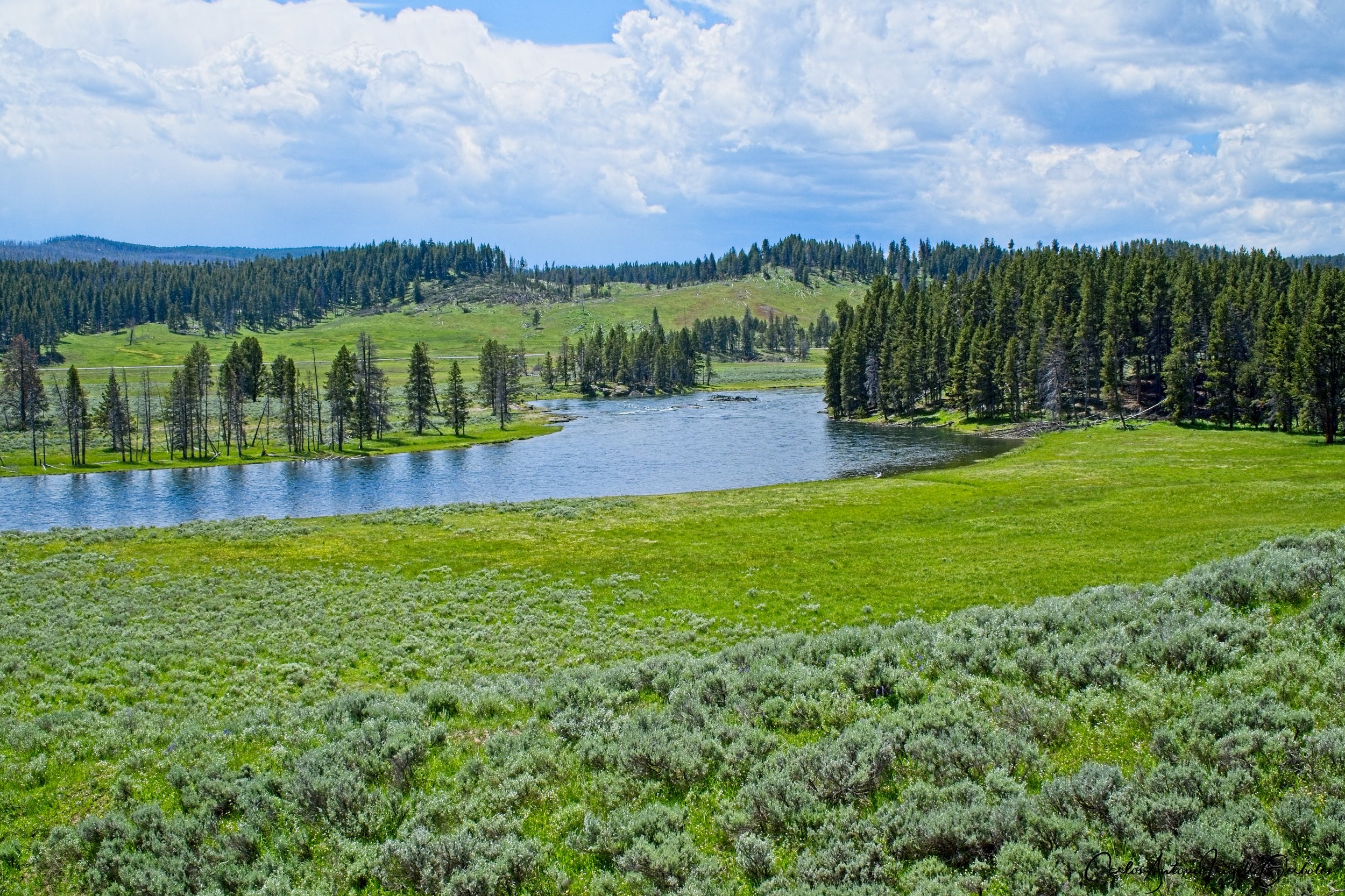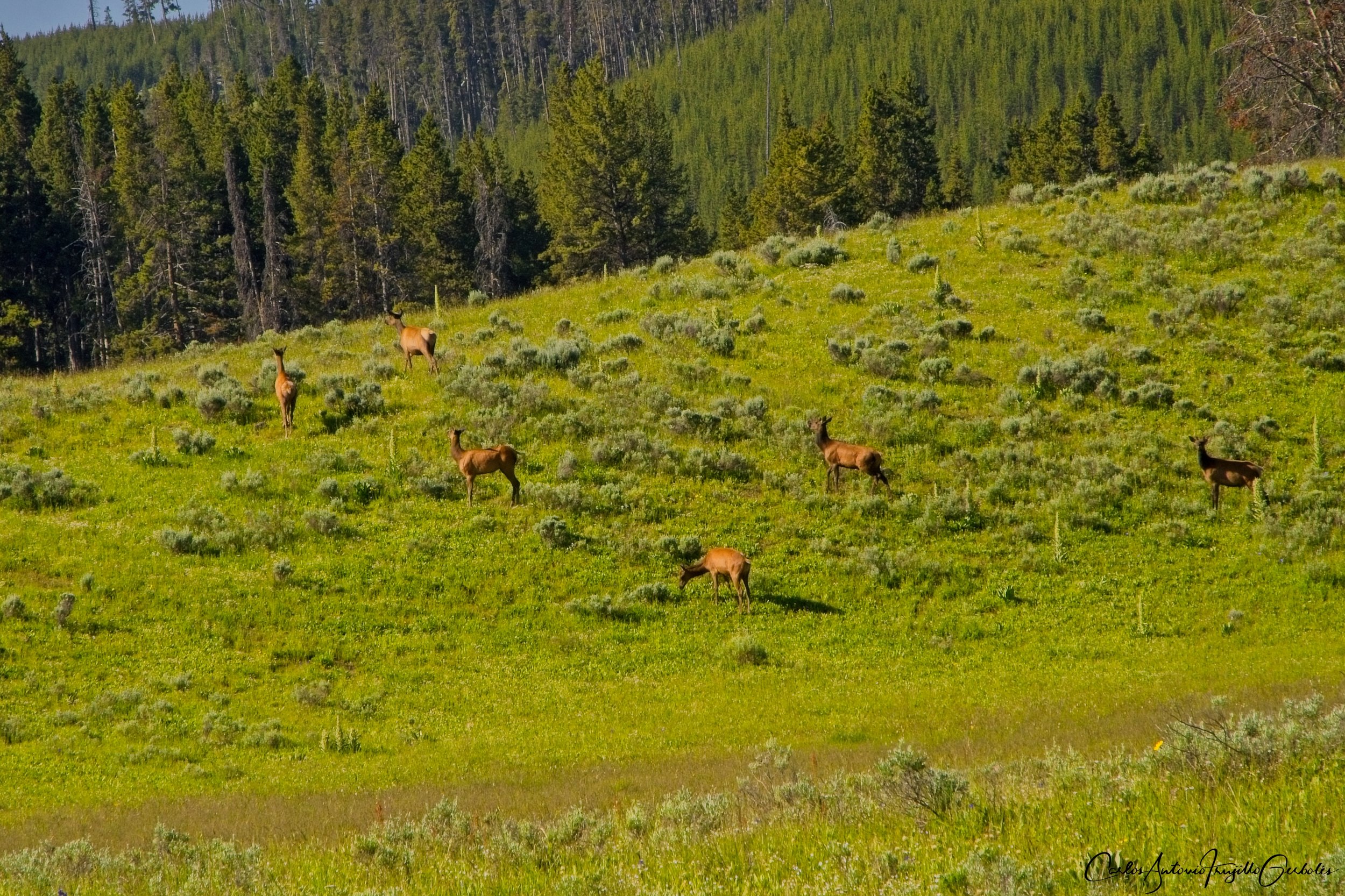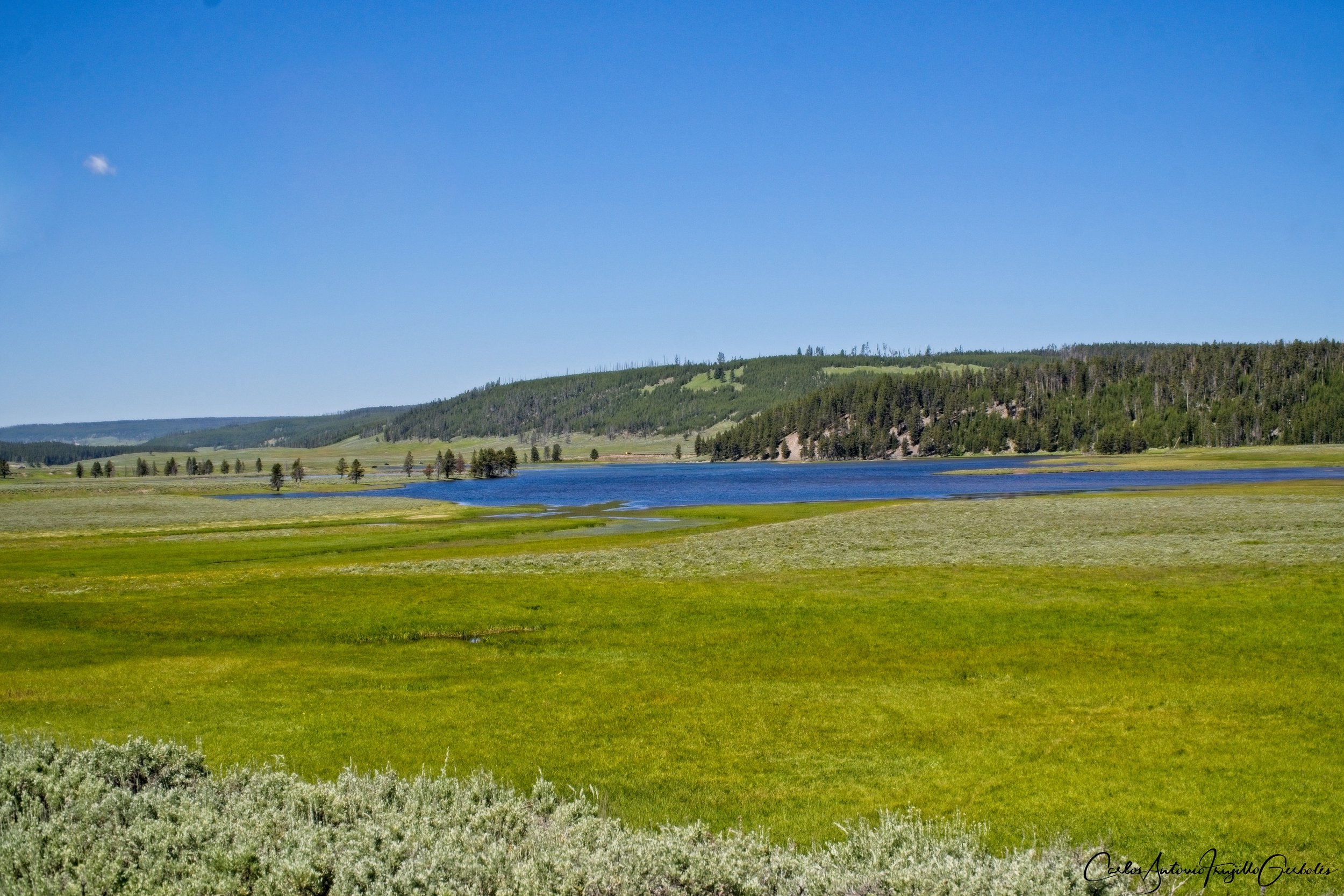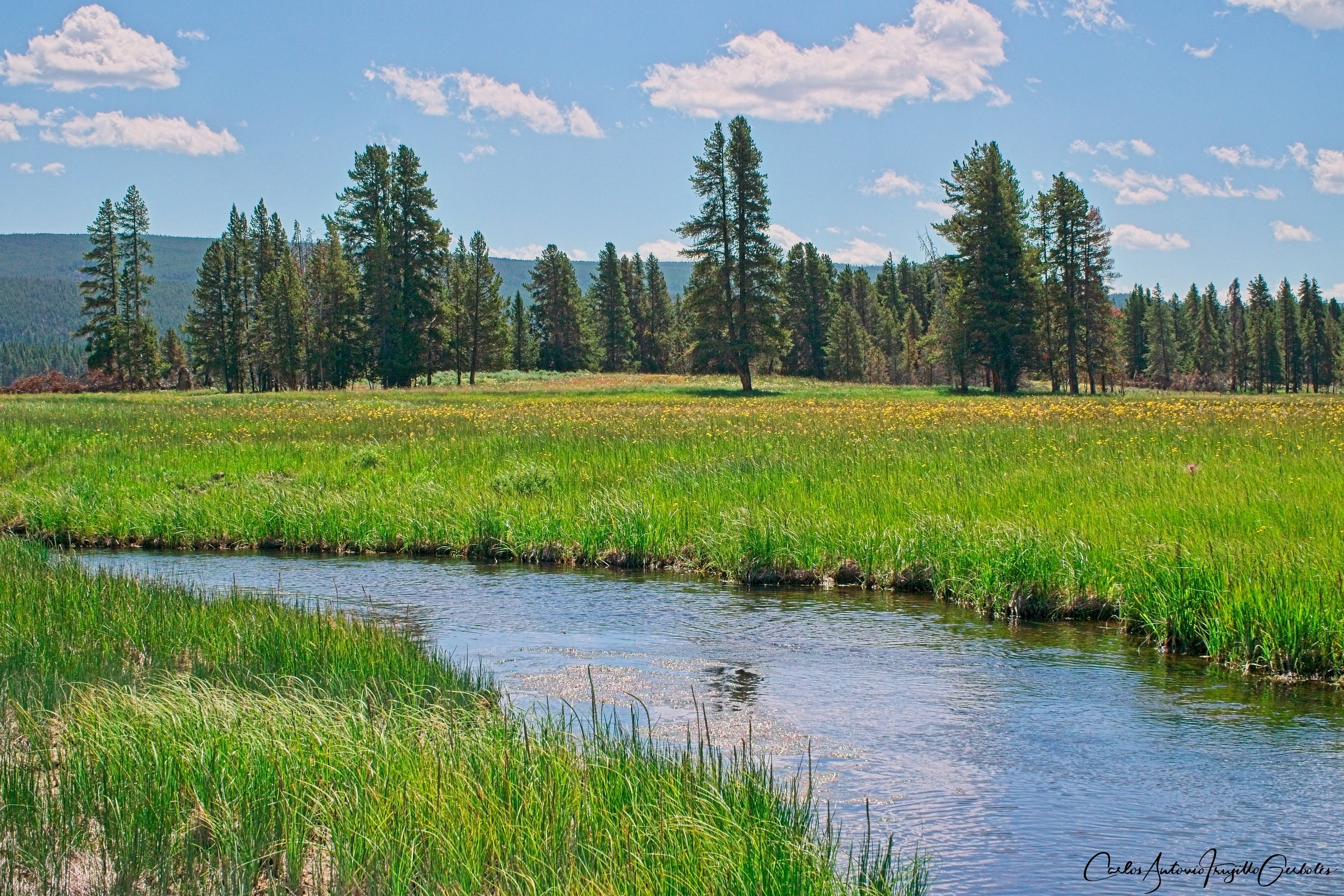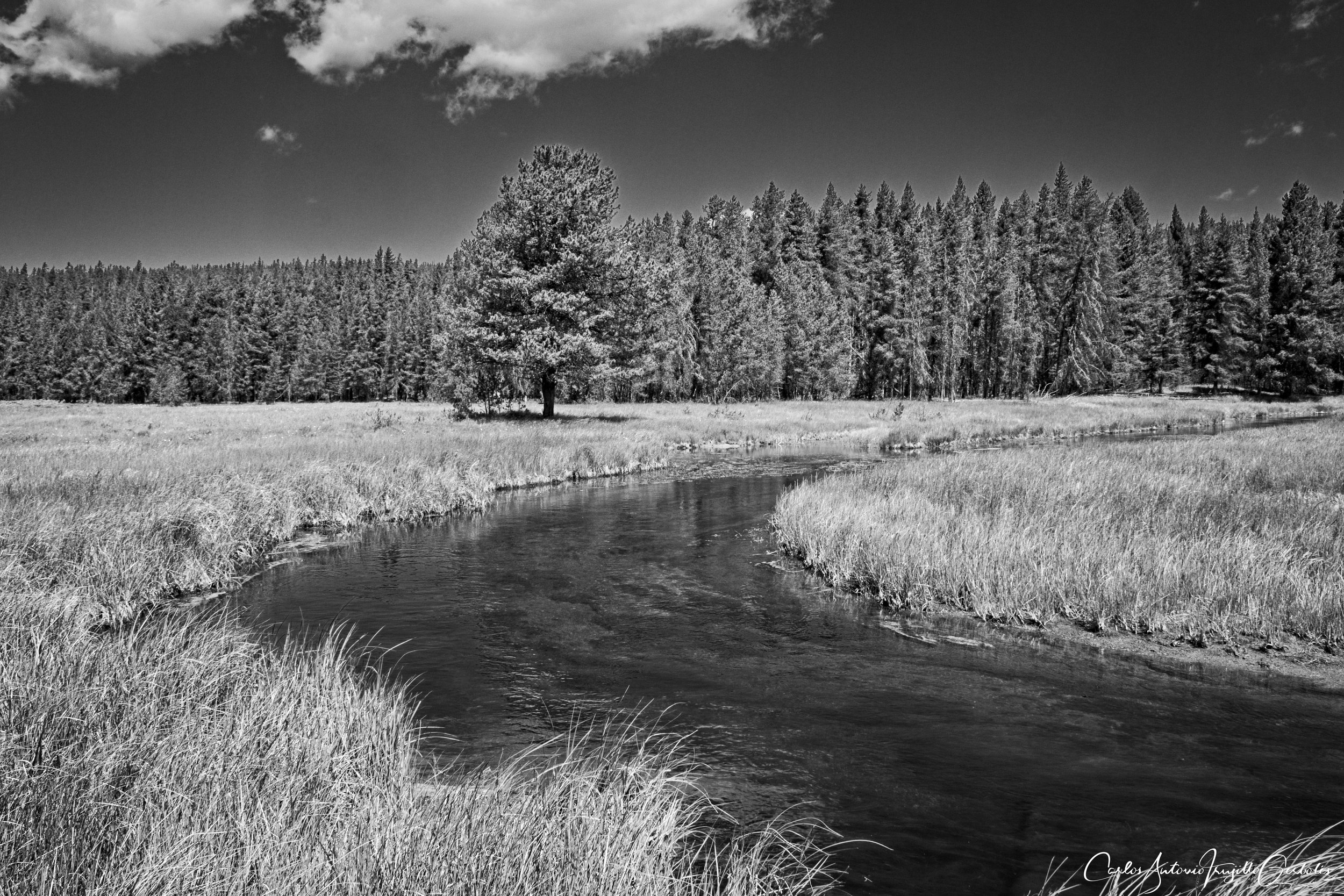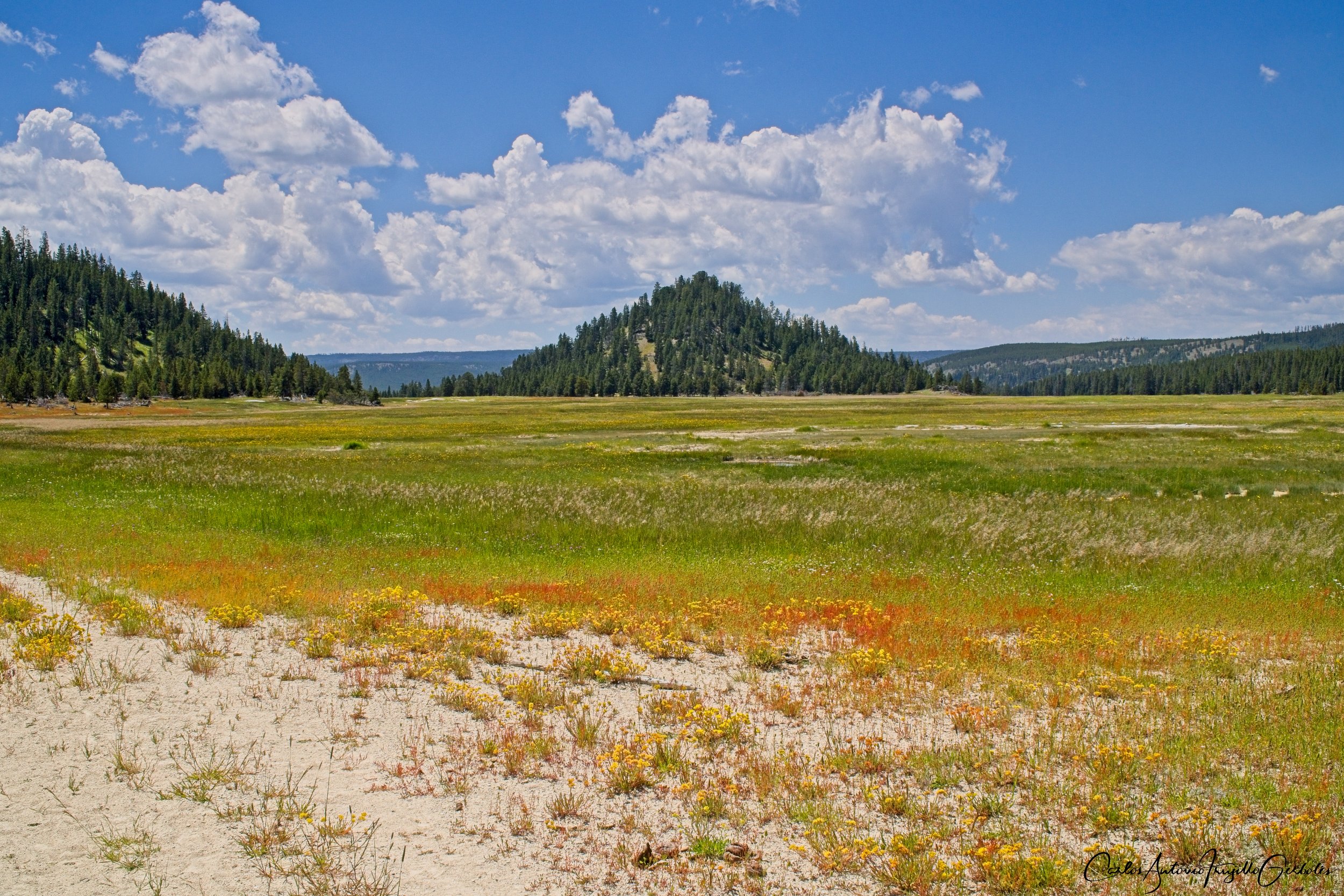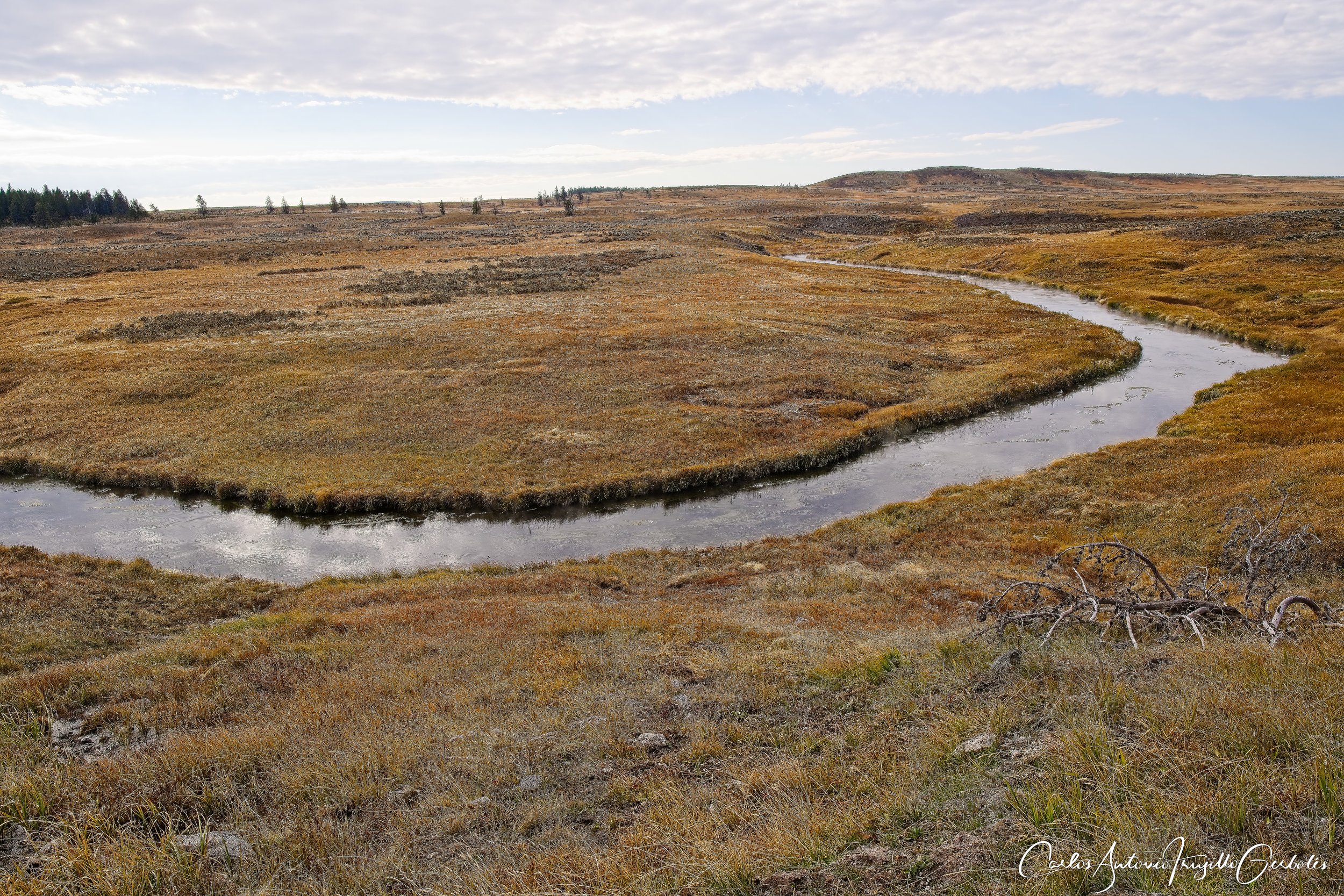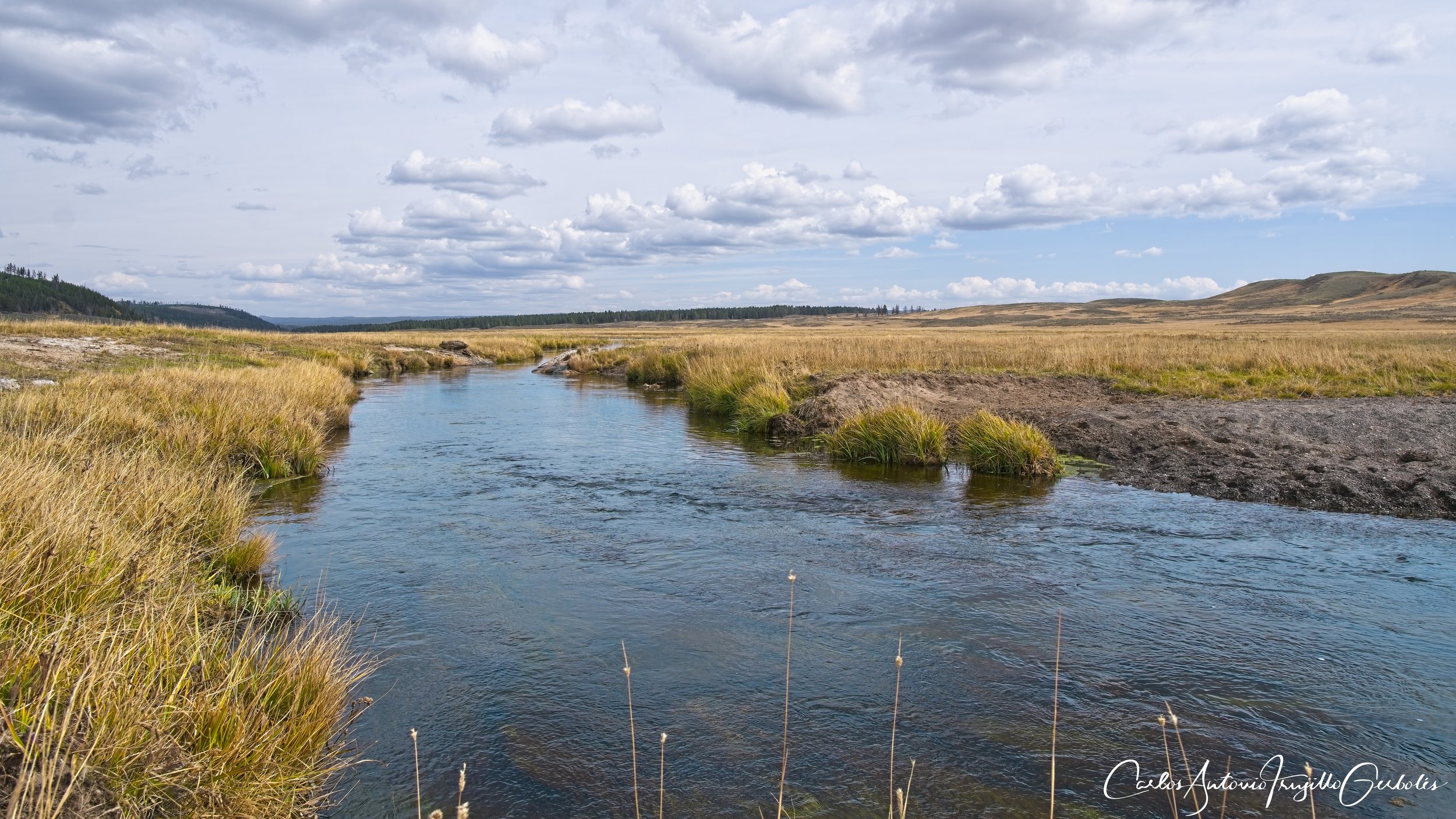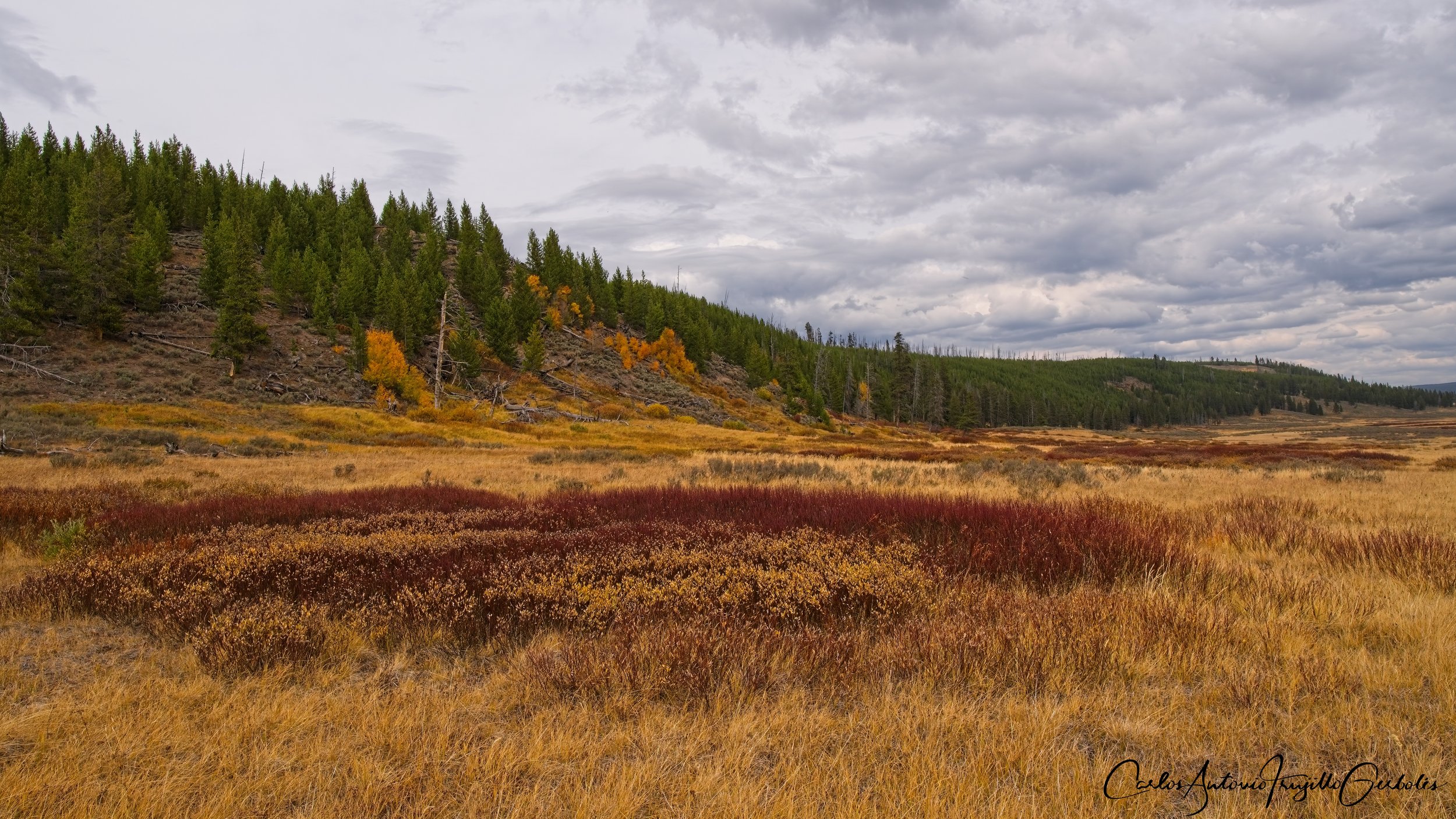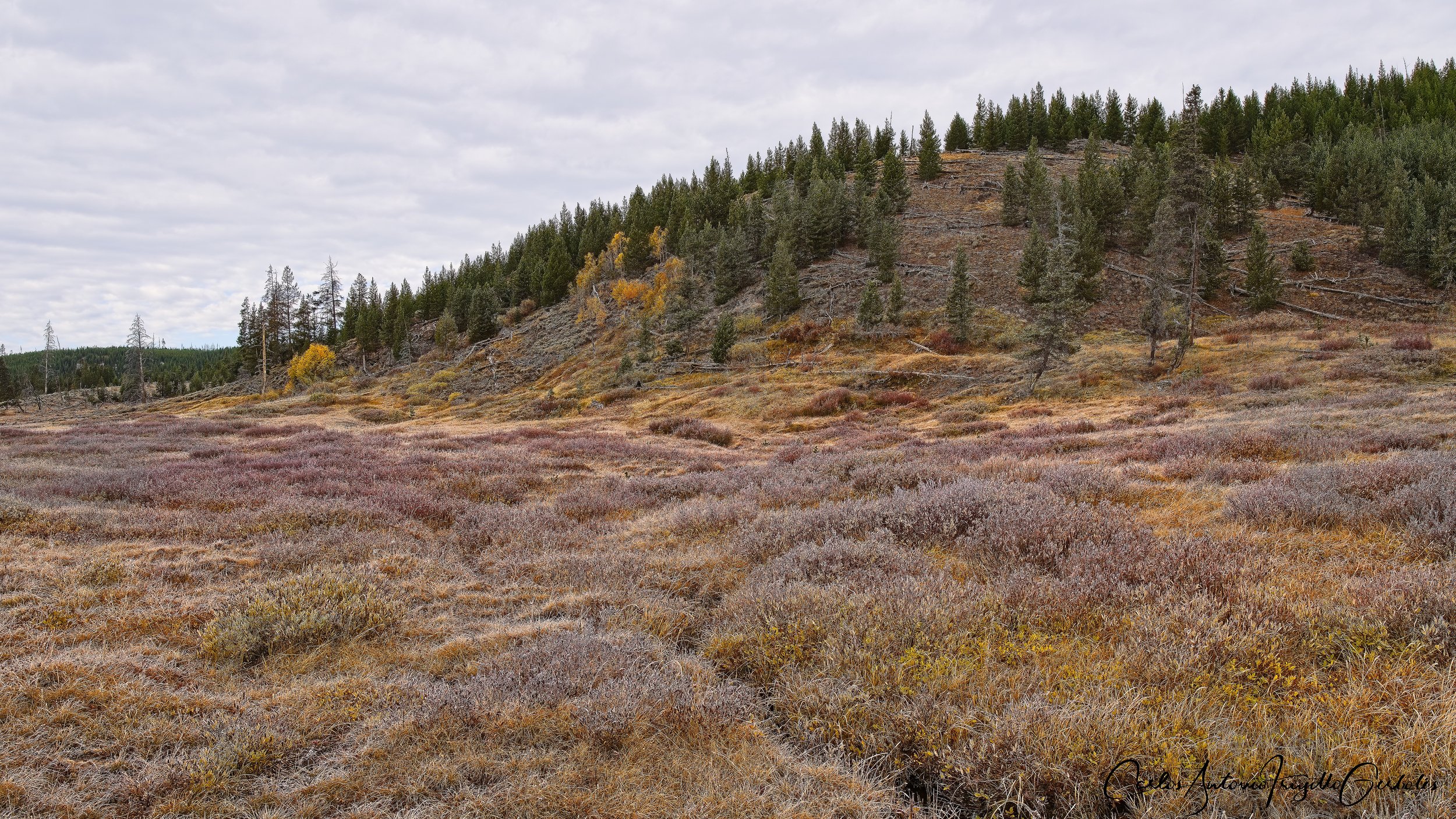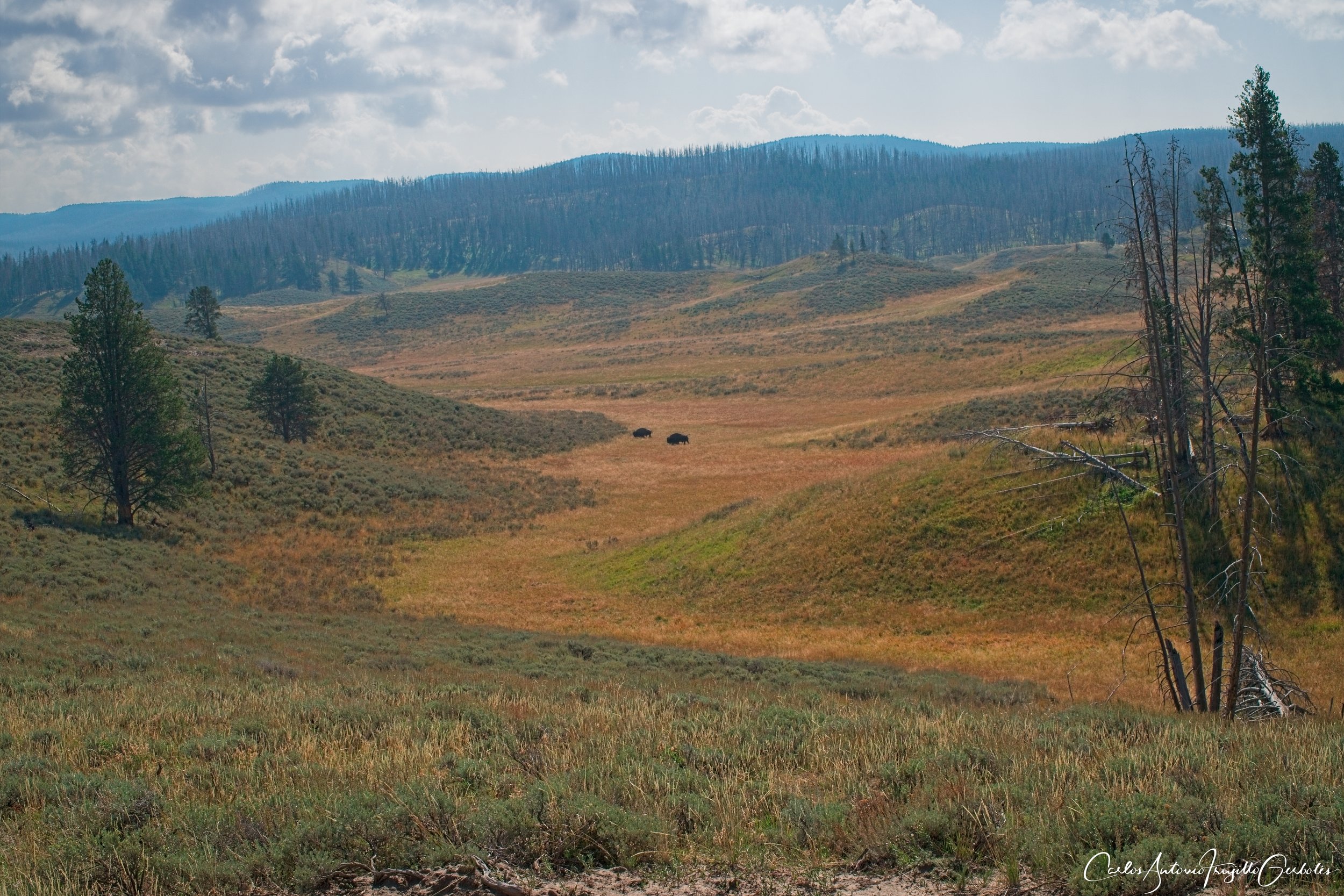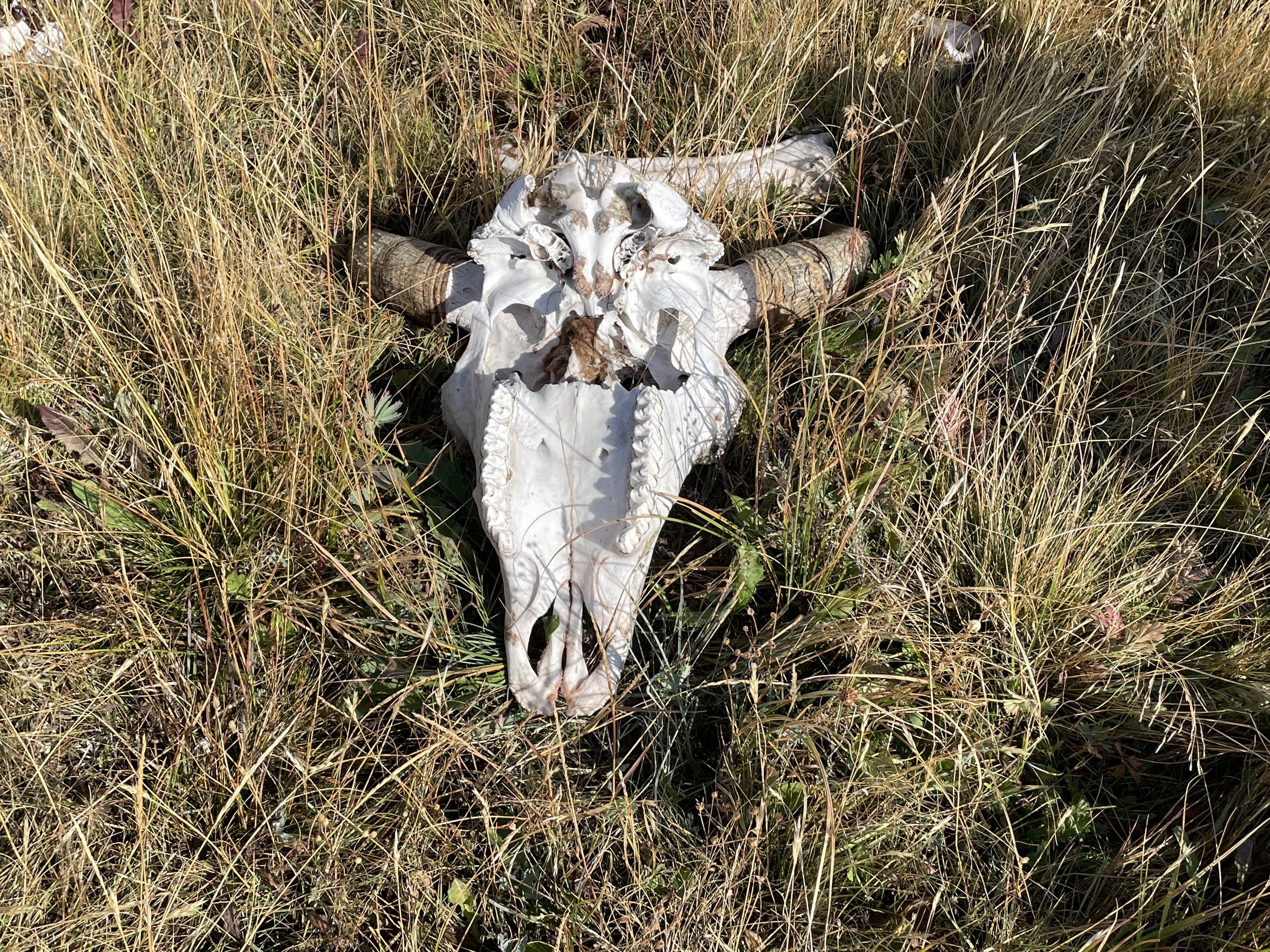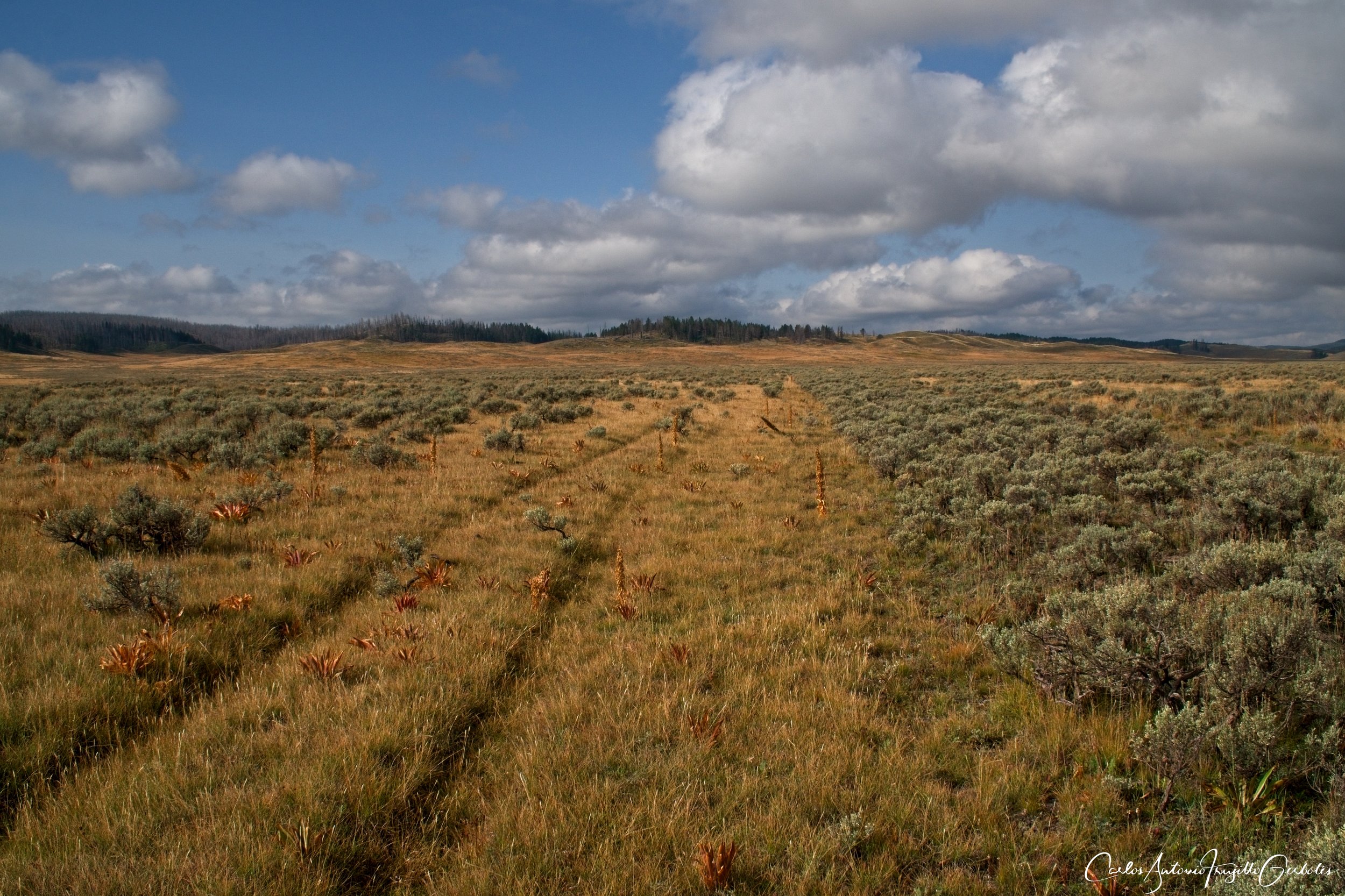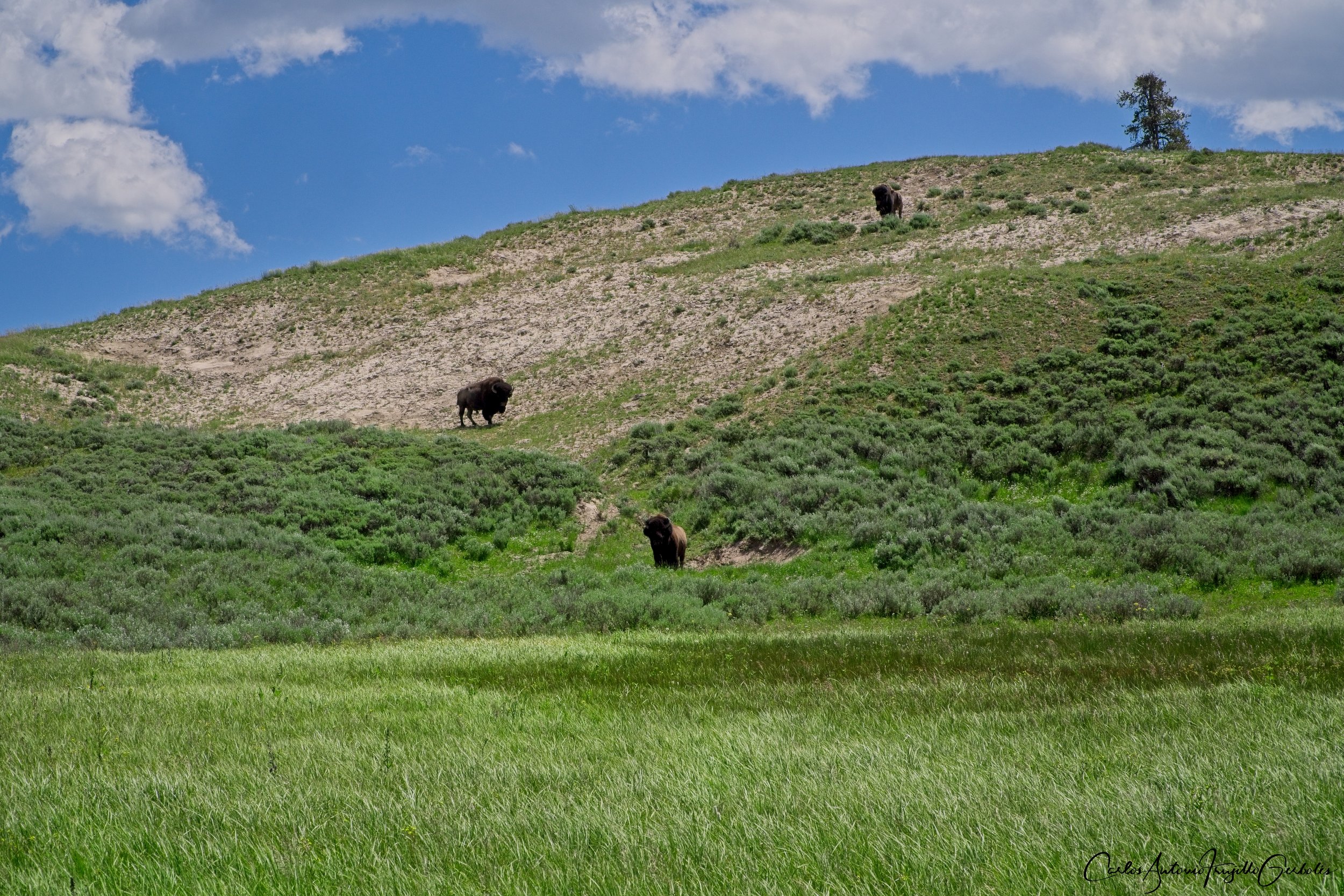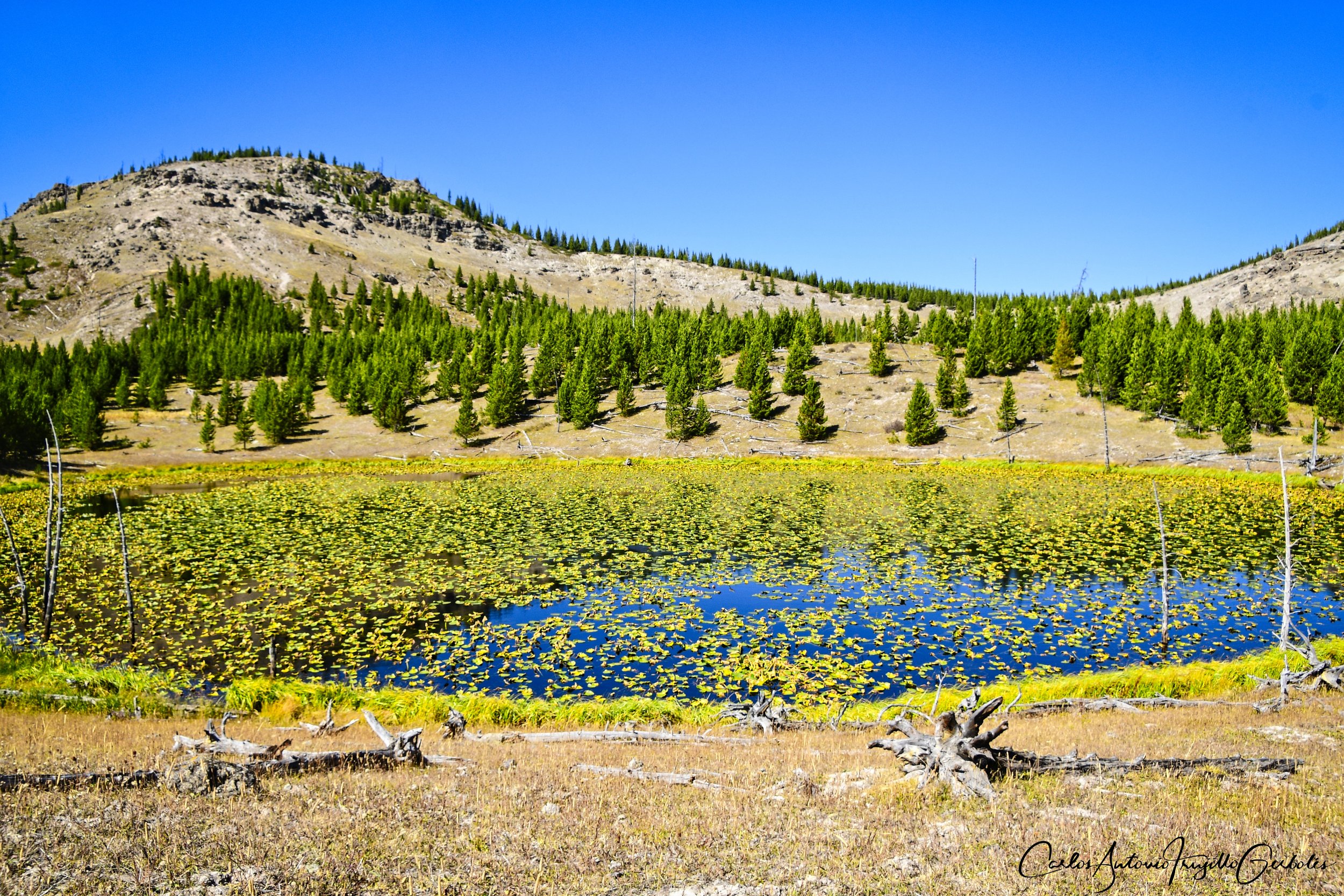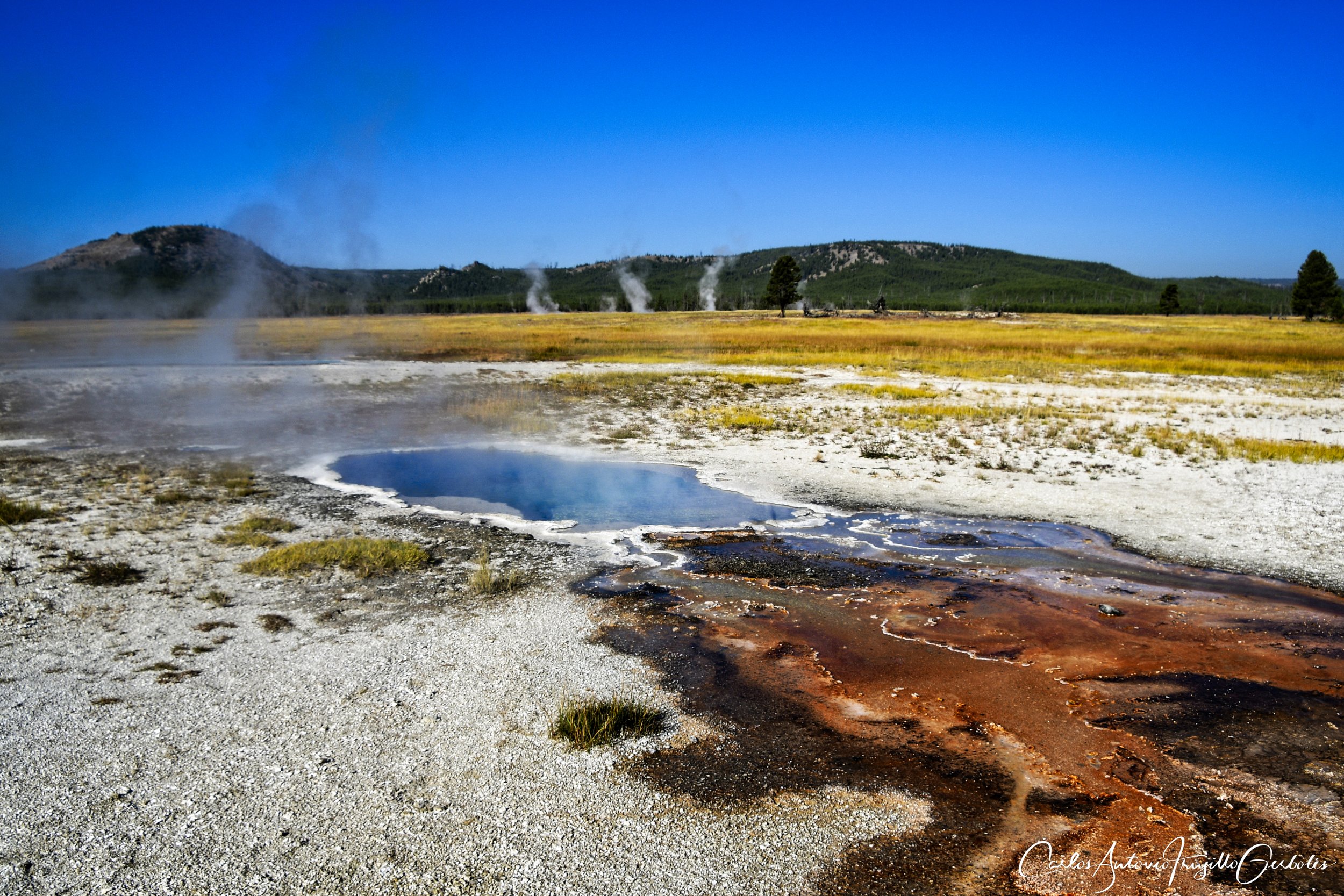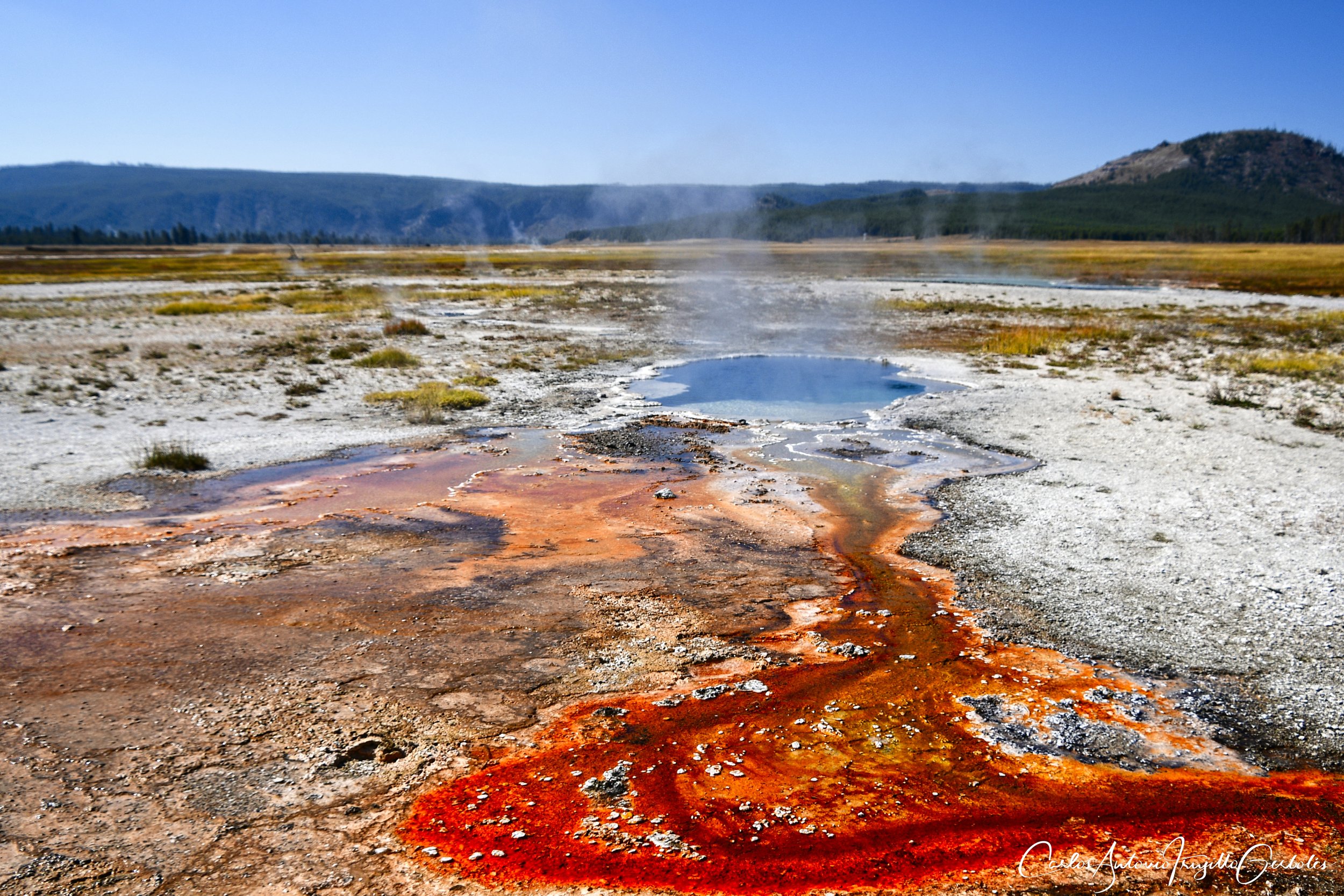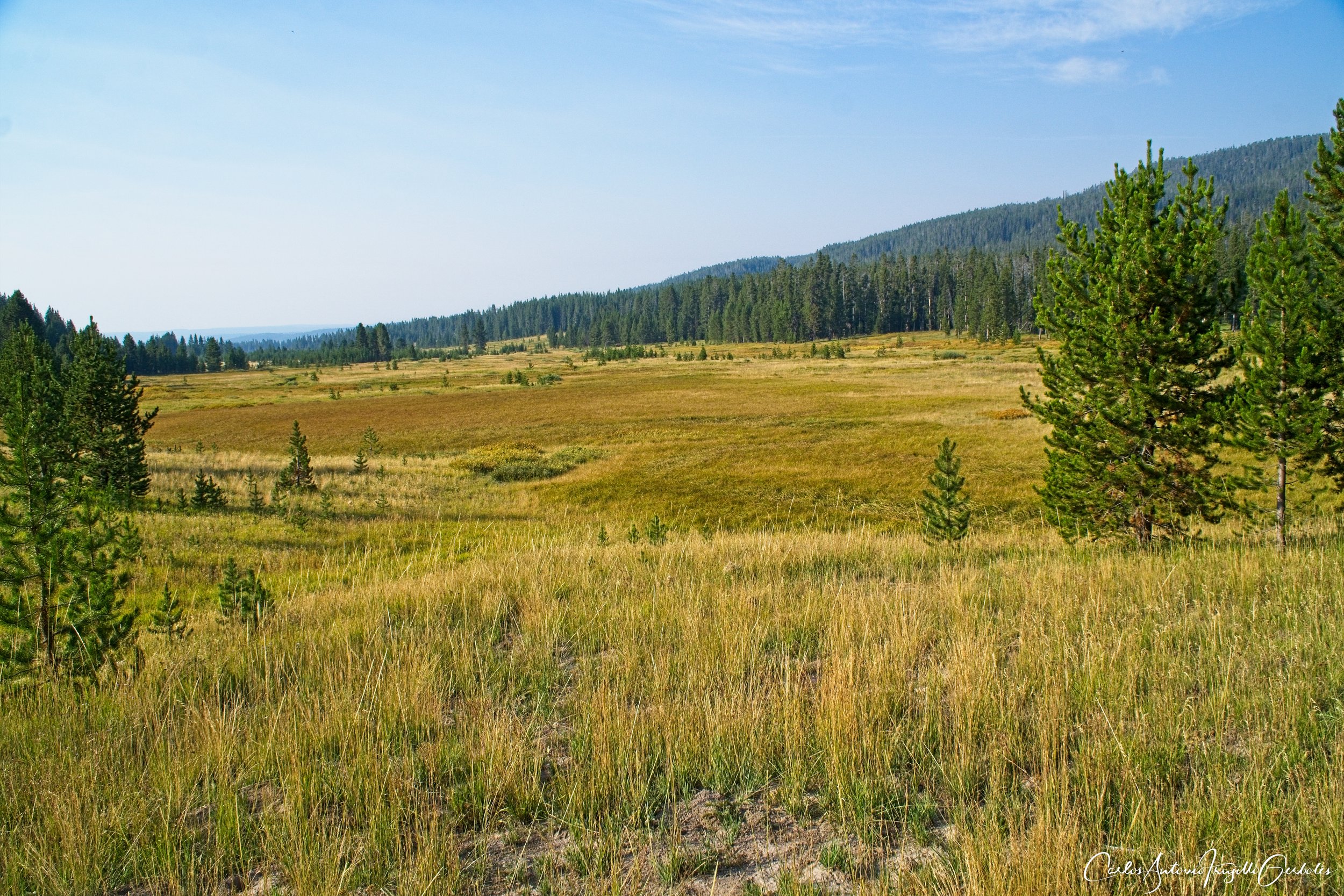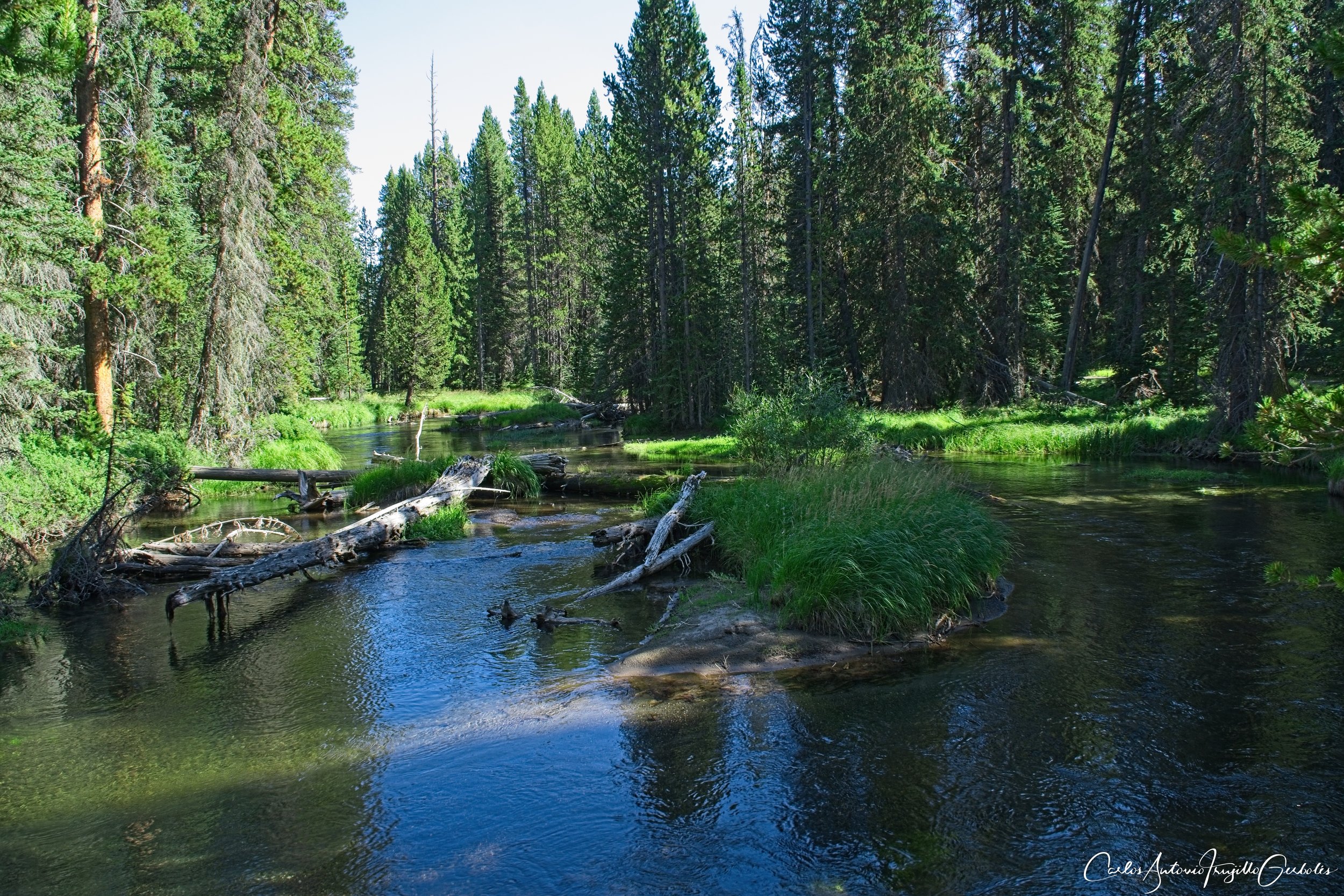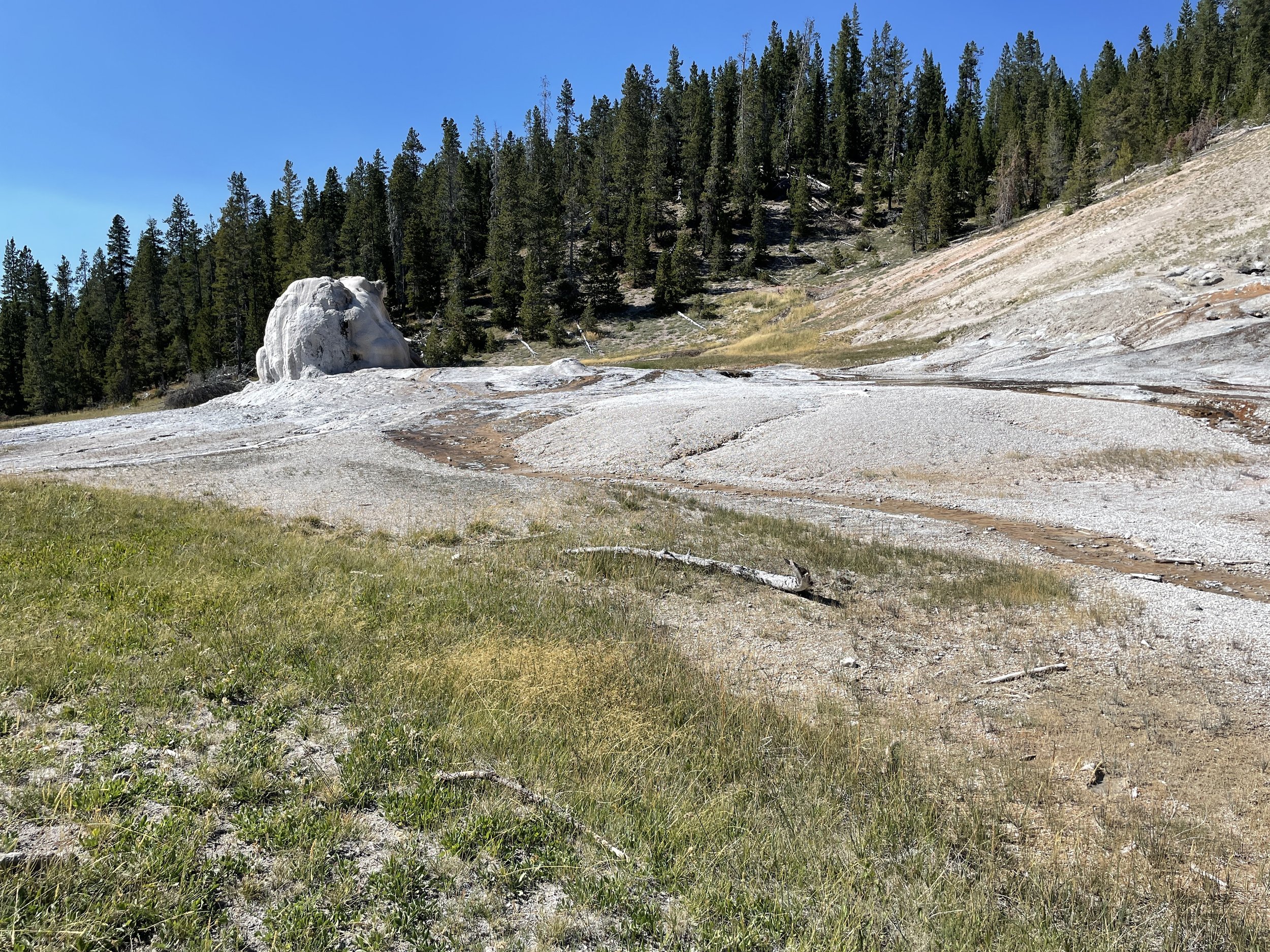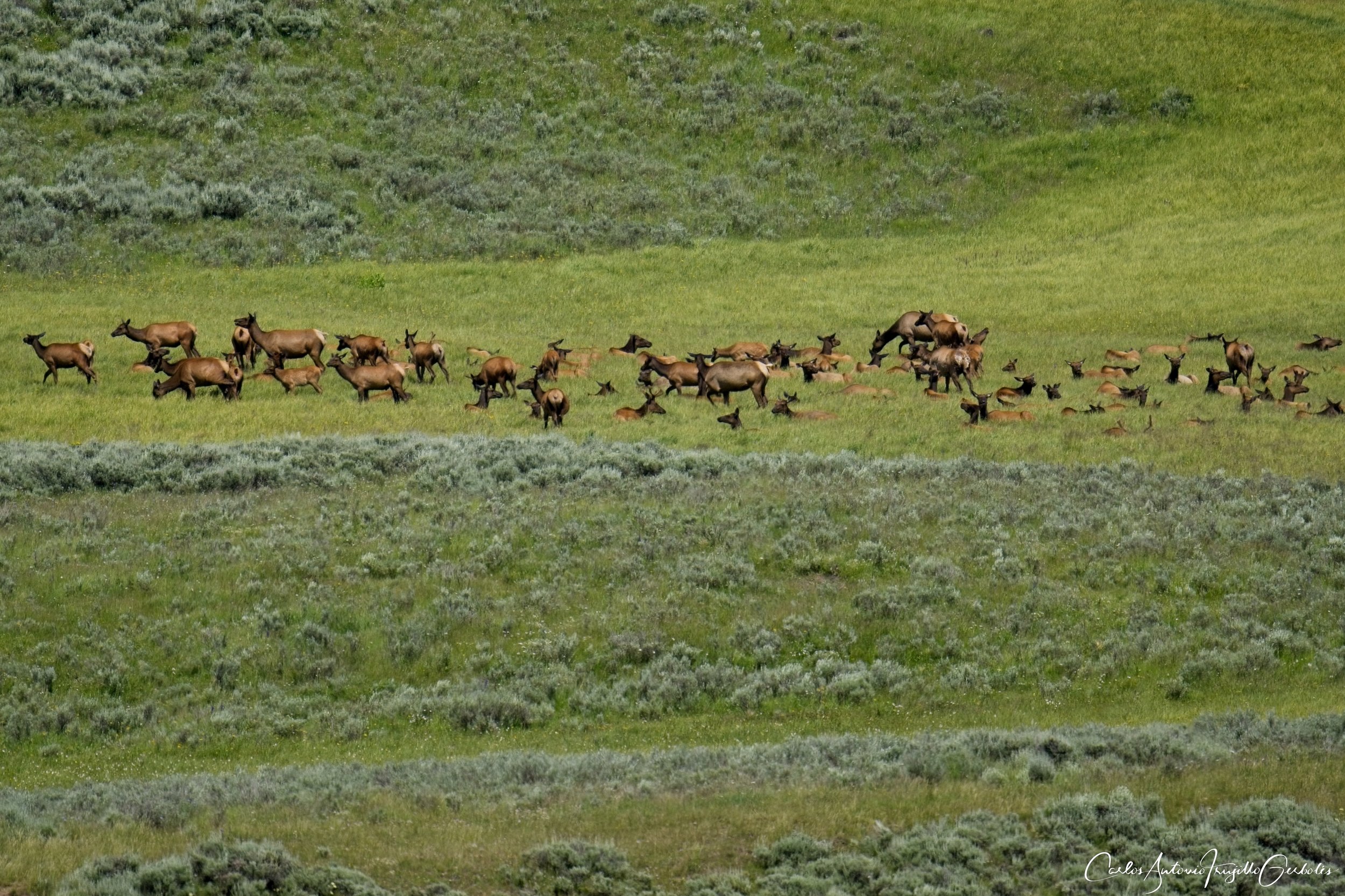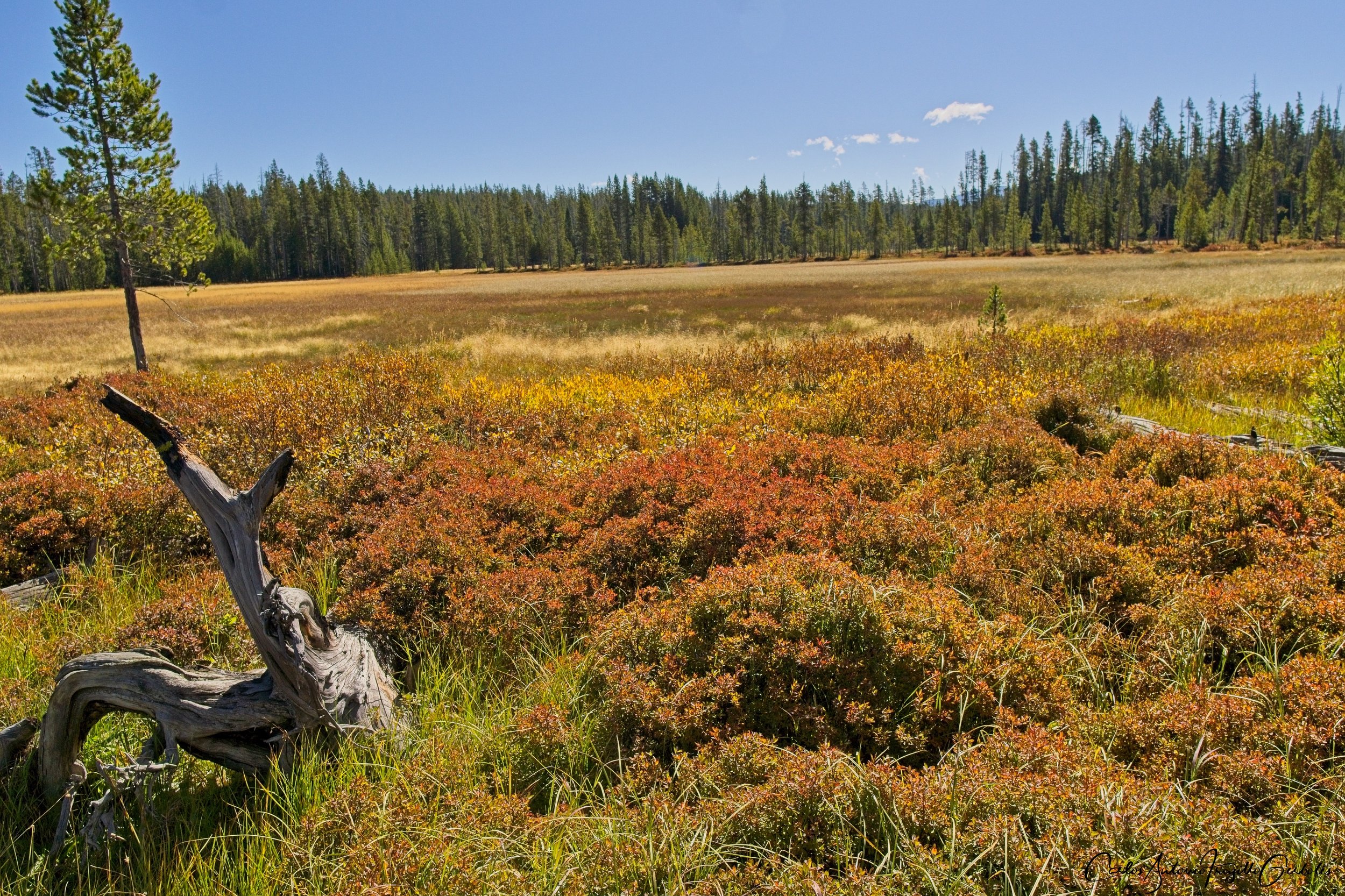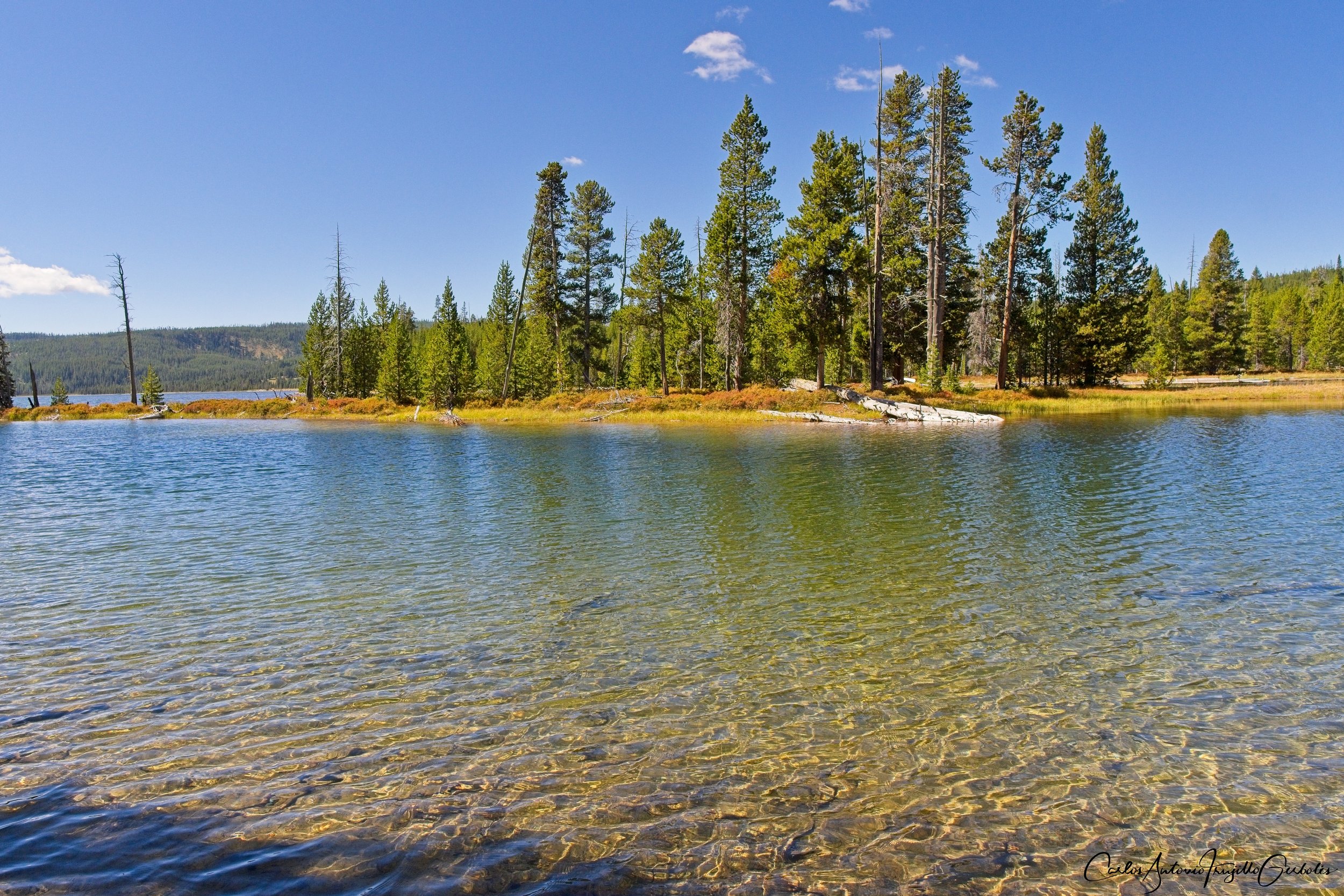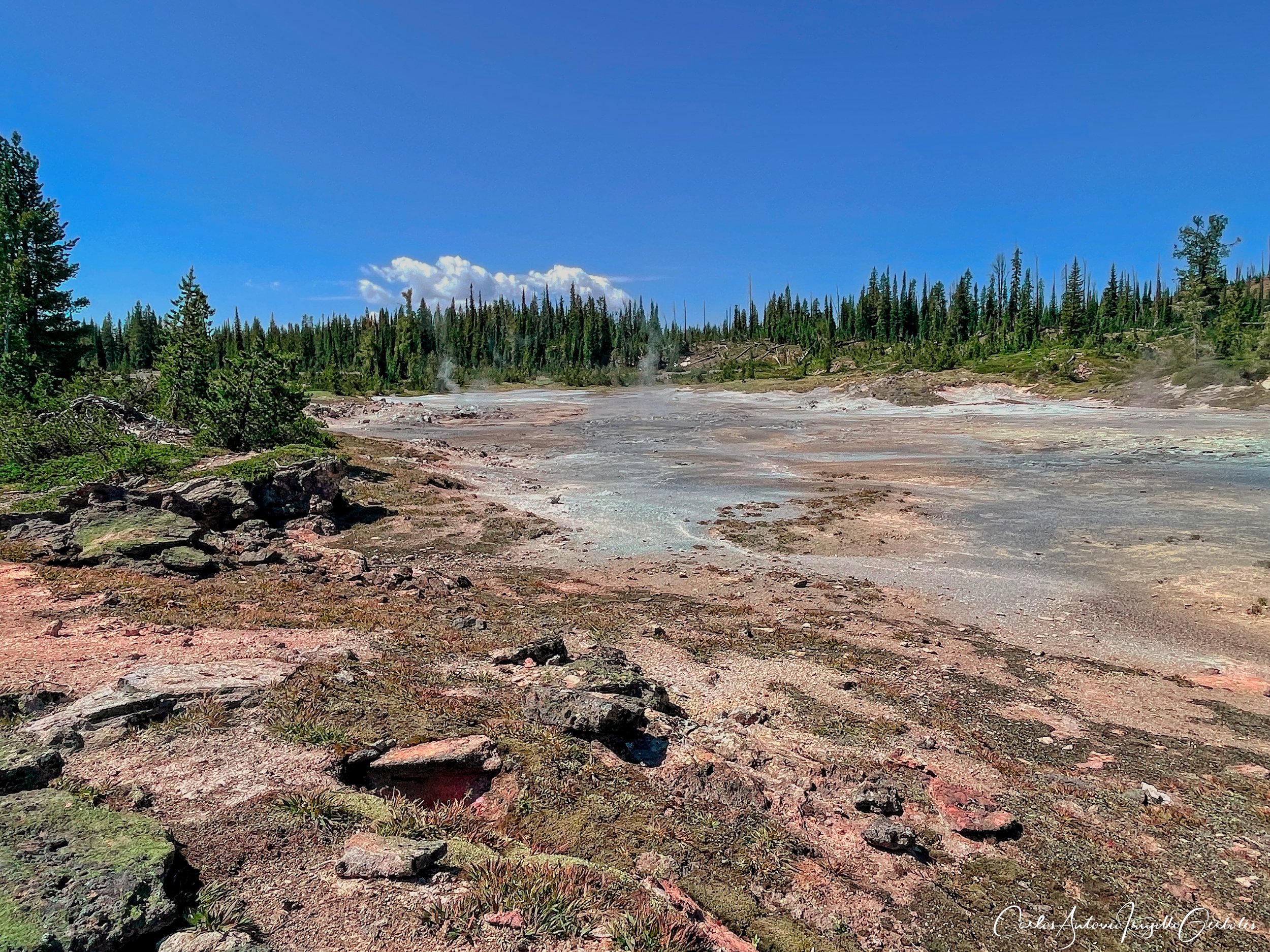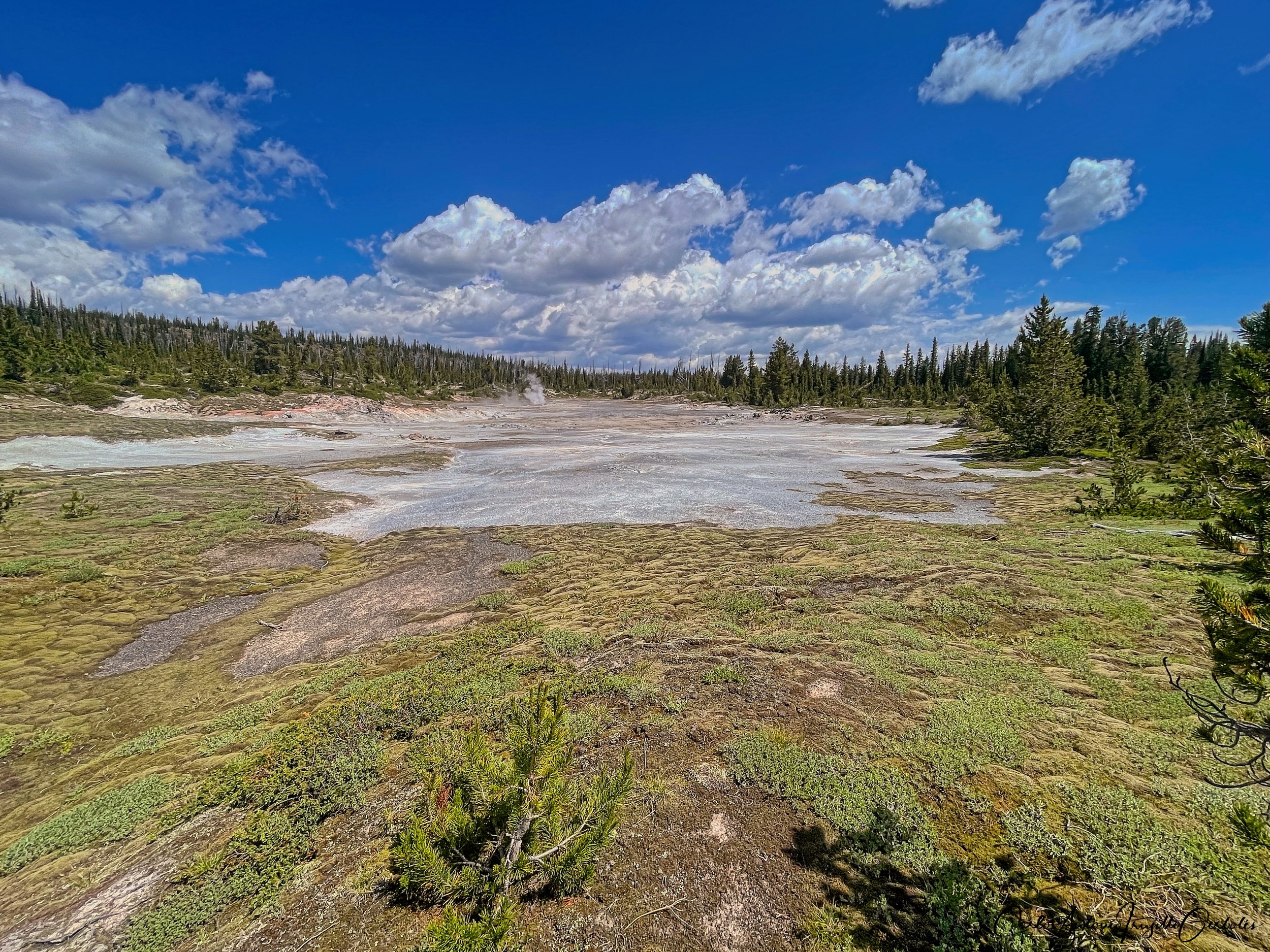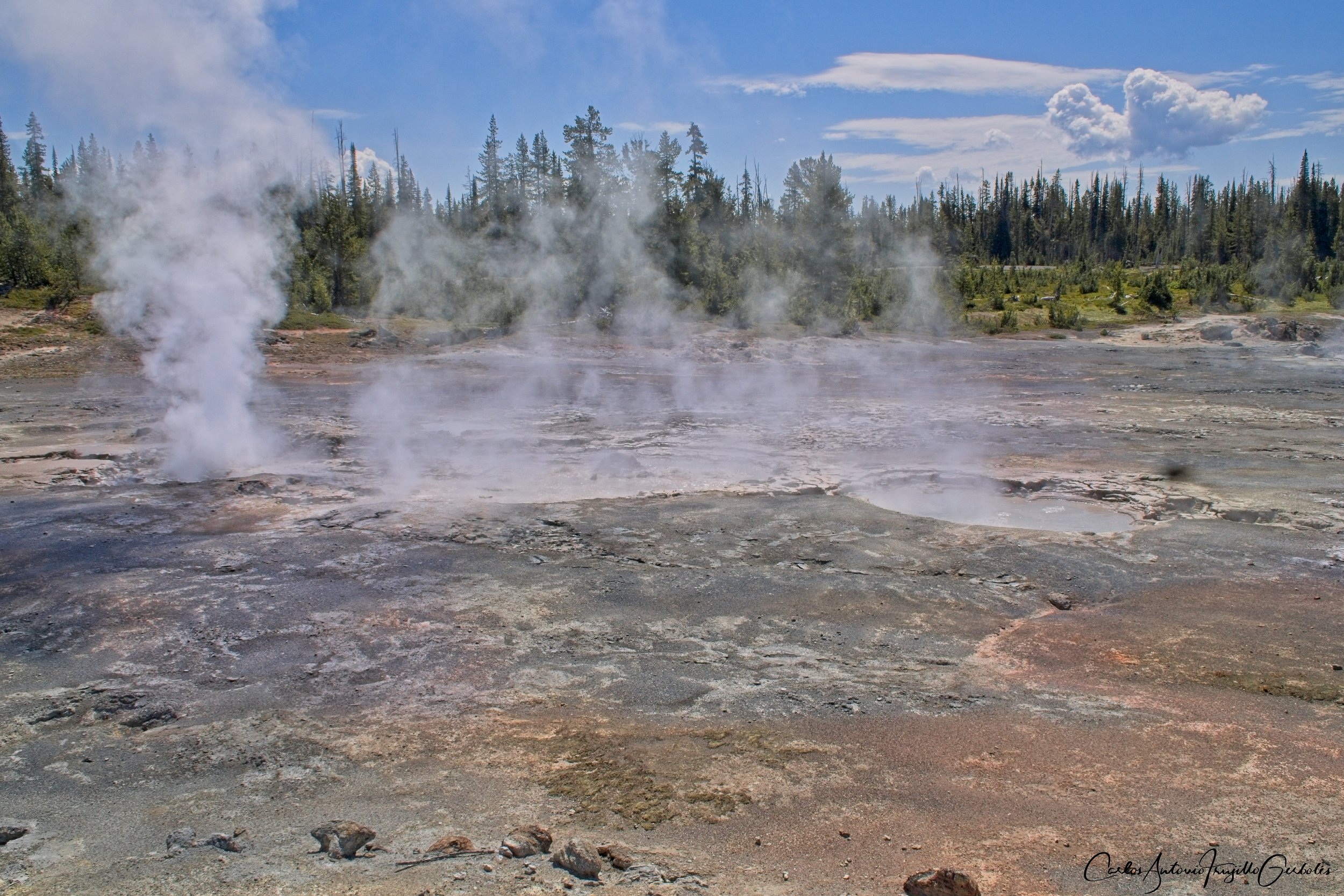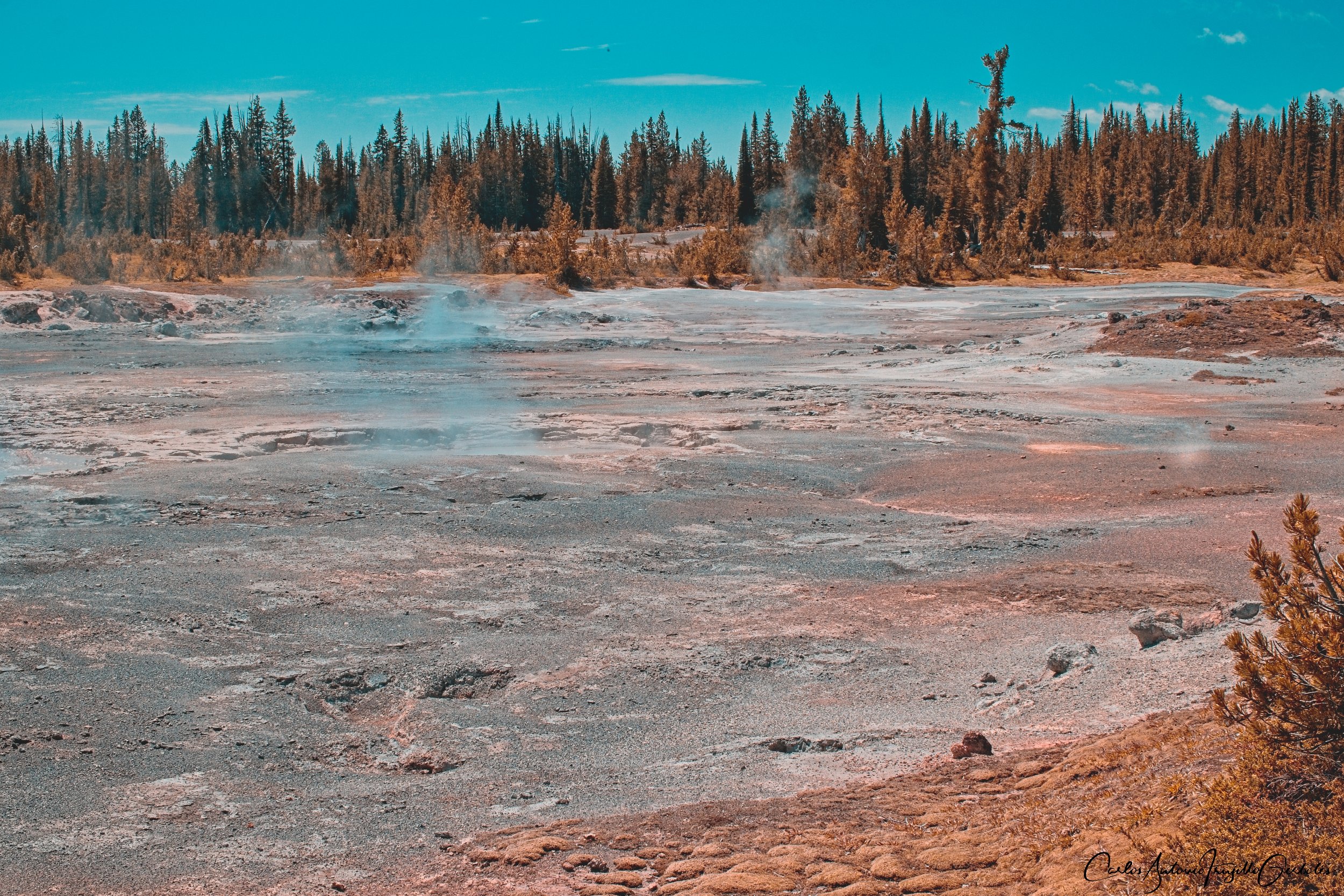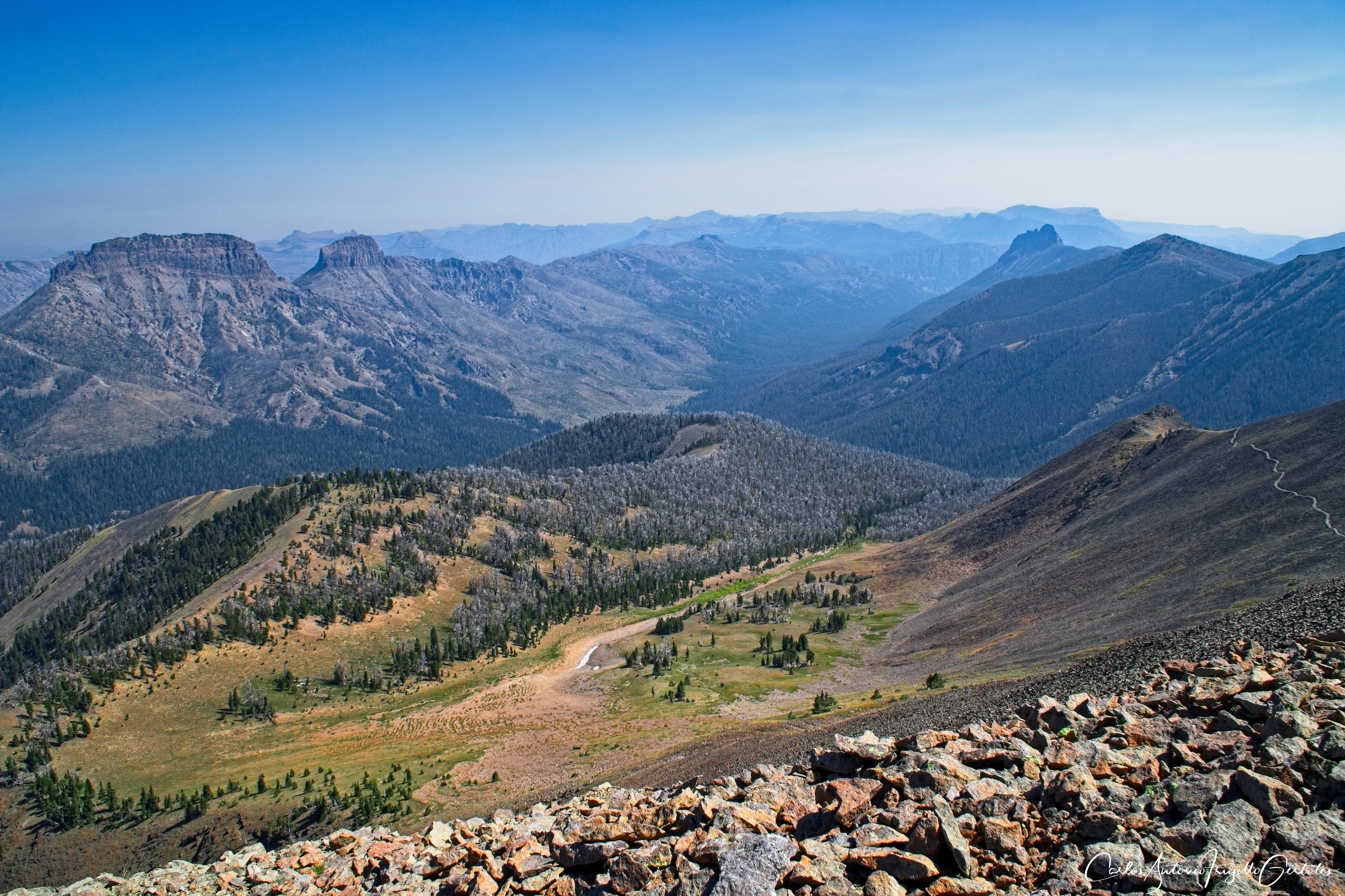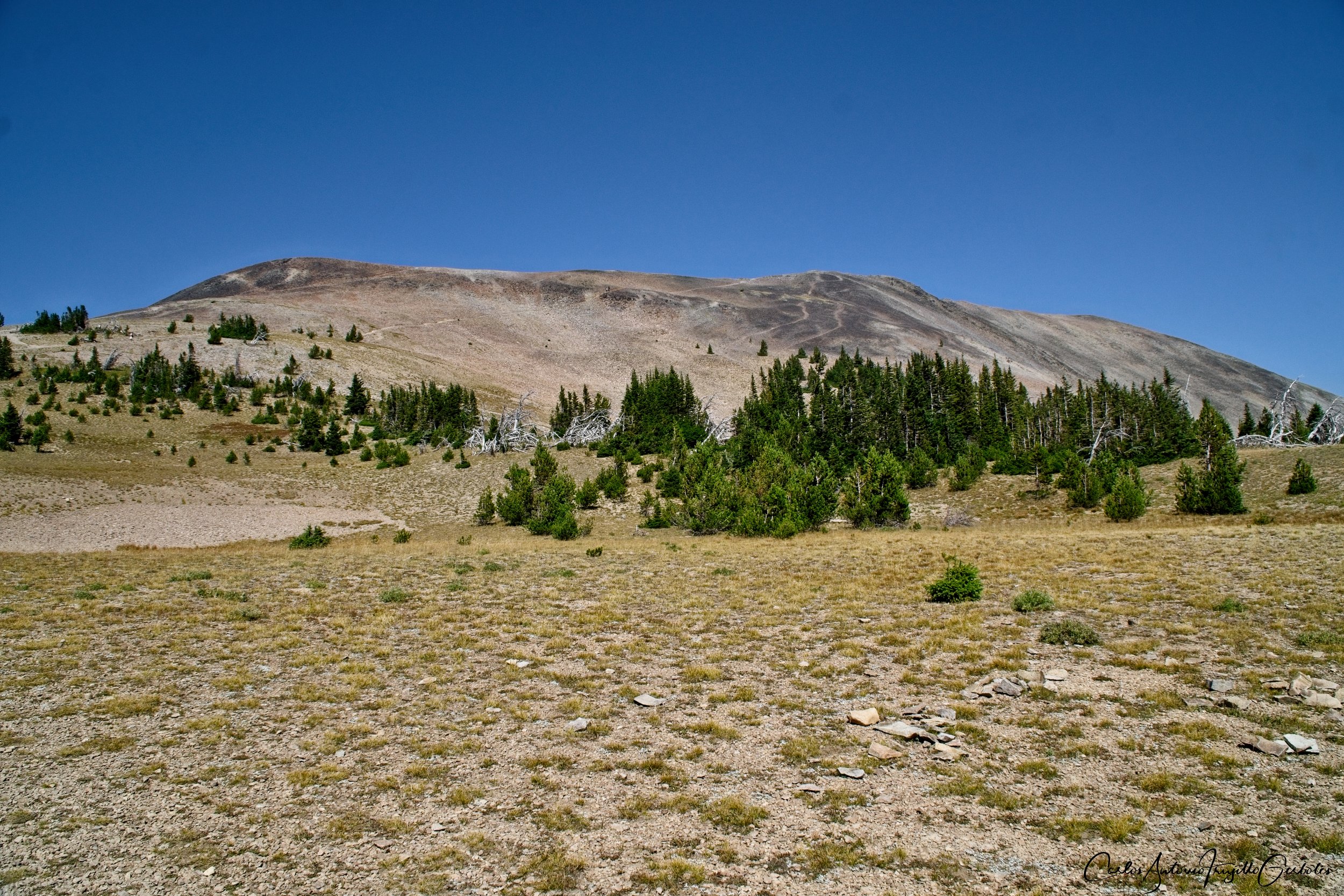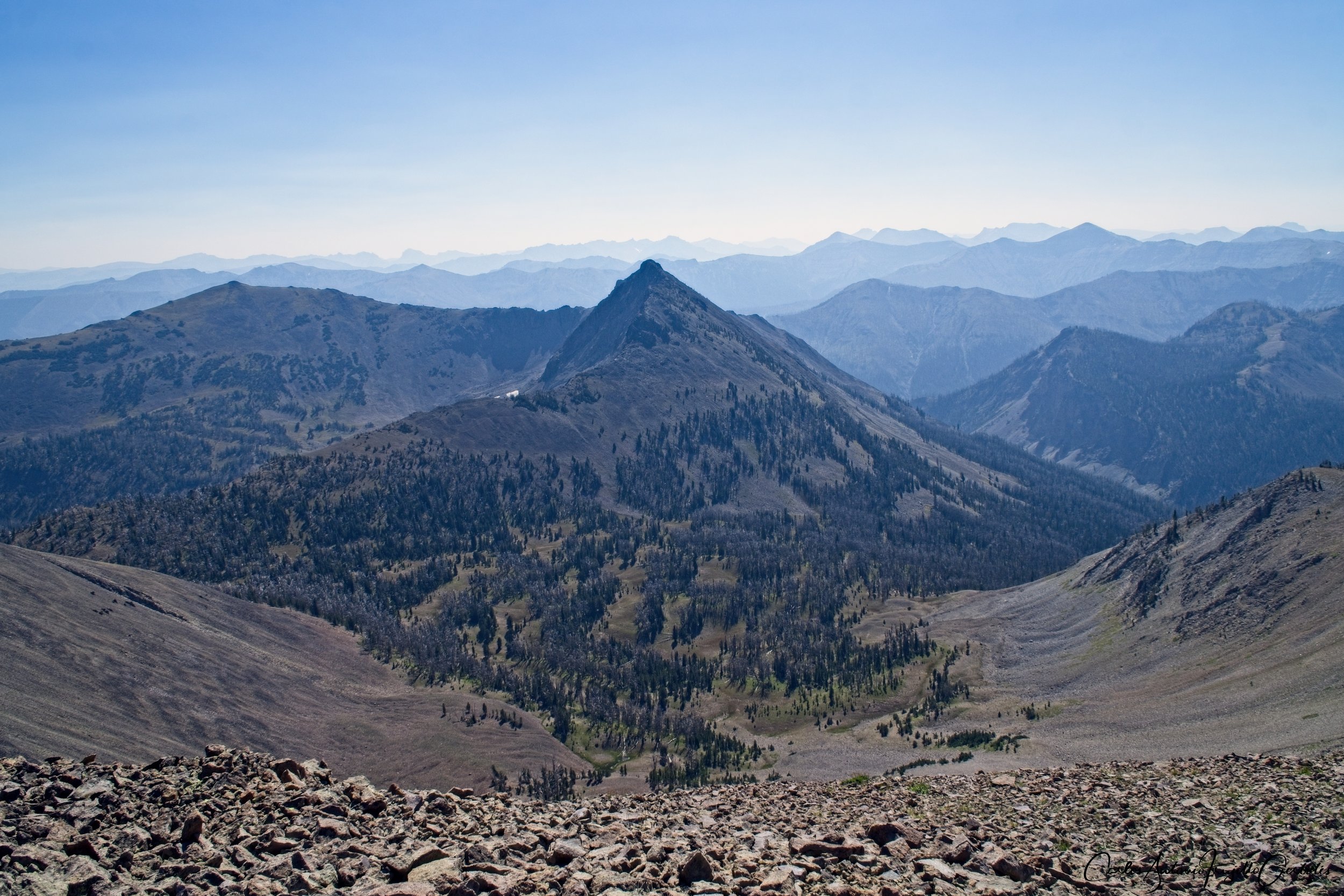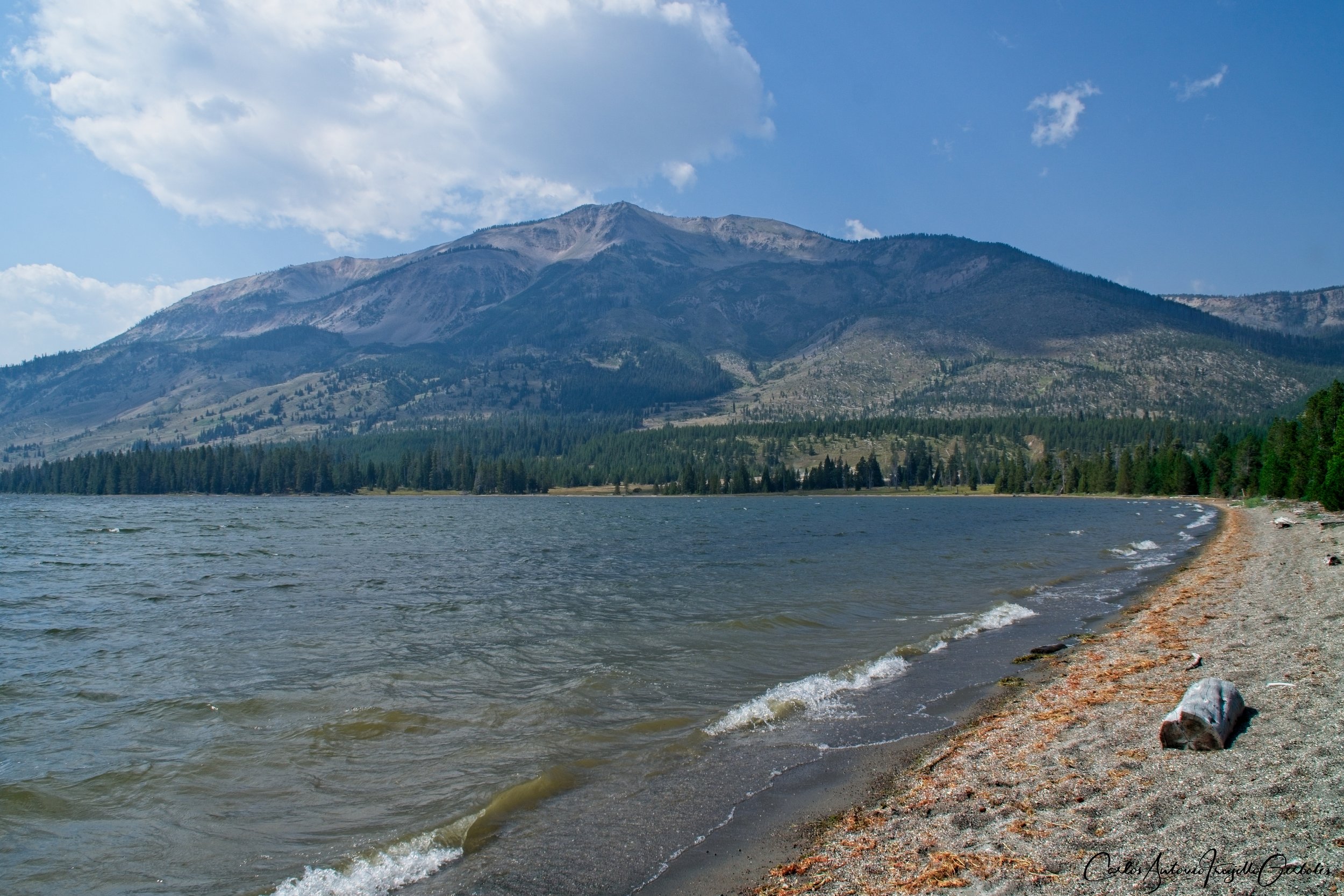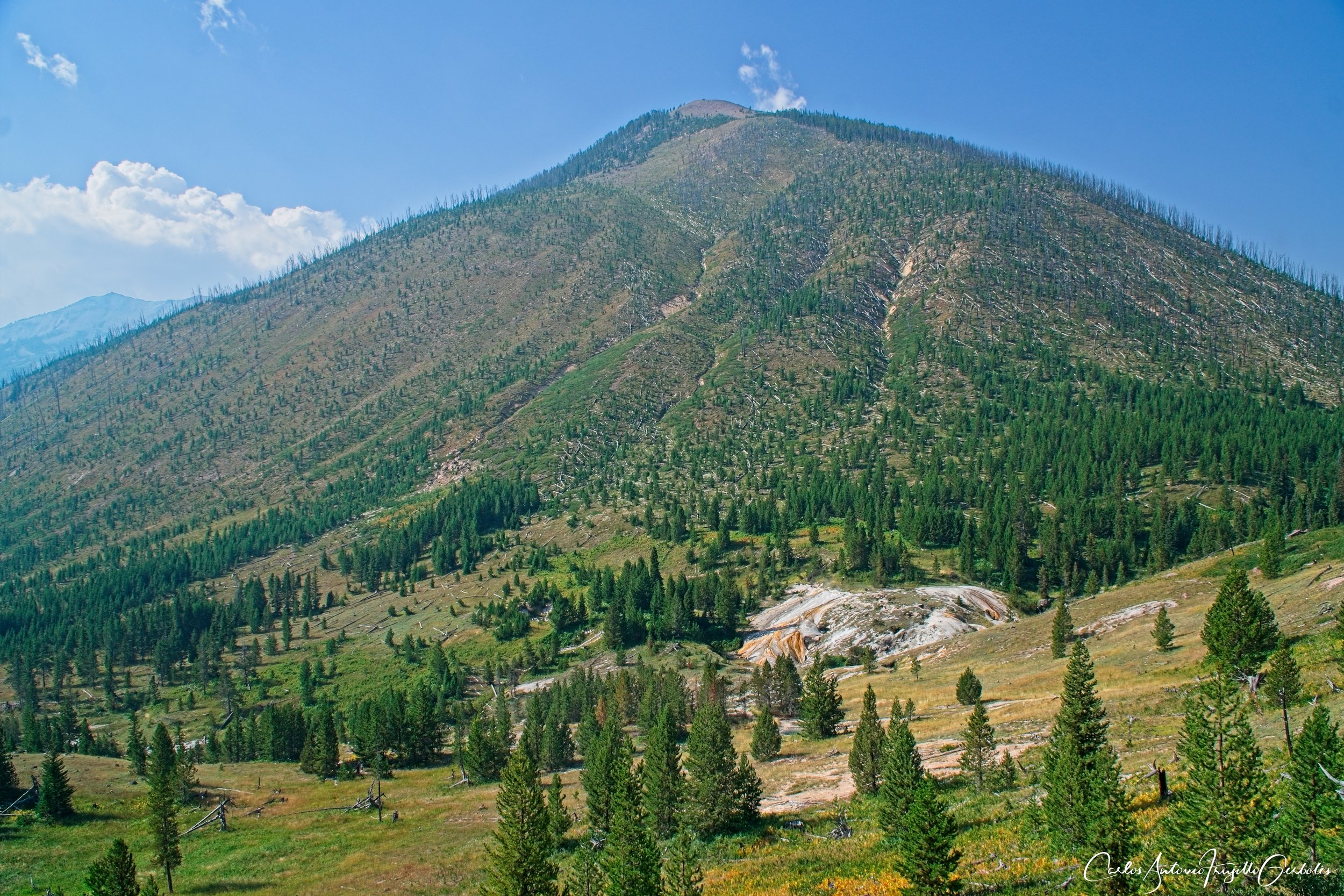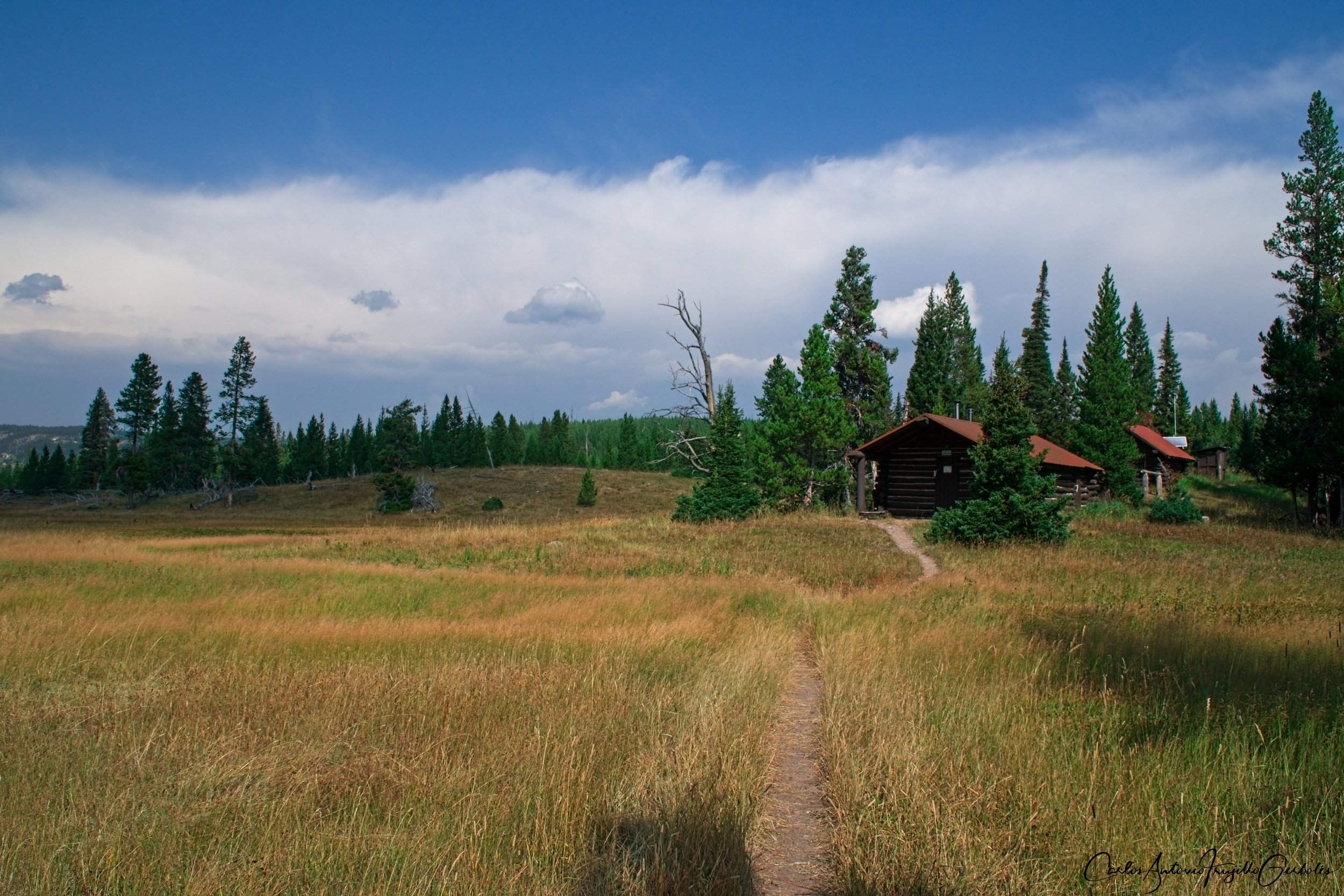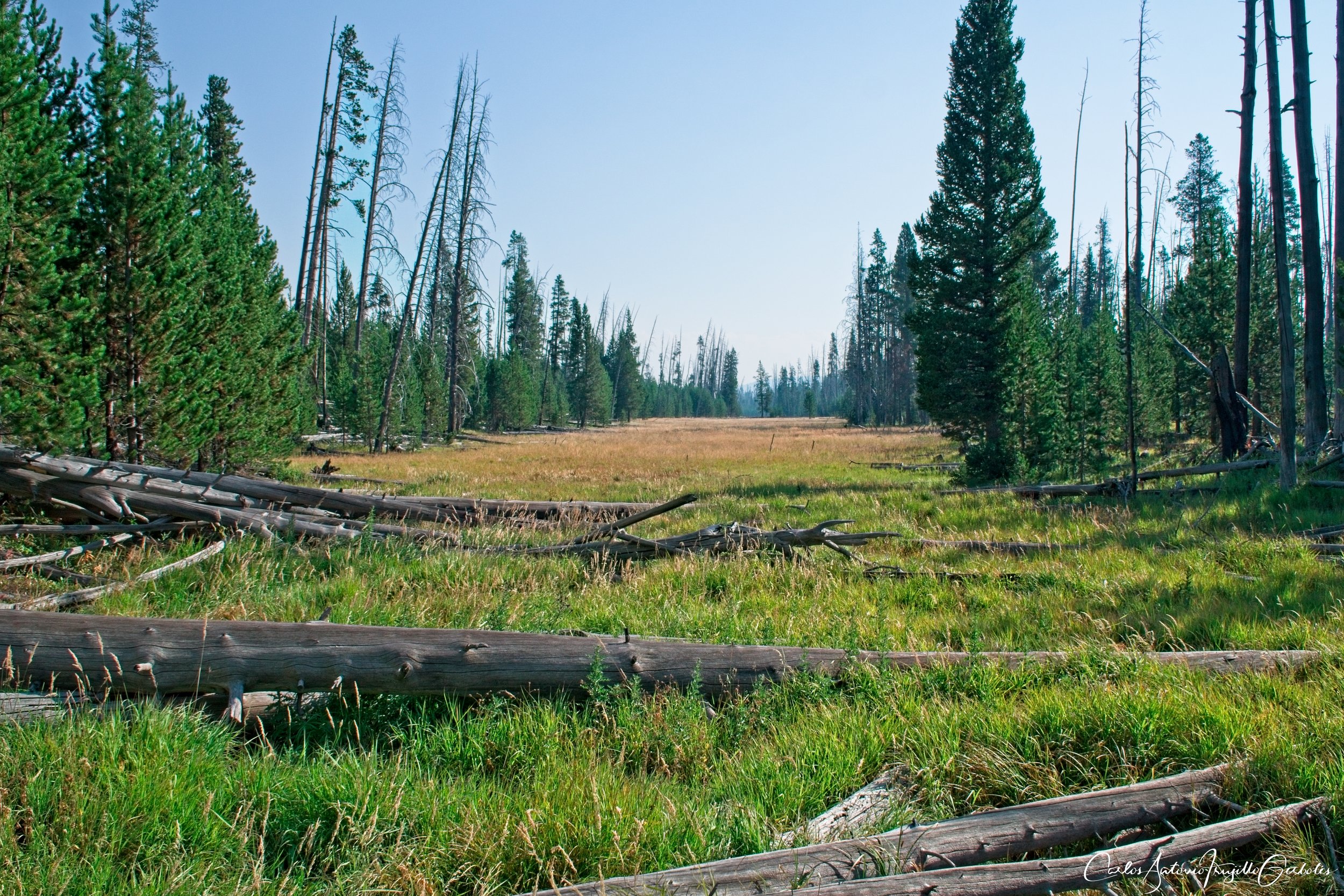guide to day hikes in Yellowstone
It occurred to me that I have quite a few individual posts about day hikes in Yellowstone and I think I should have a page that catalogs them and provides a short explanation and review of the hikes. If I do my SEO correctly, this should be a easy guide to find on google for those people that hike past the first mile in Yellowstone.
Warning: in many of these hikes you will find your group to be by yourselves and you need to be bear aware and alert to your surroundings. The park recommends groups of 3-4 people for many of these hikes and I will make a note of those recommendation on my description of the hikes. I have done all these hikes solo, but I know what I am doing.
These are all day hikes, not backpacking routes.
NOTE: There are sections still under construction. From my recent trip I still have to edit images and videos (I posted notes where that applies). My intent is to constantly update this page with more information and further descriptions the more hikes I do in the area. As you will see, I have done a lot of hikes in Yellowstone already.
Accommodations
Visiting Yellowstone is not cheap if you want to spend the night at a hotel, either inside or outside the park. That makes people commit the sin of trying to see everything in one day (you get the idea) and hurry up all over the place. It is an understandable concern.
That said, I have stayed outside the park for all my visits, I want internet access and a tv at night when I come back from hiking. The accommodations inside the park are limited in that respect, for a similar price. If I want to explore the upper loop I stay in Gardiner, if I want to explore areas in the lower loop or hikes to the west or southwest I stay in West Yellowstone. For example, hiking in the Bechler River area or Sky Rim requires West Yellowstone (else the driving distances are insane).
Now, does staying inside the park has advantages ? Yes, driving is shorter but to me driving is an opportunity to see something interesting and stopping to explore. If it a personal decision; what I would ask of people is to make a list of conveniences that are a must and decide which is better for you. There is plenty of information in the NPS website for what you can rely on (gas stations, small grocery shops, etc).
Critters
People expect to see all the critters. Unless you are on a tour (where the guides constantly monitor the wildlife), that is touch and go:
Bison: you can throw a rock and hit one, specially in the main valleys, Lamar, Hayden, Pelican. They go from 0 to a 100 in a matter of seconds and if they are in the middle of the rut, they will attempt to stamp you to death.
Bears: best see them from the road. Black bears will tend to run away from you (they are on the run from the grizzly ones); grizzly bears are curious and will stick around and figure out what are you and if you run that will tell them you are food to be gotten. A female with kids will charge you from 100 yards away, even if you pose no danger from your point of view. Encountering a bear protecting its carcass is a death sentence, bear spray will not help you.
Wolves: you will see them at a distance, unless you are in Lamar and lucky one of them is crossing the road. Do not expect to see them on your own, it is a matter of luck.
Elk: I have seen herds from the road and in the backcountry. People that drive by Mammoth will see them all the time but that carries danger. It is because that is where males will definitely round up their harems during the mating season. They will charge people and cars that they deem are getting close to the girls. Rangers are constantly trying to keep people away from them.
Mountain lions: super rare, you will not see them, period.
Antelope: beautiful animals, I normally see them in the Specimen Ridge area. They like wide open areas so they can outrun all their potential predators.
Driving Inside the park
Visiting Yellowstone is supposed to be a no stress experience so:
obey the speed limits
if you feel you are going slow and cars are accumulating behind you, there are lots and lots of shoulder areas where you can get off the road and let people pass. Please do that.
unless there is a sign, you can park at a shoulder and explore. No matter how close to the car you think you are, take precautions (bear spray) since critters can come out from any direction and surprise you. Also, thermal areas are pretty obvious to detect, do not get close to them.
The hikes …………….
This guide will eventually cover ALL the trails in the park that you can hike as a day hike that are listed in the park’s website. I am a bit behind reporting images and videos, but the intent in this page is to:
show a map of the trail.
describe the trail.
explain what to look for in the trail and specify what type of hiker should be there.
post a couple of pics and videos (if you use the Search box you will find a page dedicated to that specific hike with lots more details and pics.
I am going to group the hikes in the areas that the NPS does: Northwest, Northeast, Central, Southwest, Southeast. I hightly recommend checking out the trail status website for warnings and closures. I will list all the hikes in the area that the NPS lists, but I will only provide descriptions for the ones that I have personally hiked (quite a few so far).
Yellowstone is a serious place where if you get off the boardwalks, bear spray is a must. The rule is always to hike in groups and I will make that clear below when I describe the trails. Only people that are experienced hikers in bear country should hike solo in Yellowstone.
NORTHWEST
Most of these hikes are a short driving distance from Gardiner, but some are not reachable at all from there, I will make that clear on the description of the individual hikes.
Daly Creek / Black Butte / Sky Rim Trail
Specimen Creek / High Lake / Crecent lake / Sportsman Lake
Beaver Ponds / Sepulcher / Snow Pass
Glen Creek / Sportsman Lake Trail / Electric Peak
Bunsen Peak / Osprey Falls
Swan Lake
Fawn Pass / Fan Creek / Bacon Rind
Bighorn Pass / Indian Creek
Mount Holmes / Grizzly Lake
Gneiss Creek / Cougar Creek
Harlequin Lake
Purple Mountain
Monument
First, I need to mention a non hike place: Mammoth Terrace. In fall this area in Mammoth will be full of elk, especially groups of females gathered by large bulls. These guys don’t screw around, anything that gets close to their harem is a direct challenge to them, people and cars alike. There is a low terrace and a top terrace; most people park next to the low terrace and then use the boardwalks to reach the upper terrace. Also, you can drive to the Upper Terrace and then walk down the upper terrace to the lower one. Most cool features are in the lower terrace, but I would walk in both. I have seen elk drinking from one of the thermal pools in the upper terrace.
Dailey Creek / Black Butte / Sky Rim
Specimen Creek / High Lake / Crescent Lake / Sportsman Lake
Most of the hiking in this area are backpacking trips, but there are a couple of super long day hikes that you can do.
Sky Rim (1): this is one of the best and also challenging hikes in the park. You are forced to stay in West Yellowstone in order to have a short drive to the trailhead (no way you can stay in Gardiner for this). This hike has the most spectacular views in the park, but there is an elevation penalty going up to the ridgeline. The trail is narrow in some areas and that can be dangerous.
Recommendation: For experienced hikers, do the complete loop. There are alternatives how to complete the loop, but the one I plan to do is the one I show in the map above (enter and exit at the same trailhead, but you can see there is another trailhead to the East that you can start and end at). For casual hikers, this is a strenuous and challenging hike that is not recommended, the elevation gain can be a problem for those not accustomed to it. Remember, this is prime grizzly bear country !!!!!
When I do this hike, I will add images and video.
Shelf Lake (2): this hike technically takes you to the Sky Rim but I wanted to hike along Specimen Creek and get some elevation up to Shelf Lake. You are hiking next to Specimen Creek for a long time and it is beautiful. The elevation gain is no joke. You eventually reach Shelf Lake, small but pretty. I wish I took a better look at the topo map and notice that I could easily reach Sheep Mountain, oh well. This hike can also be extended as another way to hike Sky Rim, but you will end up at another trailhead and have to walk along the road for about a mile to reach your original trailhead.
Recommendation: If Shelf lake is your destination, then do it. Else, the Sky Rim loop is the one hike to do here. For casual hikers, this is a strenuous and challenging hike that is not recommended, the elevation gain can be a problem for those not accustomed to it. For casual hikers, it is not recommended.
You can see other trails to the East and those are done as part of multi-day backpack trips. This area is great to backpack and that is covered by Specimen Creek, High Lake, Crescent Lake and Sportsman Lake. All of those have campsites all over the place. One thing to note is that those campsite are high up so you need to wait for the snow to melt to reach them.
Beaver Ponds / Sepulcher / Snow Pass
Beaver Ponds (1): this is a popular hike for tourists that takes you to a few ponds in the Mammoth area. Of note is even though Mammoth is full of people, it is full of bears too and people have been mauled by bears here, so strength in numbers is definitely needed. The trailhead is next to one of the parking lots next to the Mammoth Hot Springs (I think next to a building).
Recommendation: For casual hikers, this is a nice loop to do, just be alert of your surroundings. I heave read stories of people encountering bears there, bear spray is a MUST.
Sepulcher Mountain (2): the start of this hike is at the Mammoth Hot Springs area (the same trailhead that take you to Beaver Ponds, but at some point you take a left for this trail). Once you leave the Beaver Ponds trail you hike uphill in a wooded area (look out for bears, I followed fresh grizzly tracks for half a mile) and reach a plateau and enter a forested area. You then reach the top, a spur to the right, with views of Gardiner. I am not enamored with views of towns, but that is my preference. The best views are when you continue the hike by going west on a saddle where the forested area is gone. The clearing will give you nice views of Electric Peak. Once there, there will be very few hikers on the trail, but not enough to make noise and annoy the bears in the area. Eventually the trail goes down to Glen Creek and all the time with nice views of Garners Hole and the Quadrant mountains (a right takes you to Cache Lake, along a creek). From there you leave the trail next to the creek and travel towards Mammoth in Snow Pass, a spur trail that takes you back to the original place you left the Beaver Ponds trail. This is a nice to do hike and gives you a bit more views than Bunsen, but there is less human traffic and it is a longer trail.
Note: Snow Pass is a connector trail in the Sepulcher Mountain loop. In winter, this trail is used by skiers (ergo, the snow pass name).
Recommendation: Experience hikers should do the complete loop, it is worth it for the views and diversity. Careful, bears !!!! For casual hikers, go up to the top of Sepulcher and turn around, maybe get to the saddle for better nature views. Again, this trail is frequented by bears.
Glen Creek / Sportsman Lake Trail / Electric Peak
Sportsman Lake Trail (1): this is a backpacking route.
Glen Creek, Electric Peak, Cache Lake (2): This trail starts at the parking lot for Bunsen Peak (you cross the road to start the hike and follow the trail posts until the trail is established). The real destination here is not Cache Lake, and you are hiking along Glen Creek; the place to go is Electric Peak. You can encounter deer close to the creek. The views from the top are amazing, but of note is that the trail does not end at the top of the peak, but about 3/4 of a mile short of the top. The first half of the hike is walking in wooded areas, along Glen Creek and some meadows. Once you reach the sign for Cache Lake, stay left and that is when elevation gets going. It is a good sweat, take it slow. For those that want to reach the peak, you need to have hiking poles; the social trail from the end of the trail to the top is incredibly steep and even though you can reach the top with no hiking poles, going down will be a problem.
Recommendation: This is a strenuous hike and plenty of water is needed. You need to be in good shape to do this hike. Total hiking distance is about 18-20 miles, so this will take the whole day to complete.
When I edit the images for this hike, I will add images and video.
BUNSEN PEAK AND OSPREY FALLS
Bunsen Peak and Osprey Falls: This is an anyone-can-do hike with a small parking area (but there are pullouts down the road you can park on if the parking lot is full).
It is a very fair set of switchbacks to take you to the top, with great open views on the way up of Electric Peak, Swan Lake and Gardners Hole valley. The cool things is that the views are not obscured on the way up for the most part, so going up doesn’t feel like a slog. Atop is a park structure and then you just hike across the other side of the peak to go down the back side to the spectacular Osprey Falls trail. This is a must do hike, the only effort is getting down to the falls since the trail is a bit steep for casual hikers.
Recommendation: the views are great on the way up and the real bonus is the trip to Osprey Falls. Even though it is an easy hike, it is worth doing it. A hike for people of all ages, you don’t need to reach the top to have great views. The trip to and from Osprey Falls is tiring and narrow, so some people will find it difficult; no worries, there are nice falls next to the road in other areas of the park.
Swan Lake
Fawn Pass/ Fan Creek / Bacon Rind
Swan Lake (1): something nice to do after you hike Bunsen Peak is to drive 1/4 mile down the road to the Swan Lake pullout. There an exhibit there, so you know you are in the right place. The name is appropriate since swans have their chicks there. The lake is closed during that time of the year and when it opens you can get lucky and see the mom and dad swans swimming with their chicks. Bring binoculars since you don’t want to get close to them.
When I edit the images for this area, I will add images and video.
Fawn Pass to Fawn Lake (2): this is a serious trail and not recommended for casual hikers at all.
This is basically a backpackers trail that takes you to the Gallatin Bear Management area, where you are NOT allowed to leave the trail. This one of of the few areas in the park where off trail hiking is strictly prohibited, and for good reason. I hiked it 7 miles in, it got spooky and then I turned around. You use the parking lot of Bunsen Peak. Lots of creek crossings and high vegetation hide noises and bears. If you want solitude and are an experienced hiker, the views are great.
I had a side trip to Fawn Lake (almost opposite of one of the campsites) and then back to the trail; it is at that point that you will enter the bear management area and things get spooky since you are back in the forest and paranoid about your surrounding and not allowed to leave the trail. Hiking along a creek is pretty but it masks your sounds and that is a recipe for neither a bear or you being aware of the other. There are no campsites past the lake, until the trail takes you all the way to US 191. Past the last campsite the trail takes a sharp left turn and then reaches another creek, with the forest on top of it, so visibility is minimal.
Always look back since the views are amazing in front and behind you. After the first mile you gain a bit of elevation and get nice views of a valley to your left before you cross the first creek and the views are not that expansive, but I need to repeat that the vegetation is tall. I only ran into some backpackers returning, who told me that they heard wolves at night at camp. This was always a must do hike for me.
Recommendation: If you are into solitude and paranoia of getting eaten by a bear, this hike is for you. Reach Fawn Lake and turn around, you can continue but you are now surrounded by forest and a creek and that gets spooky. This is exclusive for experienced hikers, lots of creek crossings, tall vegetation, prime grizzly habitat. Bears charge people in this area, NO JOKE.
Bacon Rind (3): I have not hiked this trail, but I want to mention that it can only be approached if you are staying in West Yellowstone. Else, it is going to be a super long drive from places like Gardiner.
Bighorn Pass / Indian Creek
Bighorn Pass, about six miles in and back: This another trail for experienced hikers and best done in groups, just like Fawn Pass.
You park in the Indian Creek campground; the campground is sometimes closed so you park at the entrance road, as long as you don’t block the main road. The trailhead starts before the campground and for a mile you will hike on a path that takes you next to the campground.
For the first 4-5 miles the trail is wide open with great views of Quadrant, Bannock and Antler Peaks. You will find no one on this trail, just backpackers coming from the west side of the trail. At some point you will enter a forested area and the Bear Management area (again, no hiking off trail). For the wide open views this trail is work hiking until you reach the forested area. I want to do this again and reach Bighorn pass itself. Many backpackers will create a semi loop hike with this and Fawn Pass trail. There are about 2-3 creek crossing, no big deal, but the creeks and the background are so pretty. There are bears here, so keep an eye on the horizon, but the good things is that it is wide open so you will see them coming. For the open views and the nice creeks, this is a must do hike for me.
Recommendation: Only for experienced hiker and hikers in groups, this is prime grizzly territory and most people on the trail will be backpackers. In fall the colors around the creeks are amazing, wide views of mountains. Past the sixth mile this becomes a BMA, hike in groups. To me, this is a must do hike. If you are a casual hiker, I would hike a couple of miles in, maybe cross the first creek and turn around. This area is no joke at all.
Mount Holmes / Grizzly Lake
Mount Holmes (1): This is a strenuous hike that I have not attempted. In my opinion, this is a peak that is less interesting than others in the park.
Grizzly Lake (2): This is the perfect 2 hour hike for those that just want to drive around the park road and do short hikes.
The parking area, which is a long pullout if I remember correctly, is pointed to by signs on the road. You cross a small meadow (careful, bison) and then enter a forest that takes you down to the long and pretty Grizzly lake. Most of the way down the view of the lake is obscured but there are clearings that allow you to enjoy the lake and the background of mountains. If you noticed in the topo map, you can use the Mount Holmes trailhead to get to this lake too; I have not done that but it looks nice, but a longer hike.
There are no bad lakes in Yellowstone, so I loved this hike. You can see the background of mountains that always makes a great background for the lake. The lake is long and when the trail reaches it, you encounter the creek emptying the lake, so if you want to continue you will get your feet wet.
Recommendation: A nice short hike that I would combine with other short hikes on a day. If you want to reach a lake away from the road, this is the one. Mountains in the background make for good pics.
Gneiss Creek / Cougar Creek
Gneiss Creek (1): Once you take the road back to West Yellowstone you will see signs for a trail and a small parking lot before the road crosses the Madison River. This is a rarely hiked area; you start hiking along the river while gaining elevation (no big deal) and then make a sharp right turn to enter Madison Valley. There are two choices to make: a short hike to Cougar Cabin or take the actual long trail west. Expect to run into bison (I was pushed off trail by them). Also expect creek crossings and a trail that disappears at times in those areas. I couldn’t find the trail at the Maple Creek area and just went off trail but turned around when dark clouds started to show up. The remoteness of this trail will potentially reward you with lots of wolf tracks or wolves themselves. This is a weird trail since there are not views of valleys, it is something to explore in complete solitude and just hike. In 2023 a beaver dammed one of the creeks and made it mess trying to cross it. The trail was worth because of the large amount of wolf tracks that I saw, but the views were not special.
Recommendation: Opportunity for wolves tracks, complete solitude, very muddy. This is a hike for a third visit. For casual hikers there is no real views, I would skip it.
Cougar Creek Cabin (2): This is a trip that I haven’t done but looks interesting. It would be interesting to do and I think it may be more eventful than the main Gneiss trail.
Harlequin Lake / Purple Mountain
Purple Mountain (1): I am just highlighting this hike but I have not done it. From what I see on the road you will hike uphill in a forested area until you reach a bench area (just like Monument Basin). From what I read, the clear views are from the top only.
Harlequin Lake (2): This is a short hike after to enter the road back to West Yellowstone. I have not done this hike.
Monument
Monument Geyser Basin (2): Just another quick hike on a day reserved for quick hikes. This is quite a steep hike, you can see from the topo map that you are hiking up to a bench. The parking area is a long pullout along the road. There are very few features to see at the top, mostly geyser cones, and no color at all. There are thermal features that you can’t see so the area is small to explore in comparison with the most popular ones (for example, Norris). If you want to exercise your legs for about a one mile step hike, then go for it, but the few thermal features at the top are not worth the steep hike.
Recommendation: Skip it, not worth the effort for a small thermal area.
Norris Geyser Basin (1): this is not really a day hike, but just like Grizzly Lake this is a must do if you are into thermal features. The area is heavily visited by tourists, so much that there is overflow parking on the main park road. There is a large variety of pools, small geysers and vents; all of them well marked and documented. One that is legendary is Steamboat Geyser, but it erupts rarely and when it does your car better not be parked in the main parking area since the material being expelled will ruin your car’s paint. This is a must hike just for the variety of features and the leisure walks around them.
Recommendation: Just for the thermal features this is nice, but visit it when the crowds are thin.
NORTHEAST
Rescue Creek / Lava Creek
Wraith Falls
Blacktail Creek / Yellowstone River / Black Canyon
Hellroaring Creek / Coyote Creek / Buffalo Plateau
Floating Island Lake
Lost Lake
Garnett Hill
Tower Fall Trail
Buffalo Fork
Slough Creek
Pebble Creek / Bliss Pass
Trout Lake
Yellowstone River Picnic Area / Specimen Ridge / Agate Creek
Lamar / Miller Creek / Frost Lake
Cache Creek / Thunderer
Pelican Valley / Turbid Lake
RESCUE CREEK / LAVA CREEK
Rescue Creek (1): this is a weird hike since Rescue Creek is short and you are not hiking along a creek. The hike starts next to the Blacktail ponds and then it goes into open spaces (which I like). At some point the hike narrows a lot into a dense area that from the amount of bushes next to the trail you can figure out not that many people hike it. I didn’t like this section since to the right I could see a wide open area where the trail could be. You will exit this narrow area and hike next to a couple of buttes to your right (some people hike to the top of them). I stopped at mile 6, with a view of the Mammoth area. The hike used to be done as a semi loop with Lava Creek, but part of the trail is closed due to the recent floods. From what I see on the topo map, Lava Creek is not that good of a hike either.
Recommendation: I am glad I hiked it, but I didn’t like this hike at all. The start is promising but past mile 2 it is not. I would skip it. There is a lot better hike next door: Blacktail Deer.
When I edit the images for this hike, I will add images and video.
Lava Creek (2): this trail is normally used as a loop hike combined with Rescue Creek, but since the floods of 2023 part of Rescue Creek is closed. I have not hiked this trail, from what I see on the topo map and from the road, there are no good views. The creek is sandwiched between the creek and a high cliff. Too narrow for my taste.
Wraith Falls: this is a pullout from the road from Mammoth to Tower and looks like a short hike to the falls. Look super easy to hike, but I have not done it. Of note, of all the roadside falls, Gibbon Falls (from Mammoth to Norris) are super popular since people can hike down to the base of the falls and get nice selfies.
BLACKTAIL DEER CREEK TRAIL
Blacktail Deer Creek (1): This is a hidden gem !!!! This trail shares the trailhead with the Rescue Creek trail. The parking area is small, but across the road there is a larger one that also has bathrooms. While many people take a left turn towards Rescue Creek, I took a right and ran into an incredible amount of wolf tracks; I have never seen so many wolf track (fresh) hiking in Yellowstone.
You have the Blacktail ponds at the start of the hike (where you can see ducks) and then you continue at a large meadow and then the trail narrows next to a creek. You start losing elevation since you will be approaching the Yellowstone River eventually. A nice bridge takes you over the Yellowstone River and then you get down to the river itself. At that point the trail follows next to the river, passing by a beautiful lake (Crevice Lake). For those that don’t know, this area is prime prairie rattlesnake country and those are venomous. I ran into one and stopping fast enough saved me from a bite, so walk slowly and be alert to the noise of a rattle. There are some falls when you hike along the river, plus I only saw backpackers on the trail.
Recommendation: Great variety of views and I only see backpackers here. Not sure if going upriver and downriver is best (pick one). For casual hikers. it is nice to explore and cross that nice bridge over the river and turn around (or stick to the bridge at Hellroaring creek, more people on that trail, but this one is easier to hike to).
HELLROARING CREEK / COYOTE CREEK / BUFFALO PLATEAU / GARNETT HILL
Hellroaring Creek (1): this is one if the must do hikes in Yellowstone. The trailhead is at the end of a short dirt road (no worries, any car can be driven on it). The first mile of the trail is going down to the Yellowstone River (so the return will be uphill) and you cross a very nice suspension bridge over the river. Once you cross the bridge, the trail is level and you just approach Hellroaring Creek and cross it (check the NPS website to make sure the water level is low). You then make a right and follow the creek (plus a lovely lake to the left) until you reach a bridge over the creek and turn back towards your original crossing location. The only problem is now the one mile left to hike uphill to the trailhead.
Recommendation: This hike has lots of cool features: bridge over the Yellowstone River, crossing a creek, open spaces and there are people on the trail so you will not feel all alone. Highly recommend it. The only drawback is the steep first (and last) mile.
When I edit the images for this hike, I will add images and video.
Buffalo Plateau (2): Instead of hiking Hellroaring you can decide to hike into the wide open areas of Buffalo Plateau. You reach a Y and then take a right. Keep going and take another right (left takes you to Coyote Creek), where you will run into plenty bison. Once you start gaining elevation at the plateau, look back and the views are amazing. You will not run into anyone since everyone is hiking Hellroaring, but I prefer these expansive views. At mile 6 you enter a forested area and for a lone hiker it gets sketchy, so you need to be alert. I highly recommend it. Be aware that trails that look like trails are just bison tracks and funny enough one of the straight ones is not real, the crooked path is the real one.
Further Exploration: Now, if you look at the trails map you can see that this trailhead is shared by two other trails: Hellroaring and Garnett Hill. What I have seen is people hiking on Hellroaring and reach the nice bridge over the Yellowstone River and turn around. The other hike is to go around Garnet Hill. I would recommend exploring hiking around it. If I manage to find another short hike in the area, I will hike this area and report on it. It does look like parts of the trail also overlooks the Yellowstone River.
Recommendation: It is all you and the bison and great views on a mostly clear trail until you reach the forested area at mile six, where it gets spooky since there is no one there. Most people decide to hike Hellroaring instead. Too solitary for casual hikers.
Coyote Creek (2): you can see that trail going parallel to the left of Buffalo Plateau. I have not hiked it since I believe the other two trail in that area offer better views and variety.
Regardless, I do plan to hike this trail in the future.
Garnett Hill (1): this is loop hike that unfortunately is broken due to the 2023 floods, so I have not been unable to hike. I read that you can bypass the closure area but it get iffy, no its not worth trying until the trail is fixed.
FLOATING ISLAND LAKE
LOST LAKE
Floating Island Lake: this is a lake next to the road and last time I was there a moose and its kid were on the lake. From what the rangers told me, moose are starting to return to these lakes now that the vegetation has recovered from the 1998 fires.
Lost Lake : if you visit the pretrified tree exhibit, there is a trail to this lake. The lake also can be reach from Tower. This is a hike that I will do as quick hike when coming from a long one.
SLOUGH CREEK / BUFFALO FORK / PEBBLE CREEK / BLISS PASS
Slough Creek (1): The perfect time to hike this area is fall, there are plenty of trees that become marvels of colors during fall. You park past the toilets next to the main road and keep driving on the dirt road. Don’t worry, that dirt road that takes you to the trailhead is flat and usable by any vehicle. Once you arrive at the creek you will be hiking next to it and eventually leave Wyoming and enter Montana. The highlight for me was watching so many backpackers fishing in the creek. There is no elevation gain (except at the start), so the hike is peaceful and relaxing. I kept looking at the other side of the creek in case I could spot wolves, but no dice.
Recommendation: Fall colors are amazing, hiking along the creek is so peaceful. It can be short or long, your choice. This is a must do hike.
Buffalo Fork (2): This hike on on my to-do list. Only thing to keep in mind is that you have to cross Slough Creek, so this trail needs to be hiked later in the year.
Bliss Pass (3): This is a connector trail between Slough Creek trail and Pebble Creek trail. It is heavily wooded so that is not appealing. The only way to hike this is to use it as part of a point to point hike between Slough and Pebble.
Pebble Creek (4): I have really no idea about this trail, I need to do some research so I am make an informed description. So far it looks like a trail that I need to hike next time. I am thinking starting on the east side and going up to Bliss Pass and see the view from there.
TROUT LAKE
Trout Lake: this is another lake that is accessible for everyone. Once you have driven past most of Lamar Valley you will see the parking area to the left. The first part of the hike is uphill (no big deal) and then you immediately reach the lake. The lake is pretty, you can see people fishing there. The trail goes all around the lake. From the topo map, you can see a spur trail to the left; I took it and reached a viewpoint of Lamar Valley (nice to do if you have the time).
Recommendation: Do it, lovely lake.
When I edit the images for this hike, I will add images and video.
SPECIMEN RIDGE TRAIL / AGATE CREEK
Specimen Ridge: I have done this trail twice, in and out for about 6-7 miles from the Yellowstone picnic area (don’t start the hike from there, but from the real trailhead further down the road. The path from the picnic area is steep). Again, you get up on a plateau, but this time you need to pay attention since there are dozens of bison trails that will mask the real trail and make you hike more than you should on the way up. At the top, it is all wide open and you have a nice valley to your right (I am thinking of exploring it). You are just hiking from marker to marker, but many times the bison will push them down; you could loose track of the trail for a while but you will eventually find another marker (the direction of the trail is constant, you will not miss a curve within the first few miles). The real feature of this trail is the antelope, each time that I have hiked it I have seen small 5-10 individual herds lounging on the grass. I just picked a spot that looks over them and enjoy the view. There is another segment of the trail that starts in Lamar Valley, crosses the river and gets up to Amethyst Mountain. The total length of the trail is about 18-20 miles, but it is point to point. Be aware that the Lamar River section needs to be navigated later in the summer so crossing the river is not a pain.
Recommendation: The place to watch antelope, they are everywhere. Bear kills are frequent on side trails towards the river (the Agate spur). For casual hikers, go in about 3-4 miles and turn around. Pray to see antelope.
LAMAR / MILLER CREEK / FROST LAKE / CACHE CREEK / THUNDERER
Lamar River Trail (1):
Miller Creek (2):
Cache Creek (3):
The Thunderer (4):
The first three of these trails are backpacking routes. I hiked a bit of the Lamar River trail and it was not appealing; even though the trail is close to the river, the views are sparse and you are hiking above the river, not along the riverbed.
I have seen people going up to the top of the Thunderer mountain (off trail), but that area is full of bears.
PELICAN VALLEY
Pelican Valley (1): This is my favorite hike in the whole park; i have done it 3 times and more to come. This is the “other” valley that doesn’t get the interest as Hayden or Lamar get. But this is a restricted time hike (you can only be there from 9am to 7pm) and the possibility of bears is high. I have run into black bears in the forested area in the first mile and people have run into grizzlies in the valley itself. I prefer to do a lollipop look that takes you to the Pelican Springs cabin, cross the valley (the trail is not that clear at that point) and then come back from the other side of the valley (careful, look at the forest for bears and smell for carcasses) and then cross the valley again and cross the creek at the bridge that everyone one turns around. I barely have seen another hiking past the bridge. Lots of bison, lots !!!!! You are hiking close to the forest and you need to look for anything coming out of the forest; when you are crossing the valley it is amazing but remember that there are bison all over the place and they rule the place. Couple of creeks to cross at the top of the hike, cross them where the trail is.
Recommendation: This is a serious and dangerous area (when it is opened, you can only hike from 9am-7pm), most people don’t hike past mile 3 (at the bridge). Hike in groups and be aware of bears, do the lollipop loop to cross the valley. Again, bears everywhere, not for the casual hiker at all !!!!!!!!!!!!!!
Turbid Lake (2):I have not done this hike, it is a spur trail (actually, a path that has no signs many times) from the main Pelican Valley trail.
CENTRAL
Mount Washburn
Seven Mile Hole
Solfarata
Ice / Wolf / Grebe / Cascade Lakes
Canyon Rim Trails
Ribbon Lake / Clear Lake / Wrangler Lake
Wapiti lake / Broad Creek
Howard Eaton
Mary Mountain
MOUNT WASHBURN / SEVEN MILE HOLE / ICE / WOLF / GREBLE / CASCADE LAKES
Mount Washburn (3): this is a tourist hike and after I hiked Avalanche, it doesn’t appeal to me as a must do hike. But many people hike it. The trail was an old paved road that took cars all the way to the top (really, cars drove to the top), so it feels weird to call it a trail. The views from the top are great and you can see all the way to Hayden Valley. The top is windy. There is a side trip that I wished I did take, take the Mount Washburn Spur going East; it looks like going on a ridgeline, so the views could be great too from there and with less people around. There are bears in that mountain, but the traffic of people will scare the bears away. The spur trail that I refer to can be seen in the map as hiking along a ridgeline to the southeast of the top. You can also reach that ridge from a spur trail from the Seven Mile Hole trail (I plan to hike that in 2024).
Recommendation: Many people hike so safety in numbers takes you to a nice peak. There is an observatory at the top where you can rest from the wind and probably a park ranger to answer your questions. For experienced hikers, there are better peaks to bag.
Seven Mile Hole (1): Do this hike !!! This is a hike that slowly takes you down to the shores of the Yellowstone River. For the first 3 miles the hike is mostly level and in a forested area. Then it is all downhill, a gentle downhill, with occasional views of the river. But the payoff is at the bottom, when you cross a creek and reach the beach. In that area the river is noisy and not tranquil at all. Best place to find a large rock and have lunch and enjoy the roar of the river. There is a potential side trip to the Washburn Hot Springs (I have not done it yet). There is a thermal area on the way down, next to the trail. It looks like part of a more expansive area, but there is no way to explore it.
Recommendation: The experience of the Yellowstone River at the bottom is worth the hike.
Seven Mile Hole spur to Washburn Hot Springs (2): So at one point when hiking Seven Mile Hole you will see to your left a spur trail that takes you to the Washburn Hot Springs and beyond. This area has bears and I have run into large black bears here. There are two highlights, the Washburn Hot Springs, which are large and close to the trail so you can see them. Also, a large meadow past one of the campsites that you have to cross, I just love meadows. Now, there is a point to point hike that can be made here if you continue up the ridge to the Washburn Mountain. The way to the top of the ridge is hard
Recommendations: This is for experienced hikers and fans of hot springs. This spur trail tends to be flooded until August. If you are into a challenging point to point hike, this a very cool alternative. This is not for casual hikers.
When I edit the images for this hike, I will add images and video.
Observation Point, Cascade and Greble Lakes (4): I started this hike from a trailhead on the road to Washburn Mountain. There is another trailhead that takes you to Greble and skips Cascade Lake if you take the road from Canyon to Norris. That is an option since you can make it to Wolf Lake also. I decided to hike to Cascade Lake (where you can see people fish) and then enter a forested area to get to Greble (and see people fishing also).
This is an area that gets bear warnings and closures around the lake campsites, so keep an eye on the park service webpage. On the way back from Greble I went up to Observation Point, where there is a fire lookout (not sure if it is active) and you can see from there Greble lake too. It is a nice side trip but hard on the legs. I am sucker for lakes, so the other route sounds appealing to do on another trip and see more lakes.
Recommendation: Nice lakes and a rewarding hike up to Observation Point. For casual hikers, stick to the lakes, careful with bear closures in the area.
RIBBON / CLEAR / WRANGLE LAKES / HOWARD EATON
Clear and Ribbon lakes (1): This is a leisurely hike that takes you to two nice lakes. If you want a safe route, this is a good one. You can also connect to the paved trail that overlooks the river on the south shore. I found some thermal areas off trail on the way, nice. There are three lakes that you can visit and worth stopping at. The spur trail that I mention is worth taking for views of the canyon, it is the south rim trail. Expect lots of people on that trail since there is a parking lot that takes people to it.
Recommendation: Nice lakes and thermals off trail, maybe a secondary hike for a leisure day.
Howard Eaton (2): I will say it, I prefer to hike it from Canyon, get to the overviews of Hayden Valley and turn around instead of hiking from Fishing Bridge and then turn around. I don’t have a shuttle so I need to pick a side and the Canyon side is superior. Large meadows just starting the hike and I have run into herds of elk there. You cross a creek in a small forest and from then on it is expansive views of the Yellowstone River and the road behind it. You will definitely run into bison and please keep an eye for carcasses, I have seen quite a few year old skeletons. At around mile 8 I found high ground and admired the expansive views of Hayden Valley from that elevated location. This is a magnificent hike, specially when you have a scope and notice the people at the pullouts on the road wandering how this guy made it there.
Recommendation: Try Canyon, go in seven miles and turn around. But ………. this area has a fair amount of carcasses and I have seen bears on the trail when I I driving on the road. Hike in groups, it takes 3-4 miles to reach the nice views of the river.
MARY MOUNTAIN / HAYDEN VALLEY
Mary Mountain West about six miles in and back (1): This is a 20 mile point to point hike that takes you across Hayden Valley all the way East.
For those that don’t have a shuttle, you basically do each section separately, in and out. This is a serious trail and I strongly recommend to hike it groups. I will describe the East side later. This is another seldom hiked trail and when I hiked it there were sow warnings. This trail is dangerous, in my opinion. Once you hike on a meadow and cross a partially destroyed bridge over a creek, you hike mostly along the Nez Perce Creek, some times next to it, some times on meadows close to it. The colors of the wildflowers are amazing. Keep an eye on the grounds for wolf tracks (specially in areas where there is mud next to the creek), also you will probably see bear scat (hopefully not fresh). I hiked about 6 miles in when the trail opened to a large meadow and turned around. There is NO backcountry campsites on this trail. To me, this is a must do hike, but it has to hiked in groups.
Recommendation: Only for experienced hiker of groups of four people. Great creeks, wide open meadows, great fall colors, ample opportunities to find animal tracks and running into lots of bison during certain times of the year. For casual hikers, I would do the segment on the East side instead, too much forest cover that hides the critters with claws in the west side. This is dangerous.
Mary Mountain East (2): This is the other half of the Mary Mountain trail for those that can’t do a point to point hike. This is completely different than the west side with wide open views. If you start early, there is a chance you will hear wolves, but starting early is a risk for other critter so best to hike in a group. The trail is pretty wet, small creeks from the right just end at the flat land. There are lots of lone bison at the start of the trail, but once you hike past Violet Creek (careful, that water is pretty hot), you will definitely find large herds of bison (hundreds), just like you would in Lamar Valley. Just find a hill, have lunch and enjoy the bison herd. I think I want to hike close to Mary Lake and return, but that is a long day hike. Colors in fall are amazing and the valley is immense.
Recommendation: You will run into lots and lots of bison. This is now a BMA, so bears are a problem. Only hike in groups and don’t panic. Go 4 miles up to Violet creek and turn around.
Hayden Valley off trail (in violet): Hayden Valley, oh my !!!! This is a completely off trail hike, but there “is” a trail so I list it here. First, this is super dangerous for casual people: the park doesn’t monitor off trail carcasses and bears in there so whatever is waiting for you in there, you will not be warned about it. The ‘trail’ that I refer to is the old wagon trail that took people across Hayden to the other side of the park. You can actually see it on Google Earth and that is what I used to map my hike. Again, bison, creek crossings, wide open views. You will definitely be the only people there, no one will come to help you if something happens. This area was recently designated a Bear Management Area and it will be closed during most of the summer. Again, this is a dangerous place to be if you don’t know what you are doing.
Recommendation: Who doesn’t hike off trail in the legendary Hayden Valley ? Absolutely only for super experienced hikers. This a a BLM area now.
SOUTHWEST
Fairy Falls / Mystic Falls / Fountain Flats
Summit Lake
Mallard Creek / Mallard Lake
Lone Star / Howard Eaton
Shoshone Lake / Lewis Lake
Bechler River / Ferris Fork
Bechler Meadows
Boundary Creek / Dunanda Falls
Robinson Creek
Union Falls / Mountain Ash Creek
Pitchstone Plateau
Beula Lake / Tanager lake / South Boundary Trail West
FAIRY FALLS /MYSTICS FALLS / FOUNTAIN FLATS / SUMMIT LAKE
Fairy Falls/Queens Laundry (2): Part of this hike is super popular since it gets you to (1) the Grand Prismatic viewpoint (do it) and (2) Fairy Falls. I guess the allure of Fairy Falls is the height, but the thing that is better is continuing to Imperial Geyser. That geyser surges every 5 minutes and it goes high (there is a short and super steep trail that takes you to two nice lakes). If you want to do that loop that I put on the topo map, you will walk by beautiful thermal pools and get to see large thermal mounds in the Queens Laundry area, including thermals next to the Firehole River. Many of these thermals are next to the trail, so please take extreme caution.
Recommendation: Easy hike, do it. You get the best view of Grand Prismatic, so get there before the parking lot gets full.
Firehole Meadow/Mystic Falls (1): This is a popular hike to reach Mystic Falls. You park at the Biscuit Basin parking lot, explore the thermals on the boardwalk and then continue on the trail (note: if the Biscuit Basin is closed, park along the road and you will notice a bridge south, that is another way to reach the trailhead). The falls are worth the trip. Also, I continued hiking to the Firehole Meadows, hiking along the Firehole river during part of the hike. The Firehole Meadows are lovely.
Recommendation: Definitely hike to Mystic Falls. For fans of large meadows, continue hiking to the Firehole Meadows.
When I edit the images for this hike, I will add images and video.
On the topo map I noticed the Buffalo Meadows and I wonder if it is worth exploring ………………………….
Summit Lake: This is a backpacking route that takes you to the Smoke Jumper hot springs.
.
LONE STAR GEYSER / HOWARD EATON / SHOSHONE LAKE / LEWIS LAKE
Shoshone Geyser Basin (1): Now, if you want to see thermals areas in the backcountry, this the hike for you. The attraction for casual hikers is the first couple of miles in an old paved road (bicycles are allowed) that runs along a nice river. At the end, you park the bike and then proceed to the real start of the trail which coincides with Lone Star Geyser.
Once past the geyser you are just hiking to a destination at mile 8: the Shoshone Geyser Basin. That area is an amazing collection of geysers, pools, and other thermals and, lucky us, the trail takes you close to most of them. It is prohibited (plenty of signs to remind you) to leave the trail at that point and you should heed that advice ……… the trail is literally crossing the thermal area).
I will post pics when I edit them from my last trip
I will post pics when I edit them from my last trip
I will post pics when I edit them from my last trip
Recommendation: It is a long way to the thermals for fans of thermals will love this area. For casual hikers, the Lone Star geyser is a good destination for this hike.
Shoshone Lake via Delacy Creek (2): there are two ways to reach the lake: if you just want to see the lake, take the shorter trail that takes you along Delacy Creek.
SECTION UNDER CONSTRUCTION
SECTION UNDER CONSTRUCTION
SECTION UNDER CONSTRUCTION
Recommendation: .
Dogshead trail/Lewis Lake (3): I lied, there is a third way to get to Shoshone Lake and that is going on the Dogshead trail and make it a loop by returning on the Lewis River trail. I do not recommend doing the Dogshead trail at all, nothing much to see, you are in a forest the whole time; but Lewis river trail is another story. You are walking along the river all the time, with great views when the river bends. There are a couple of areas that you can climb a large rock and just have lunch overlooking the river. A big bonus is that many people take canoes and go on the river to reach Shoshone Lake; in some areas they are forced to get off and walk the canoe since the river is shallow in some areas. I liked a lot the Lewis River trail.
Recommendation for experienced hikers: There are better lake hikes, this can be skipped unless you like the views along Lewis River. I would hike the segment on Lewis Lake and turn around and not attempt the loop.
BECHLER RIVER / BECHLER MEADOWS / BOUNDARY CREEK / DUNANDA FALLS / ROBINSON CREEK / UNION FALLS / BEULA LAKE / SOUTH BOUNDARY TRAIL
Before I start, this is a new area for me to explore and I just did one hike there. The base for most hikes here is either the Bechler Ranger Station or Grassy Lake.
Bechler Meadows: This is a loop hike that I improvised on my first visit to the Bechler area. I stayed in West Yellowstone and it took me 90 minutes to get there, the last 8 miles a well groomed dirt road (any car can do it).
This area is famous for large meadows (flooded until late in the season), creek and river crossings, and the falls.
For this loop I just went looking to maximize the meadows crossings. The first couple of miles take you into a forest (where I ran into a pine marten) and then the first super large meadow. At that point you are facing north (on the way back you will get a peek at the Tetons). There is only a real creek crossing (Boundary Creek) and then hiking along the creek for a while in tall bushes, so be careful making noise. I reached a connector trail to take me southeast (if I kept going, I would have reached Dunanda Falls) in a forested area. Then you connect to the trail to Colonnade Falls, where I went south to hit more meadows. There is another creek crossing but there is a cool suspension bridge at that point. I decided to extend the hike by taking the side trail that takes you along the Bechler River for a while and then finally to the trailhead.
Recommendation: If you are into large, and I mean LARGE, meadows, this is the place for you. Not that many critters in this area, though.
When I edit the images for this hike, I will add images and video.
As a reference for future descriptions, I am going to point out the rest of the hikes here:
Union Falls (1):
Robinson Creek (2):
Dunanda Falls (3):
Colonnade Falls (4):
PITCHSTONE PLATEAU
Pitchstone Plateau: This is a hike for those curious about the hottest vent in the park (I think it is): the Phantom Fumarole. The trail itself goes up to a bench (the plateau) and it mostly in a forest. I have seen bear tracks in there; the trail is one of the last that the park service clears of downed trees. The Phantom Fumarole is a treat; if you go early in the season the fumarole will have water boiling from the winter, later in the year it is dry and it must be eerie to look at knowing those gases will melt you in seconds. I went when there was still water in the vents. This is a niche trail, just for those that want to get to the destination, the way in is nothing special. I have been told that compasses will fail in this area.
Recommendation: One of the most unique features in the park, but mostly for thermal geeks.
SOUTHEAST
Storm Point / Elephant Back / Natural Bridge
Avalanche Peak
Yellowstone Lake
Nine Mile / Thorofare / Mountain Creek
South Boundary / Snake River / Two Ocean Plateau
Heart Lake
Riddle lake
STORM POINT / ELEPHANT BACK / NATURAL BRIDGE
Storm Point (1): this is one of the last pullouts before you reach Yellowstone Lake when you are coming from Fishing Bridge. It is a short hike in the woods until you reach the opening into the lake. There are occasional closing and warnings about bison in there, so please be careful.
Recommendation: Nice short hike, pleasant, no elevation. Do it.
Elephant Back (2): this hike starts close to Lake Village. As a warning, the pullout for the trailhead is not next to the trailhead, you have to hike along the road to get to the real trailhead, I think there is a sign for it. At some point there was a trail right there, not anymore.
The hike starts leveled until you reach the point where the lollipop loop starts and then goes up and it is quite a steep hike. Only at the top you will get views of the Lake Village, but there are not wide open.
Recommendation: If you are driving around the Lake Village area, this is a hike to get your cardio up. It is conveniently close to the village, so that it is popular. Like L mentioned, you will only get views at the top.
When I edit the images for this hike, I will add images and video.
AVALANCHE PEAK
Avalanche Peak (in red): To me, this is the best peak in the park (I haven’t done Electric). From a small parking lot you enter a forested area going uphill (the whole hike is uphill), where you need to be careful since bears love the nut trees there. Once you leave the forest, you are going up and up and up and up. One ridge close to the top is a bit sketchy for people afraid of heights. The top is super windy and there are human made rock shelters. The 360 degrees view of beyond amazing. This is a must do hike and even though it is steep, lots of people do it, just hike slowly. I tend not to linger around when I hike, but on this peak I spent one hour just at the top.
Recommendation: The best views in the park, bar none. For those afraid of heights, there is a small section that can be scary.
SOUTH BOUNDARY / SNAKE RIVER
HEART LAKE
RIDDLE LAKE
South Boundary / Snake River: The trailhead to this hike is just past the south entrance (if you are coming into the park). There is a picnic area there also.
If you are tired to crossing creeks, then the next step is to cross a river, the Snake River. Spoilers: in September it is super easy to ford, I think at the highest the water came to my knees. The current is not hard, though.
Most of the hike is in the woods for five miles, but people that fish trout will leave the trail towards the river. At mile 5.5 the forest ends and you enter an incredibly beautiful meadow that has the river flowing thru it; also, a small creek that is fed by thermals. You can see the smoke rising from it.
Hike half a mile more to find the actual Snake Hot Springs (a guess since it is off the trail and you just assume where the flow is coming from) and also there is a place where the spring reaches the river and there is a ‘pool’ that is bordered by rocks that looks human made so I think that is where people can get a nice hot spring dip without getting burned. That is just a guess.
Recommendation: If you like to ford a river and reach a nice thermal creek, then do this trail. Most of the trail is boring until you reach the meadow where the spring is. Most people I saw were either backpackers or fishermen.
When I edit the images for this hike, I will add images and video.
Heart Lake (1): I absolutely love this trail, it is a must do. The trail takes you thru open meadows, a couple of nice thermal areas and then to Heart Lake. Once you approach the lake, you have large Sheridan Mountain to your right, giving you a nice view of a meadow with the mountain on the background. Lots of backpackers along the lake, who also decide to climb Mt Sheridan as a day hike from their campsites. I liked this lake better than Shoshone (maybe when I hike to the Shoshone Geyser Basin that will change my mind). This trail is varied and there are no boring parts along the way. There are not really any areas that are strenuous. There are thermals that you need to see from the trail and not explore. The meadow before reaching the lake is amazing to just get into and walk in it for a while.
Recommendation: Nice lake hike with thermals and meadows along the way. Big backpacking destination to climb Sheridan Mountain. I would recommend it also for casual hikers wanting to bag a Yellowstone Lake with an interesting trail along the way.
Riddle Lake (3): this is an amazing and easy hike that takes you to Riddle Lake, which is closed part of the year for swans nesting. Later in the year it opens and you can hike quite a bit along the shore, admiring large pockets of those ‘lake flowers’ (I forget the name). You can hike safely all the way until you reach the creek that is the discharge of the lake. I am thinking that you could circumnavigate the lake, but I need to check the topo map.
I saw a couple of swans on the lake when I was there.
Recommendation: Please hike it !!!!!
When I edit the images for this hike, I will add images and video.

